A full year after my long walk across southern France and northern Spain, I was anxious for another long trekking adventure to close out an active 2023. I had recently read about hill tribes in Southeast Asia, so I decided to focus my efforts on hiking among some of their villages in the northern mountains of Thailand, Laos, and Vietnam. In this and upcoming posts, I will share stories, photos, and videos from my trip. As always, this blog is intended to document the experience for posterity and to share with anyone interested in my visit to this beautiful and fascinating corner of the globe. I hope you enjoy it!
Trekking in Southeast Asia
As a trekking destination for a solo traveler, Southeast Asia presents unique challenges when compared with the developed areas of Western Europe and North America. Hiking at “the end of the rainy season” means there is still a lot of rain (sometimes quite heavy!), yet the rain doesn’t relieve the intense heat and humidity of the tropical climate. Trekking is a relatively new tourist activity in this region for anyone other than self-reliant specialists. Its history is shorter; its operators are fewer in number, less experienced, and infrequently monitored; and its trail, dining, and lodging infrastructure is relatively minimal. Planning requires more personal leg work, closer scrutiny, and better preparation to ensure safety and efficiency, not to mention the chance to successfully enjoy the desired experience. That being said, much of the landscape doesn’t resemble anywhere else I’ve been, and experiencing the varied cultures is particularly rewarding.
While I am usually very comfortable self-guiding, nearly all of my targeted hiking areas on this trip were in national parks or other environmentally protected areas, where local guides are mandatory. A cynic would claim that this is only to support the local economy (why do so many tourists complain that this is a problem?). But local guides are also required to protect against wildlife poaching and potential damage of still-to-be-studied archaeological sites, as well as the constant danger of UXOs (unexploded ordnance) even decades after the end of the 2oth Century Indochina wars. When one is fortunate to find a good guide, there is also the immeasurable benefit of a friendly companion knowledgeable about the area’s history, local floral and fauna, cultural traits, and tribe and village dynamics. Someone who can assist in crossing the language gaps along the way cannot be overvalued – not to mention getting us safely from place to place where often the only “trails” are those blazed by foraging cattle and buffalo.
A quick search of popular tourist websites and guidebooks showed that several tour operators have recently expanded their usual offerings of temple tours, cooking classes, elephant rides, and river cruises with the addition of “guided treks” to “visit nearby ethnic villages” where one could “lodge at homestays” and “meet local villagers in traditional costumes.” Too often, however, the activities appeared exploitative, and some reviewers confirmed the tours’ resemblance to “human zoos.” “Ethical tourism” is growing in popularity, but too many operators still promote with images like this of the Padaung sub-tribe, dressing in their ceremonial attire just for the tourist dollar – definitely NOT for me.
Mae Wang Area
After months of unsuccessful attempts from home, I caught my flight to Asia in late September with hopes and desires, yet with no assurance I would find the experience I was looking for. A 5-year-old article about ethical tourism in Thailand had a footnote referencing a tour operator whose website was down and whose phone number was disconnected. There was, however, an address in Chiang Mai, so my first goal was to visit that location and see what I could find.
What I found was Eagle House, a small guesthouse run by Annette. She is originally from Ireland, a long-time resident of Thailand, and is now the retired owner of the tour operation referenced in the article. Annette listened to my interests and confirmed my capabilities before agreeing to contact one of her former trail guides. Two days later, Montree and I set out together to spend several days hiking between villages of his Karen tribe near the Mae Wang National Park and at the base of Thailand’s tallest mountain, Doi Inthanon.
The Karen people make up the largest of Thailand’s many ethnic tribes and are so diverse across Myanmar, Thailand, and nearby nations that they have evolved mutually unintelligible branches of their language. The tribe includes the Padaungs, famous for the brass neck rings worn by the girls and women, but that sub-tribe was not part of our itinerary.
As on all my multi-day treks, our first stop was at a local market to stock up on food to eat along the way. We planned to stay at the homes of Montree’s friends and family, where we could replenish our water, but food and cooking were our responsibility.
A friend drove us 1½ hours out of Chiang Mai to the start of our “trail,” which I soon learned meant paths used by local farmers to reach their distant rice and corn fields or barely-visible breaks in the underbrush made by cattle and buffalo searching for food. Montree always took the lead, sometimes using his machete to help clear the way and watching for insects and snakes that we wanted to avoid. The temperature was 86°F (30°C) as we set out, and the forecast called for variable cloud cover and occasional thunderstorms.
When the rain hindered our visibility or when we had difficult terrain to cover, I kept my phone/camera tucked safely away. I used my hiking poles constantly and still slid quite a bit on the wet and mossy rocks, roots, and plants. Over the next four days, we would see a wide range of trail and weather conditions – the better of which you’ll see below. My clothes were wet pretty much the whole time, whether from sweat, the humidity, the fog, or the rain. Hanging my things out to dry overnight barely made a difference. Yep, it was often uncomfortable – and I was just visiting…
Blocked by constant cloud cover, we never saw the distant summit of Thailand’s tallest mountain, Doi Inthanon.
Whenever the rain became too strong, Montree donned his useful umbrella cap!
Rain, of course, meant swollen streams and rivers to cross, some with pretty waterfalls. We usually found a bridge or stepping stones to help us cross and sometimes carried our shoes as we waded.
At the end of the fourth day, we rode bamboo rafts down the last few kilometers of our journey.
Most of the time, Montree was serious and busy working. But he also has a playful side in the rainforest that serves as his amusement park. When I showed this short video clip to Thai friends, many of them said, “Oh yeah, we always did that as kids!”
Montree hunted for bamboo worms but had no luck.
He was more successful digging for galangal roots, helped by a feline friend.
There was no shortage of farmed Thai chili to embellish our meals…
… and wild fungi…
… and honeycomb.
Other creatures were better left untouched…
I caught this pic of a green pit viper just before Montree yanked me out of its reach (so I missed seeing its head – avoid if you don’t like snakes!).
Not all the creatures we came across were as dangerous as that.
We stayed overnight in the wood and bamboo homes of Montree’s friends and family.
In addition to being an outstanding guide, Montree’s culinary skills kept us well-nourished, with three meals daily. We shared cook spaces in local residents’ homes and in the shelters by the rice and corn fields. Open fires in the kitchens and bedrooms are used to cook and provide warmth on cooler mountain evenings.
Many local people I met on the trip did not want their pictures taken, but this woman agreed if I would help her show off her traditional embroidered top.
Her husband also agreed to be photographed, but only if I would sample his homemade rice whiskey. Naturally, I complied!
The most unique (to me!) of the “new foods” I was offered had an odd name from an untraceable pop culture reference. “We call it ‘Robin Hood,’“ Montree explained, “because he flies in that movie…”
“Huh?” I asked incredulously. “Robin Hood flies?”
“Yeah, just like the flying squirrels in the stew tonight!”
Hmmm…
I didn’t partake of the Robin Hood Stew, nor could I ever figure out the movie reference.
Not all mushrooms are wild – these oyster mushrooms are actively farmed beneath a home.
We joined a family reunion on our last night, where the meal preparation took nearly three hours and was filled with talk, laughter, and smiles. I was ignorant of what was being shared in a language I couldn’t understand, but highly appreciative of the joy I witnessed. And grateful for some pics and videos.
The boys are brothers, 8 and 6 years old. The twin girls, cousins, are 7. It is a treat for them when their grandparents visit, as they get to play games on grandpa’s mobile phone.
Warmth for the people comes from the smiles and warmth for the cats from the cooling fire pit.
Mae Wang Area Trek Stats
Distance: 44.3km / 27.5mi
Elev Gain: 2,312m / 7,585ft
Time: 18.25 hours
Steps: 95,949
Guide: Mr. Montree Upoyupo
Eagle House
Chiang Mai, Thailand
Website: www.eaglehouse.com

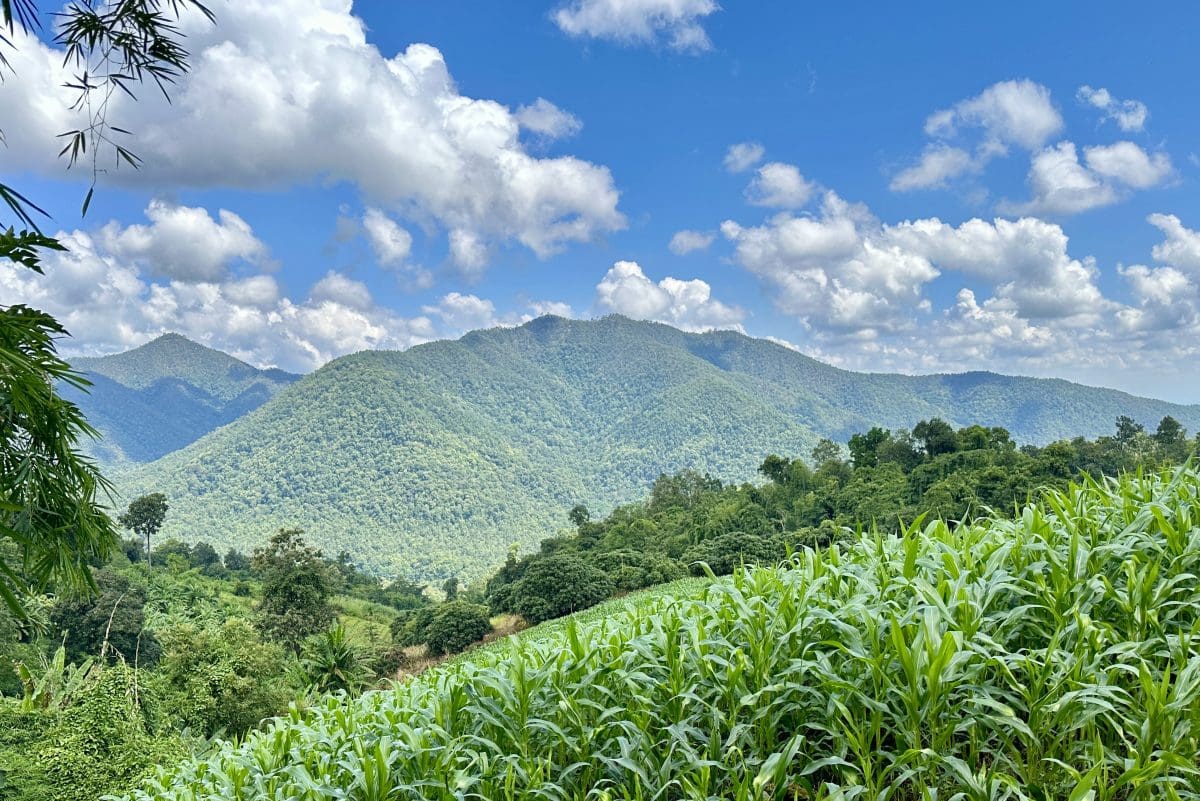

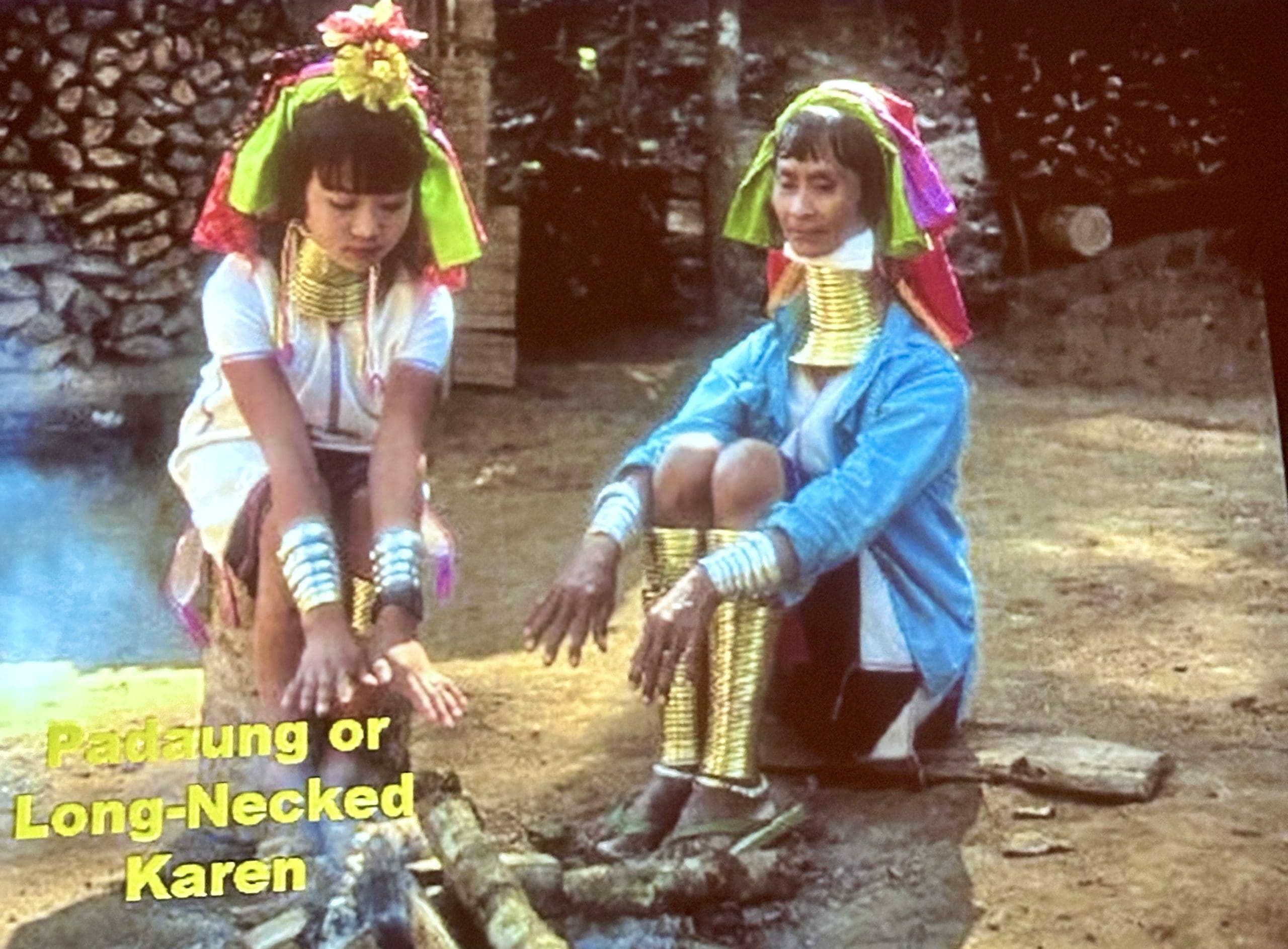
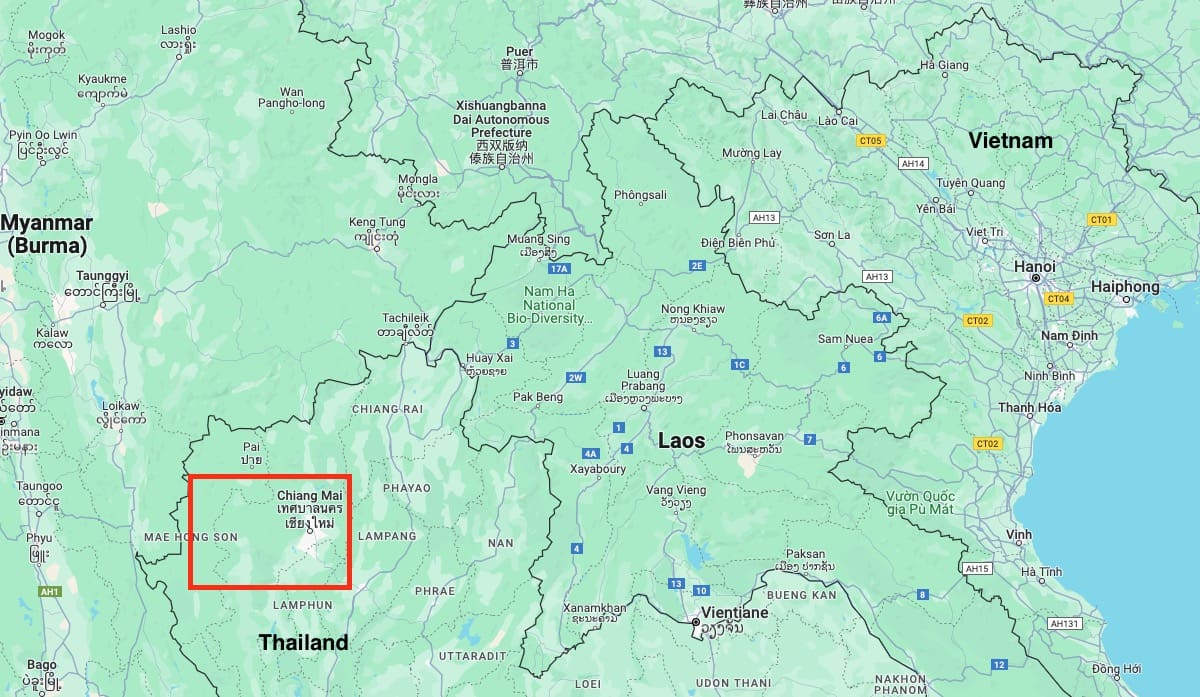
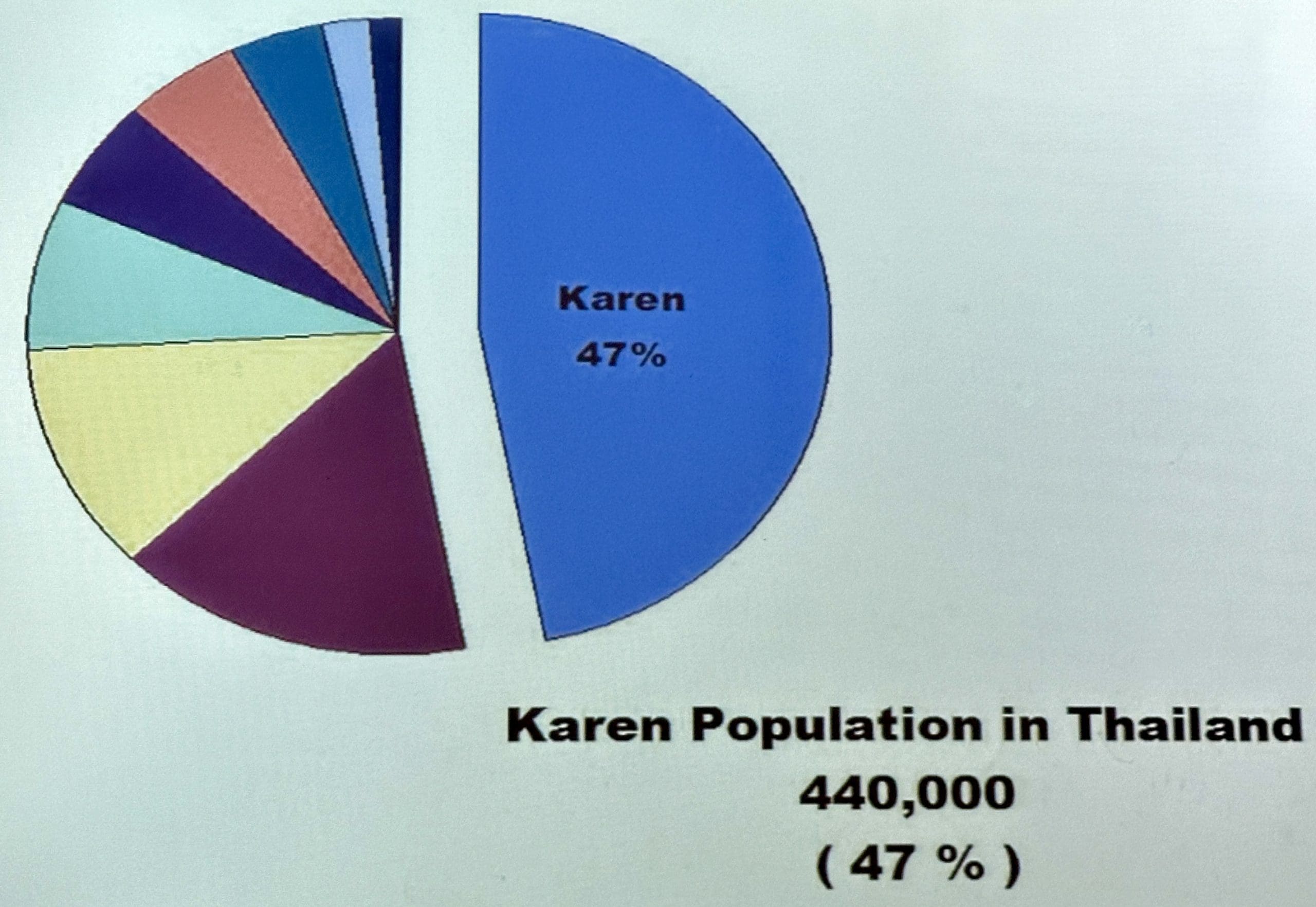
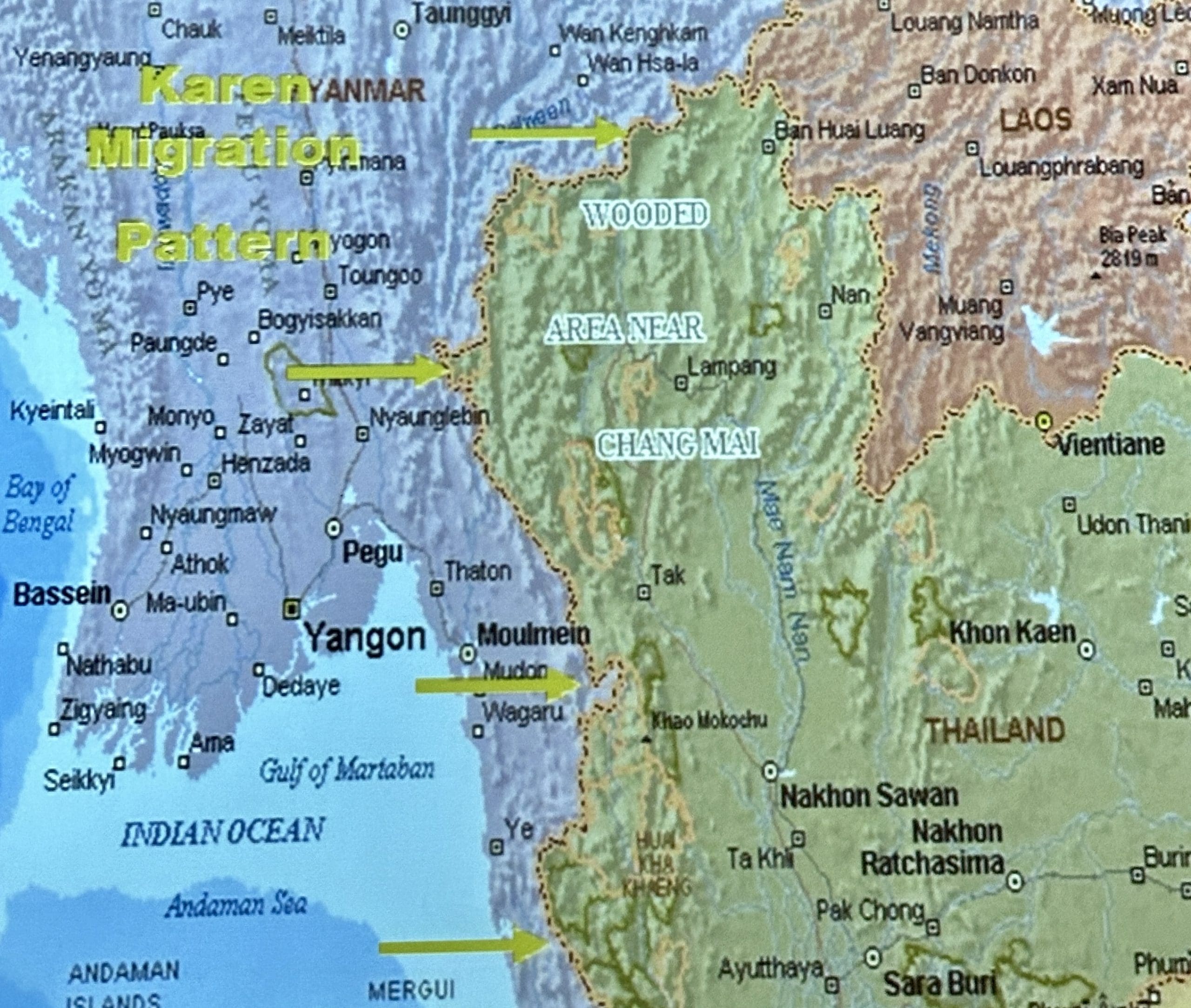
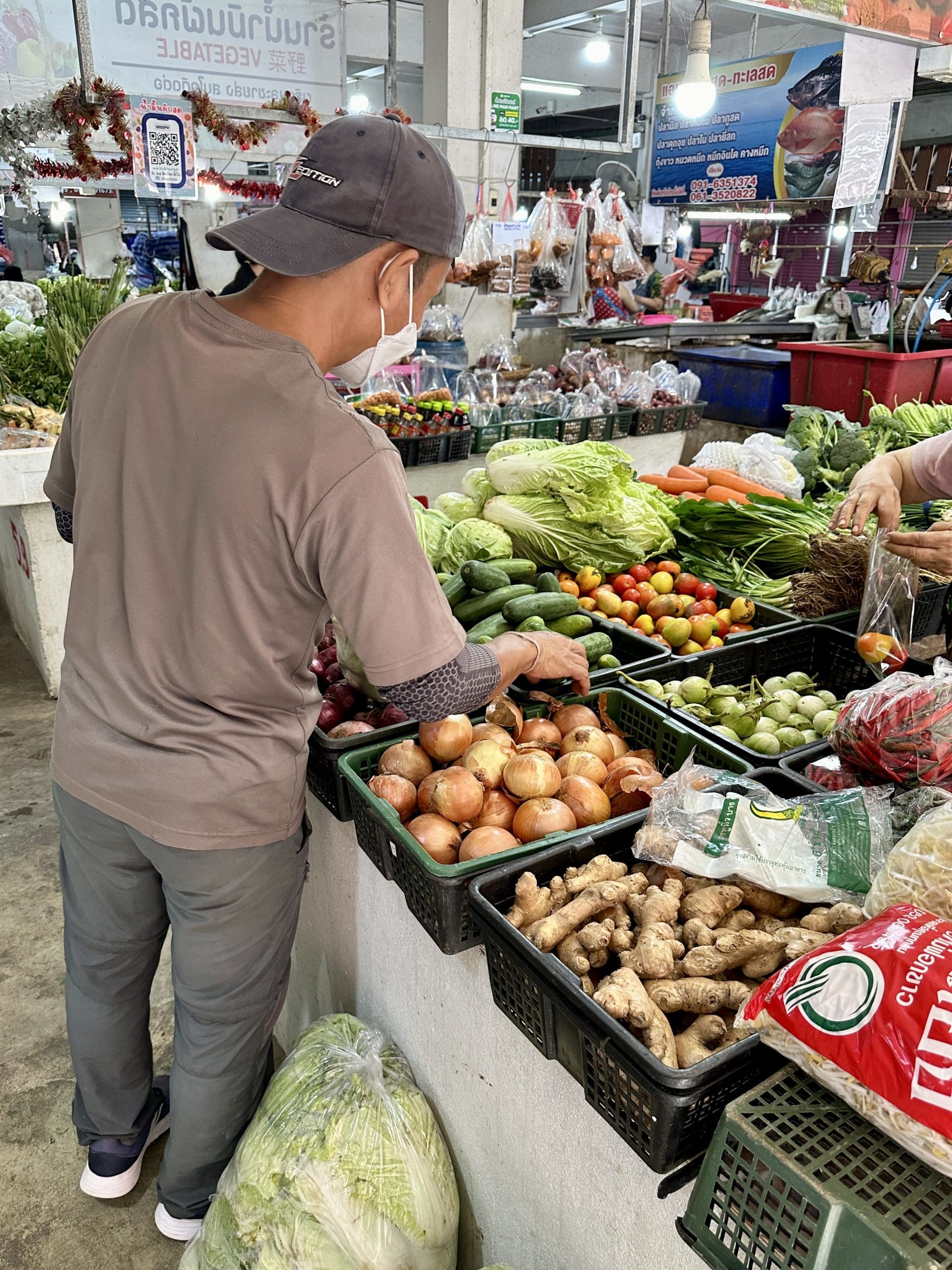



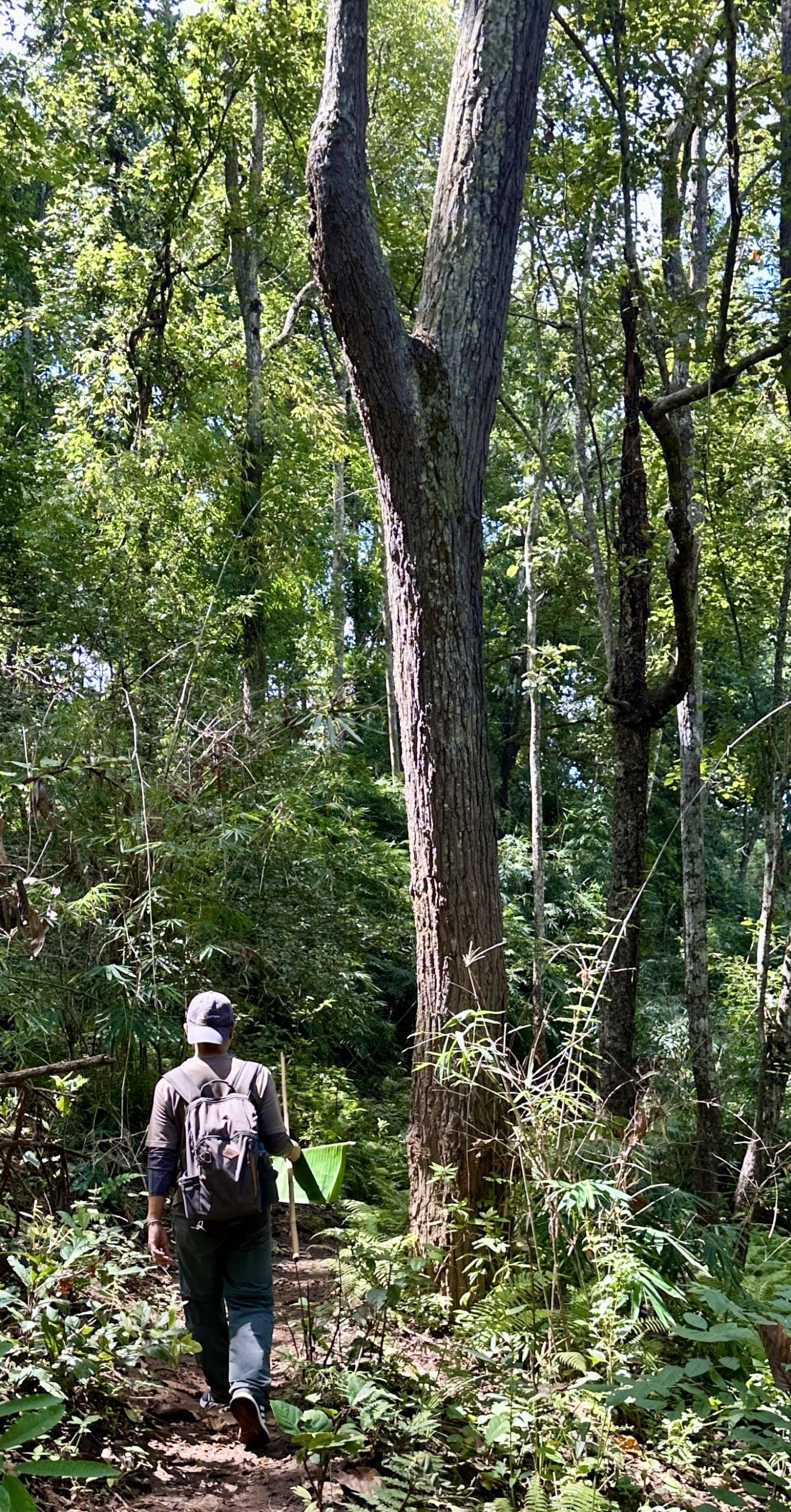
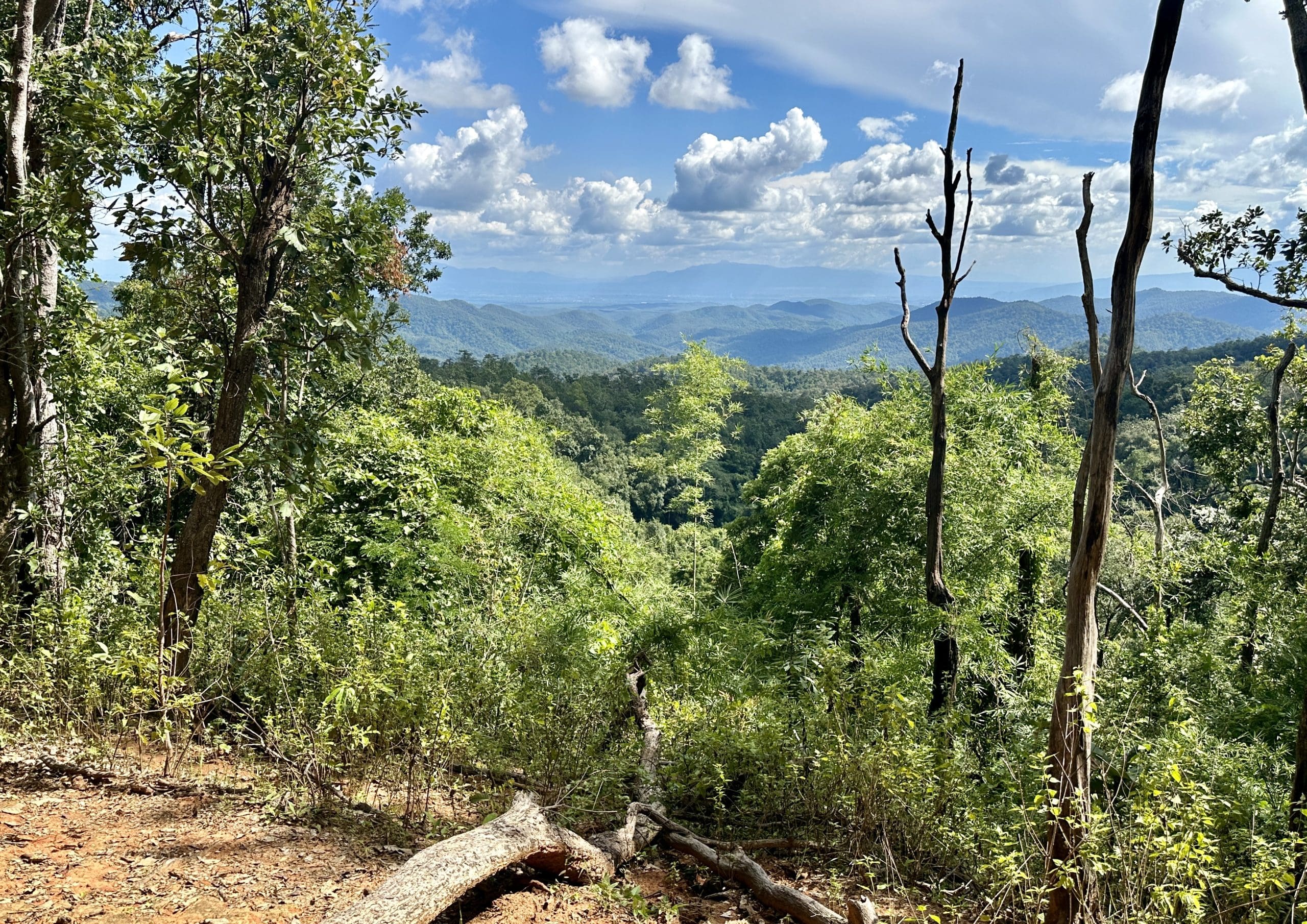
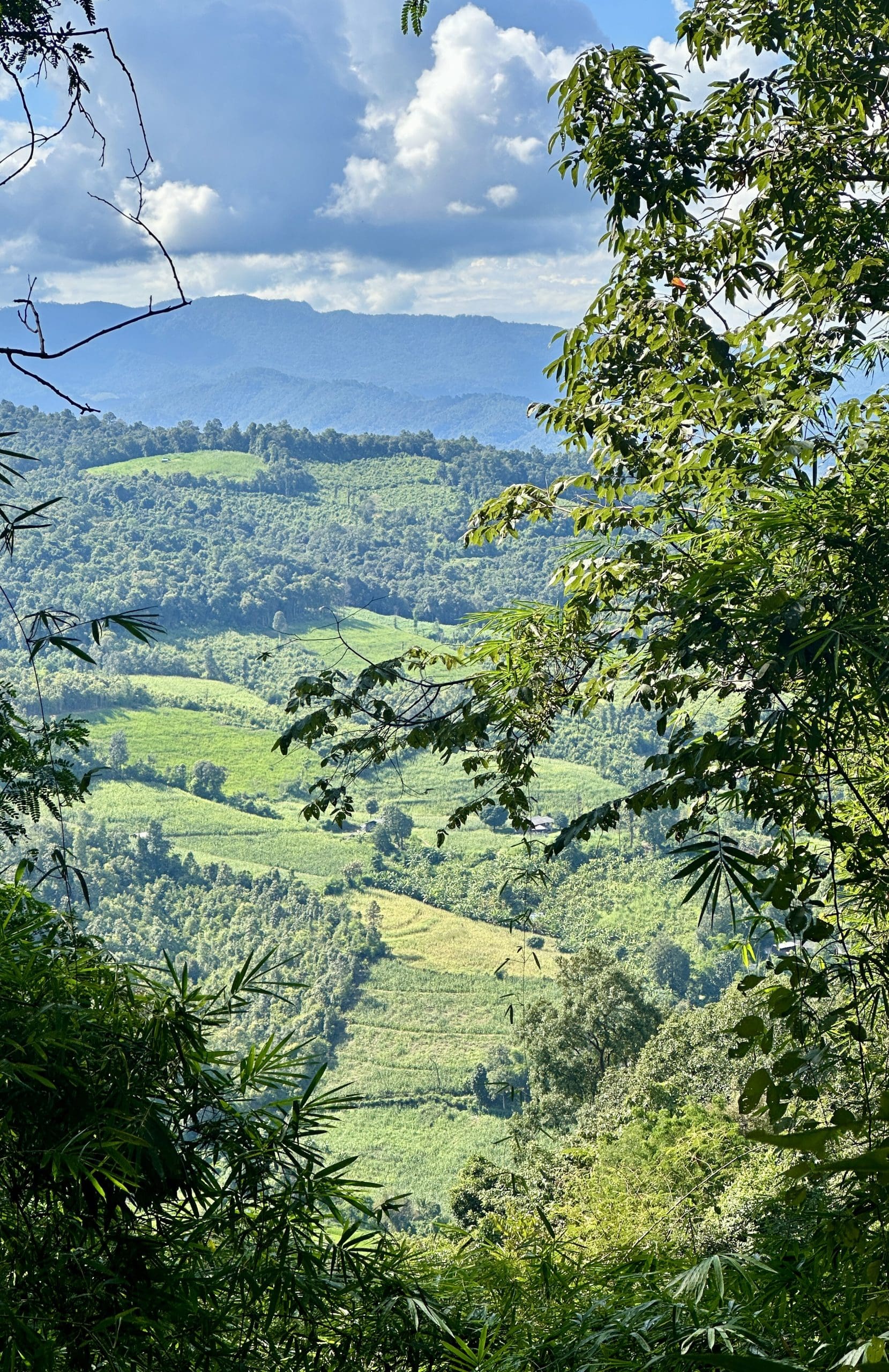
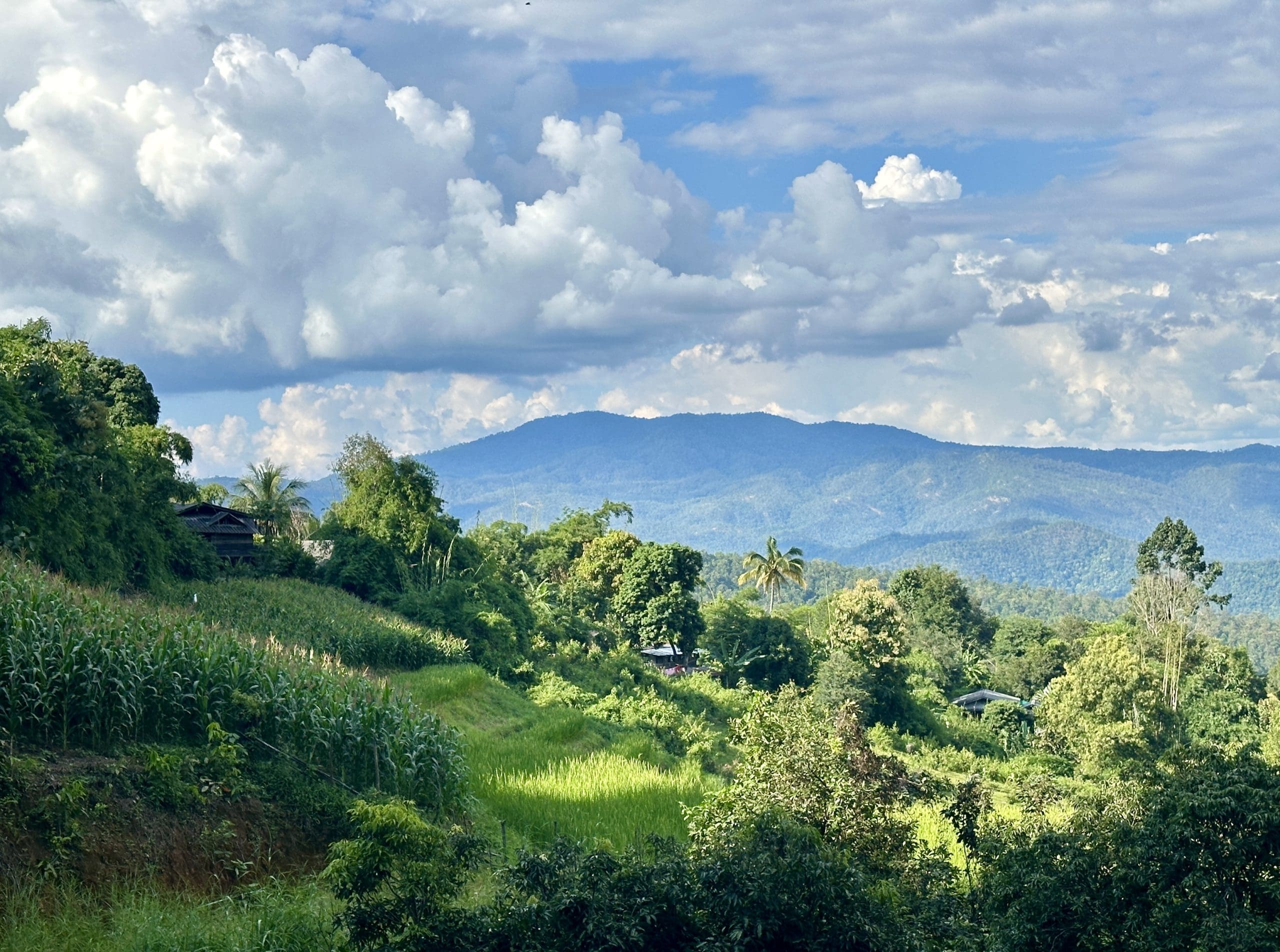
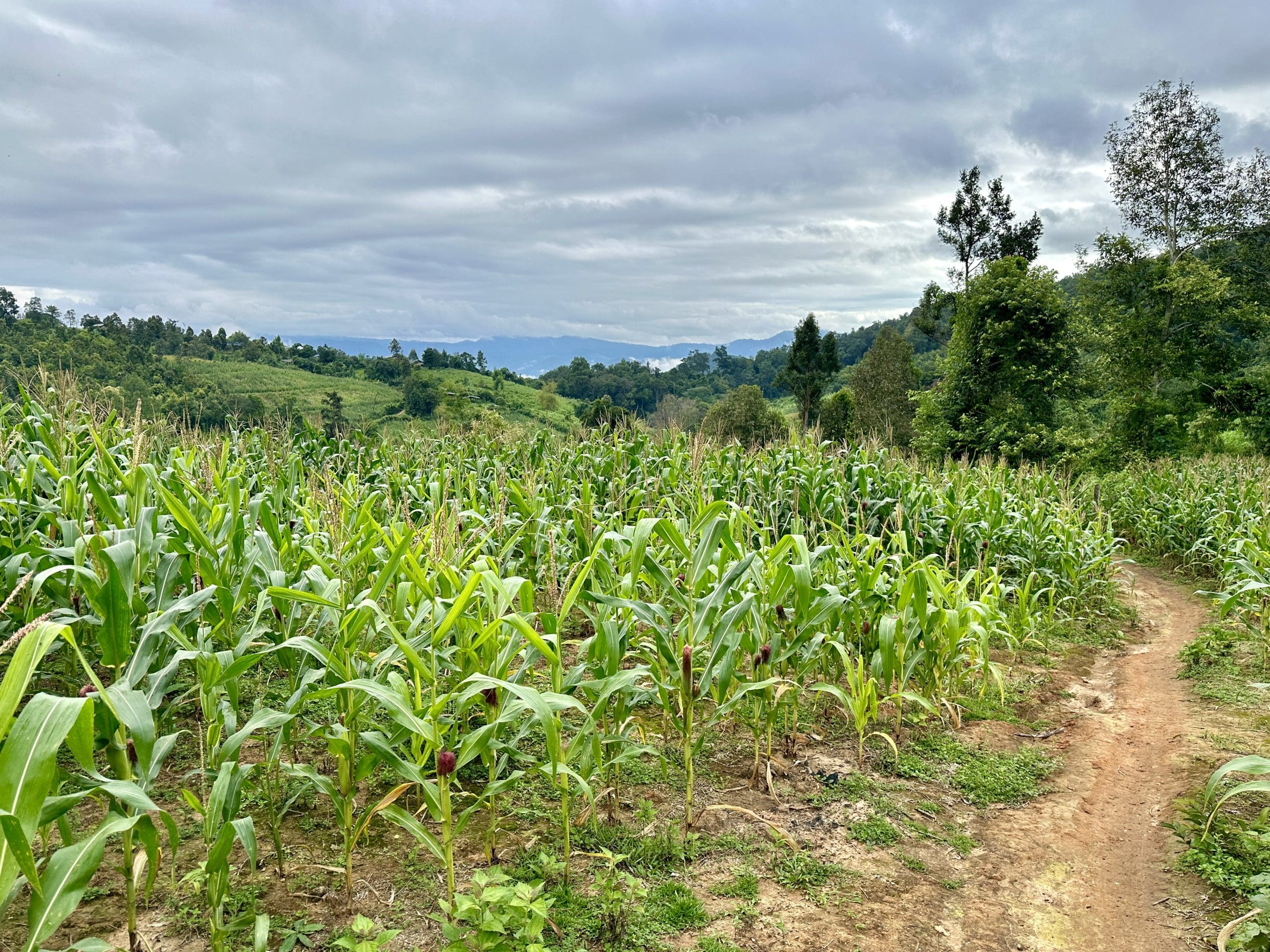
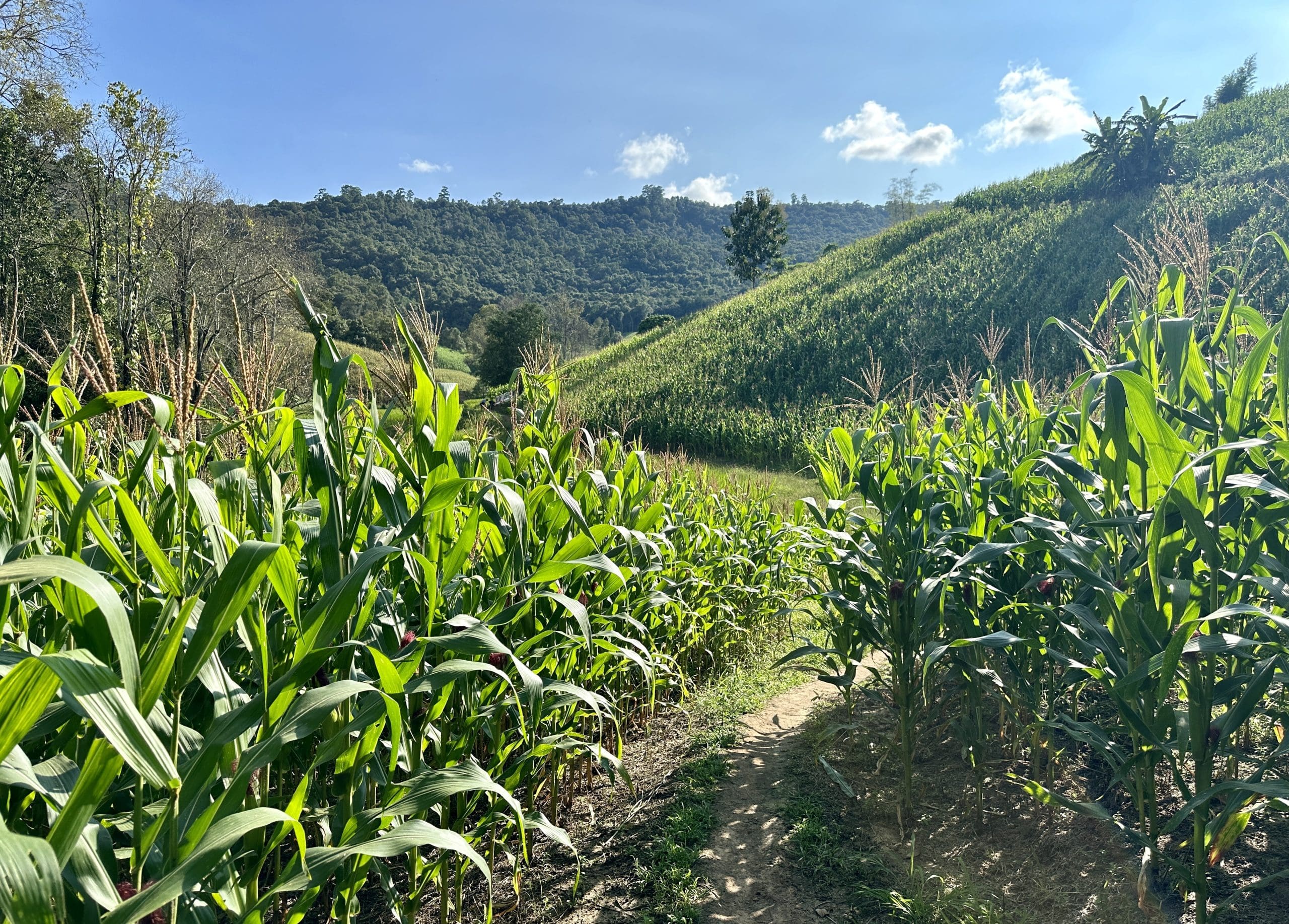


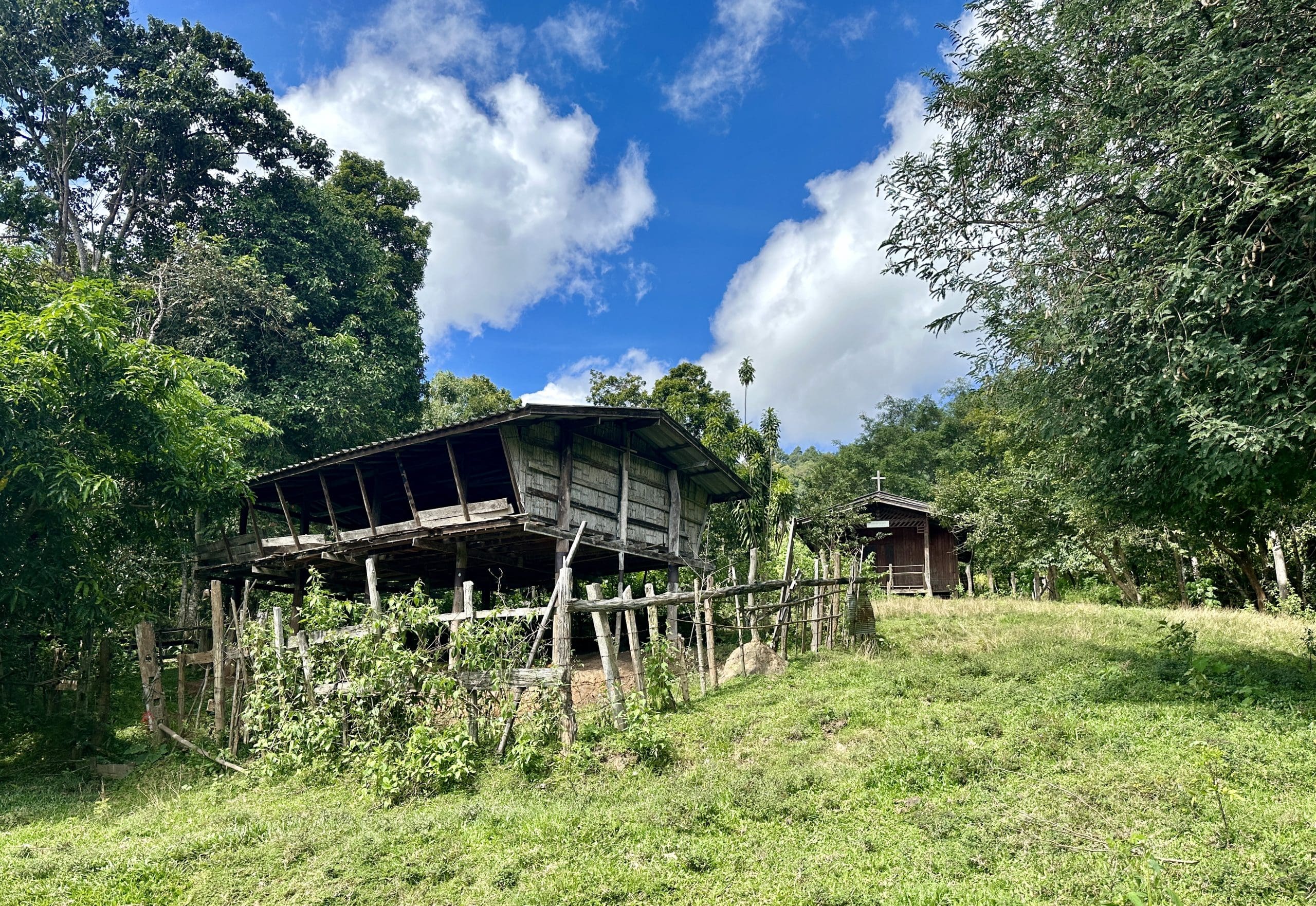
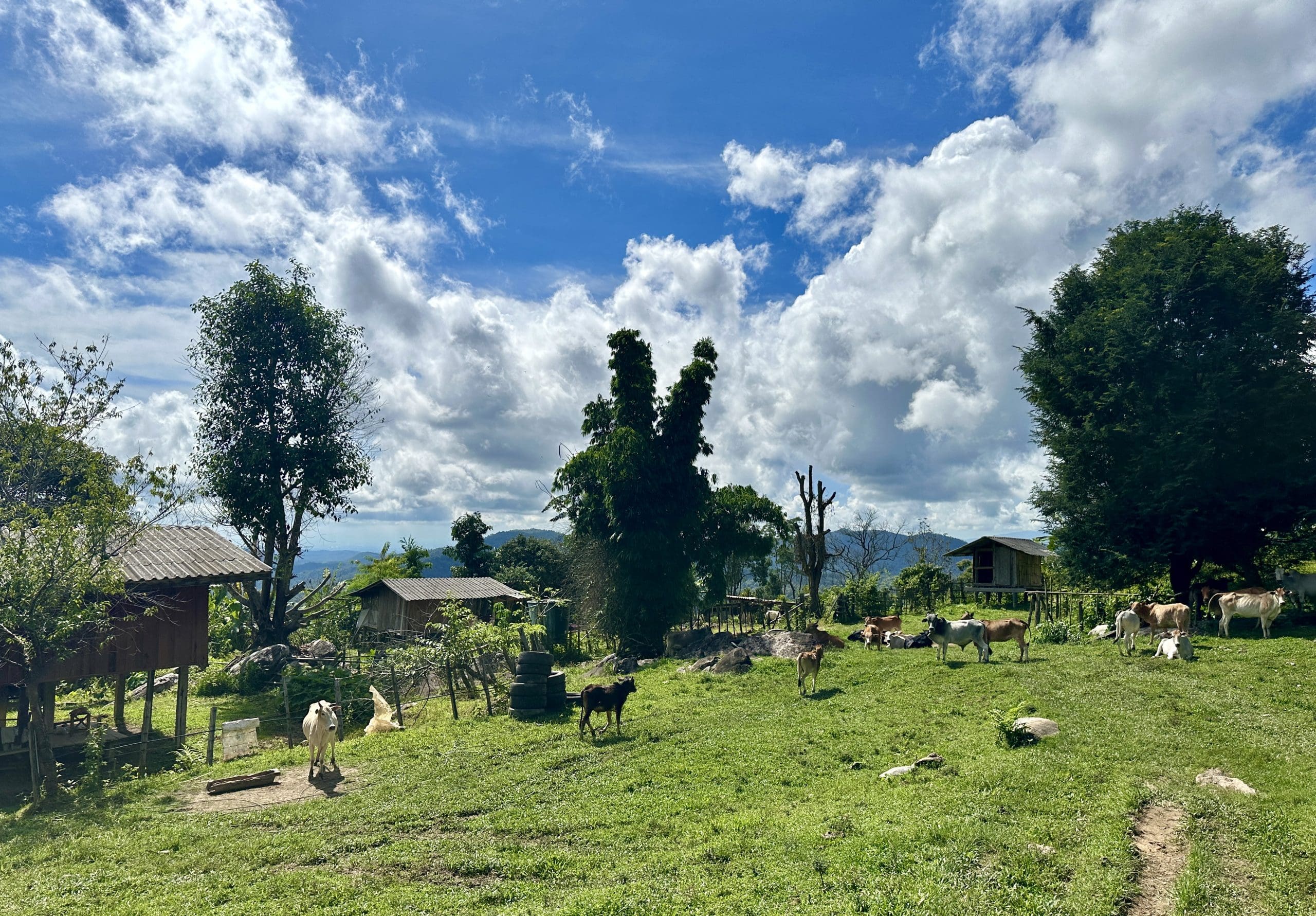

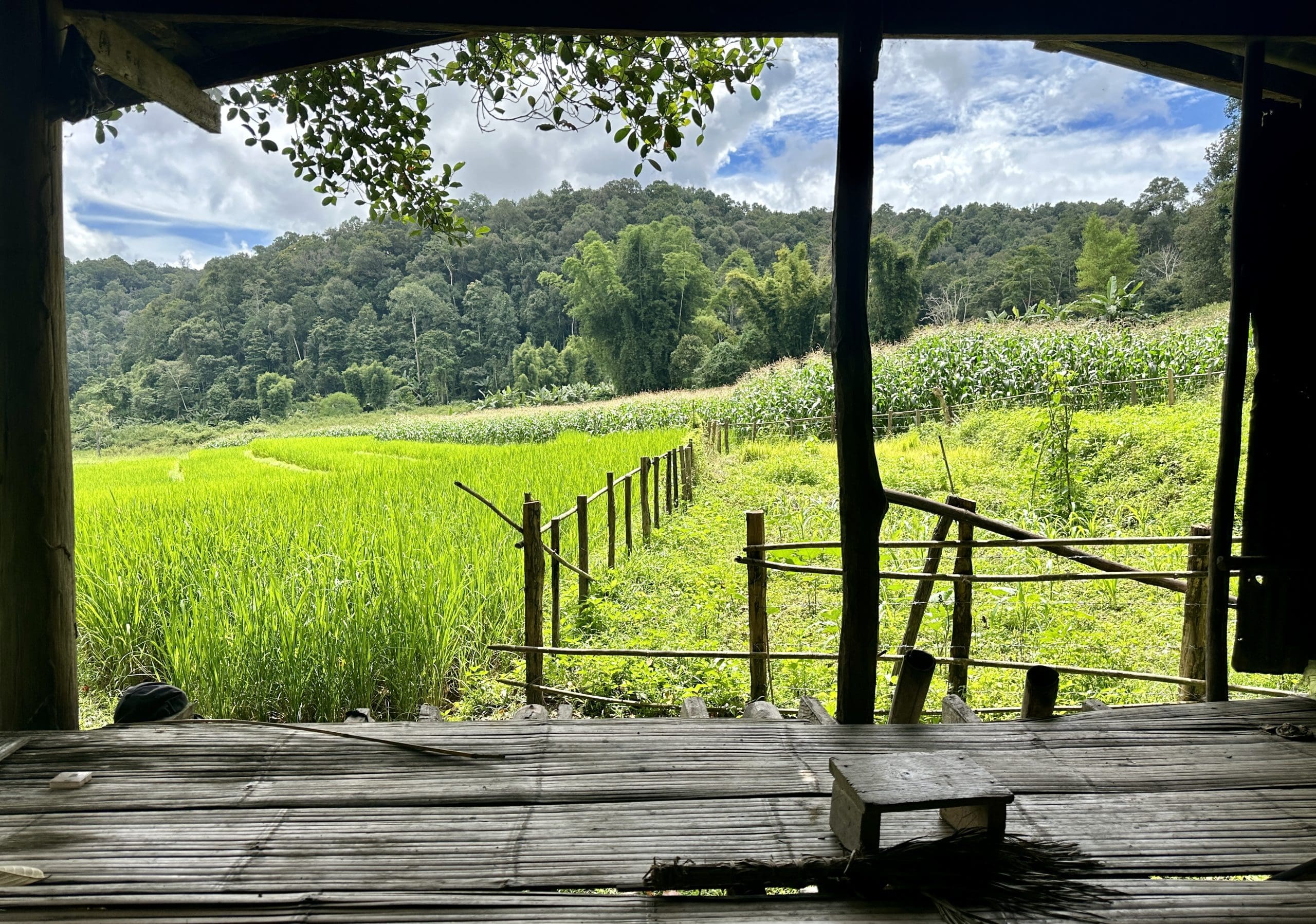
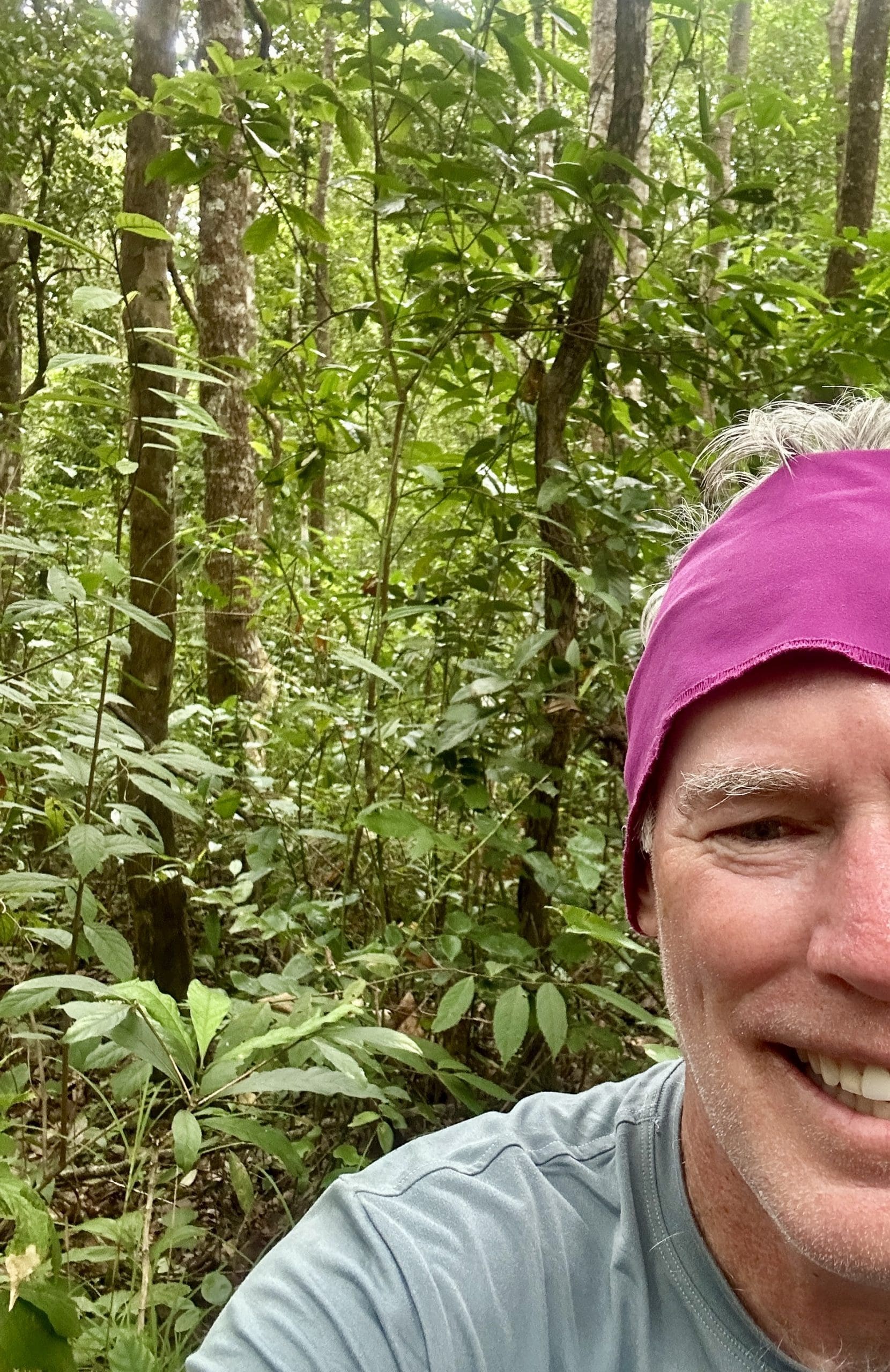
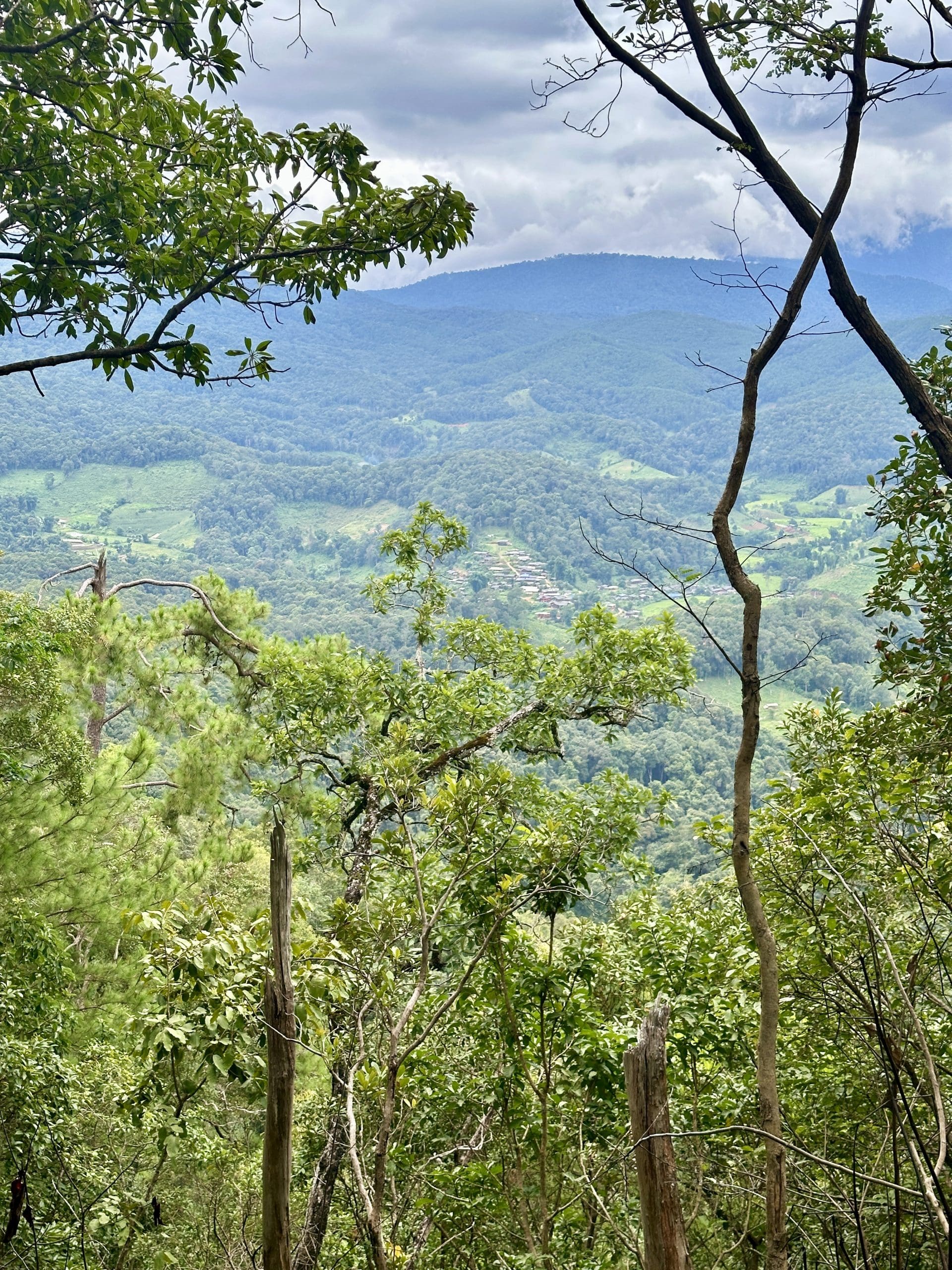



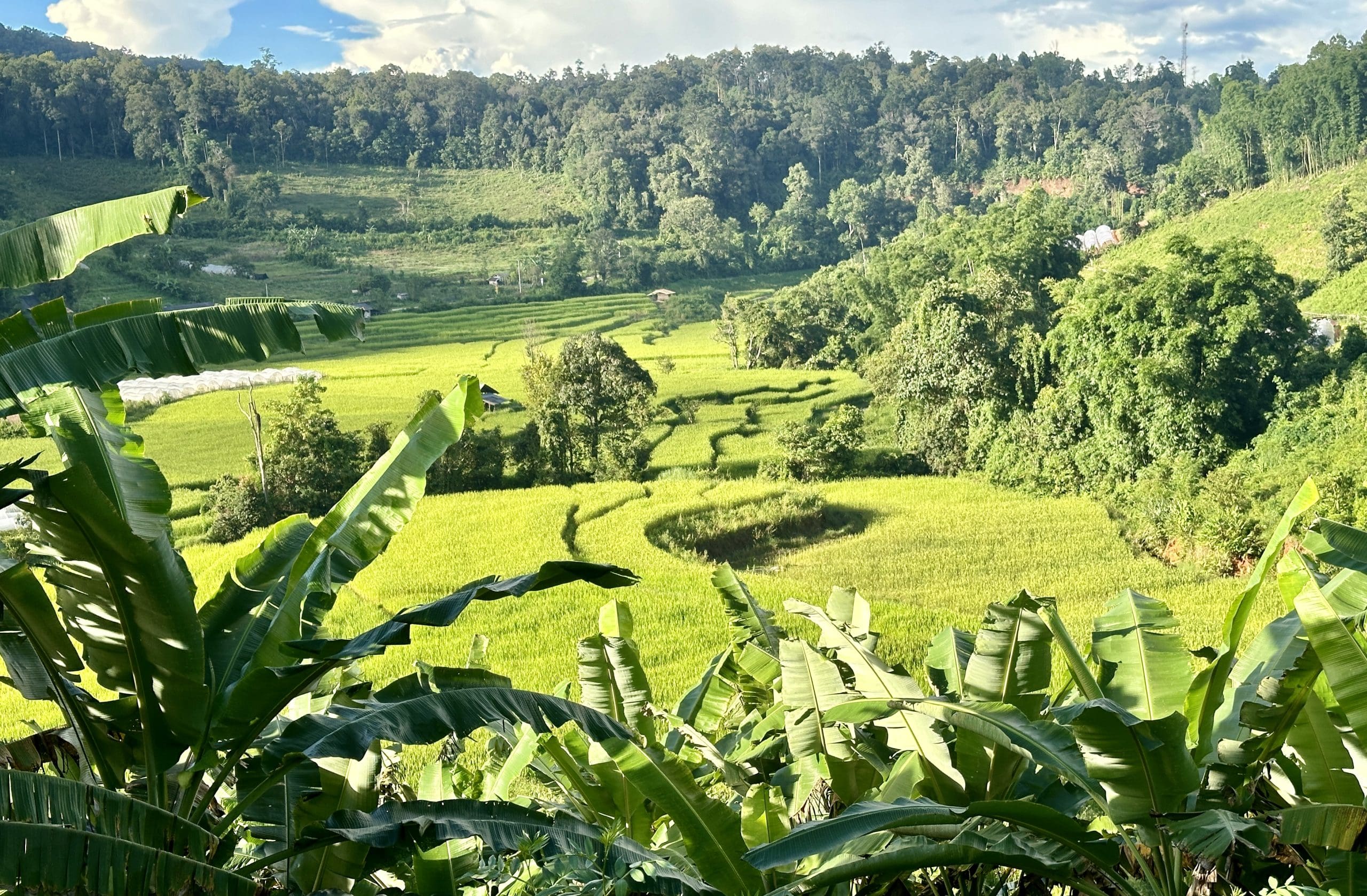
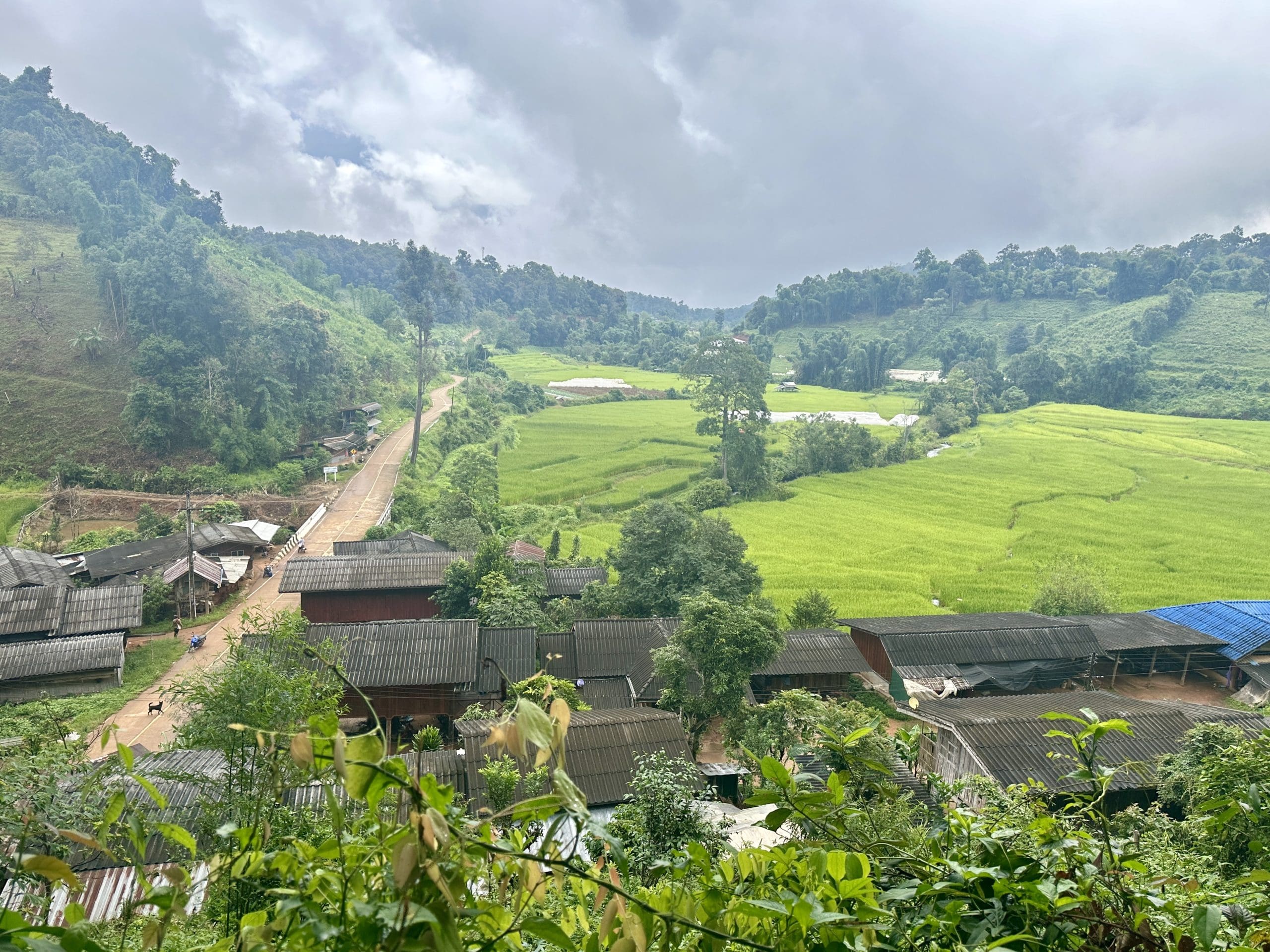
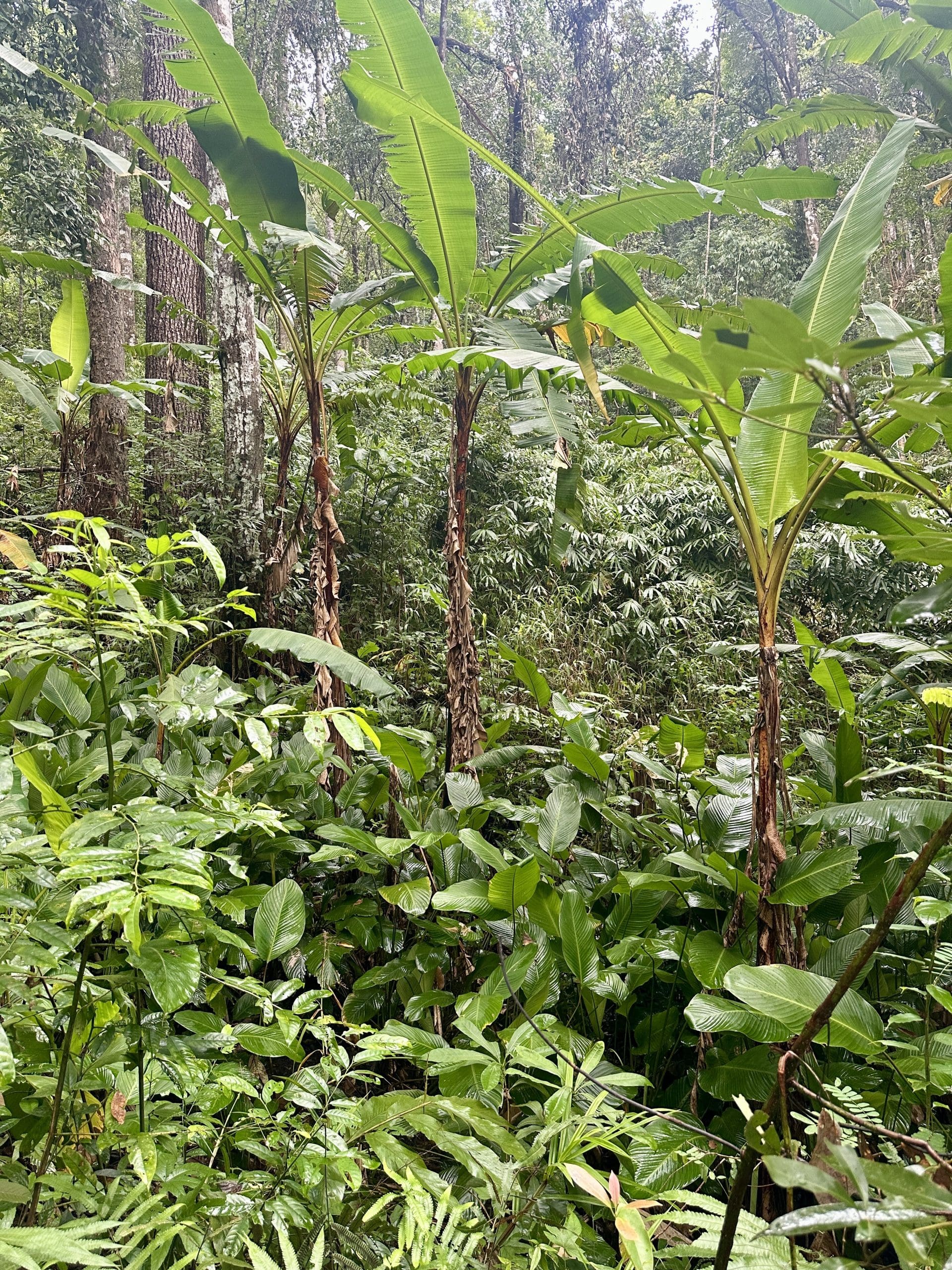
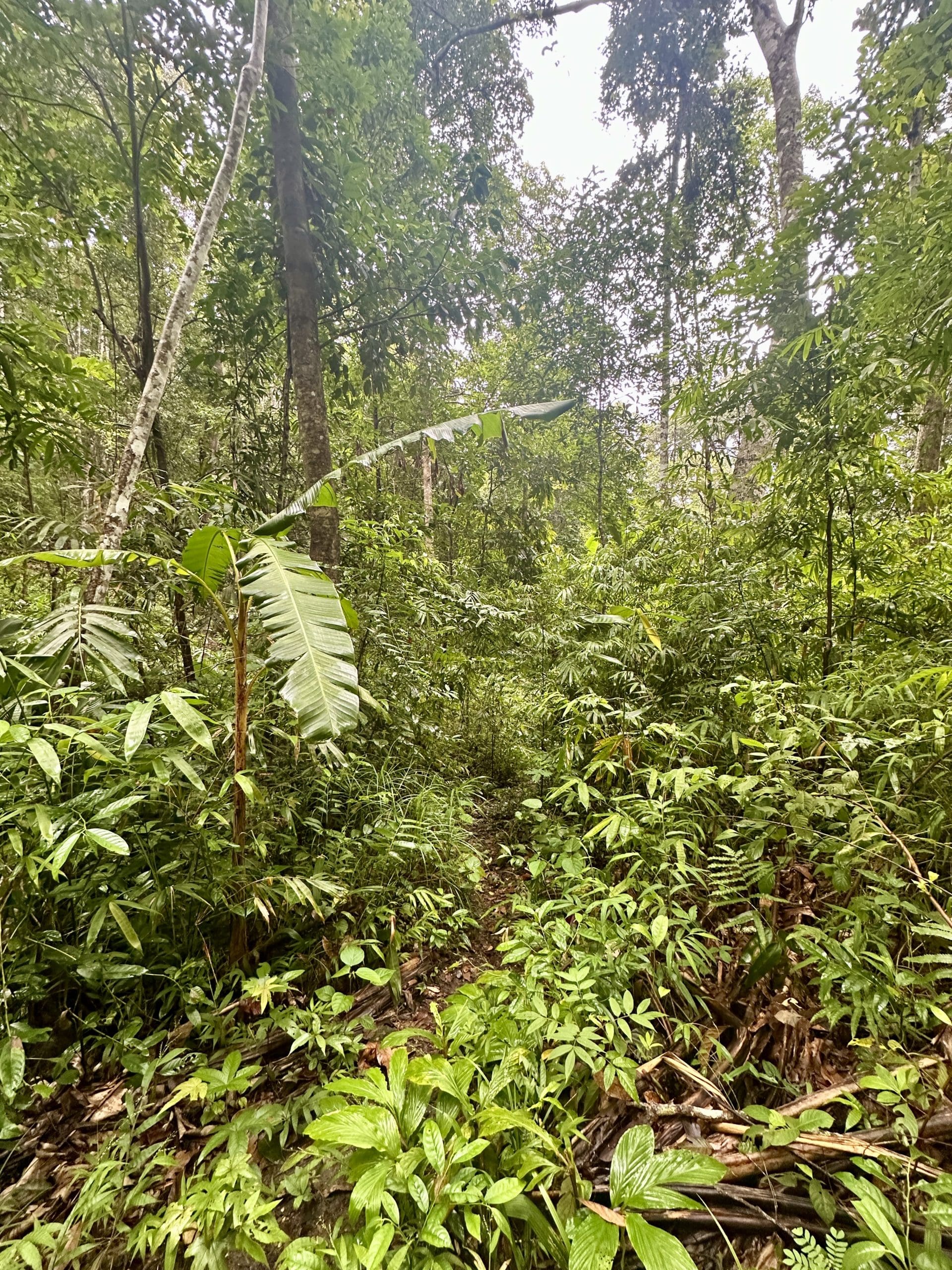
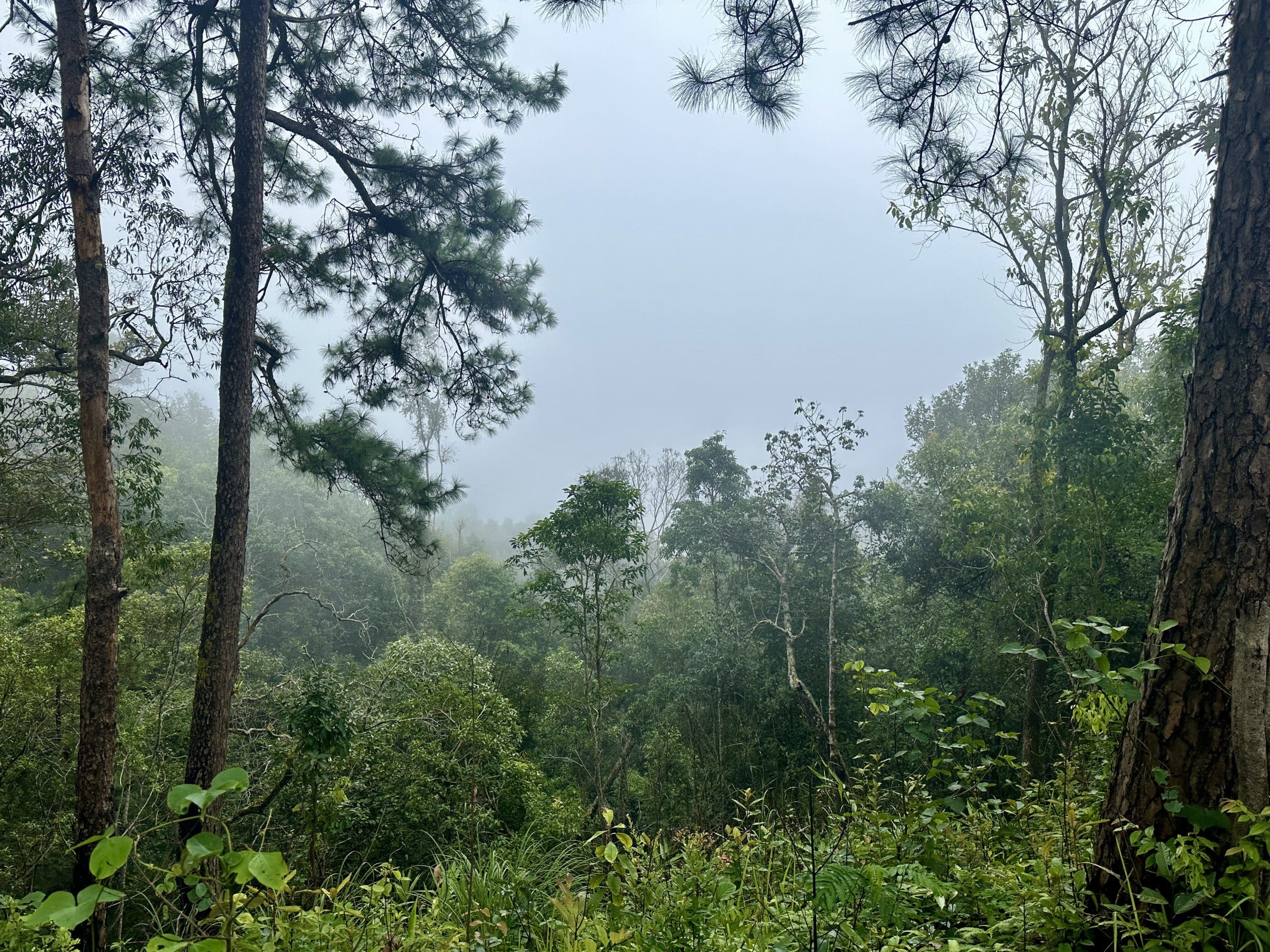

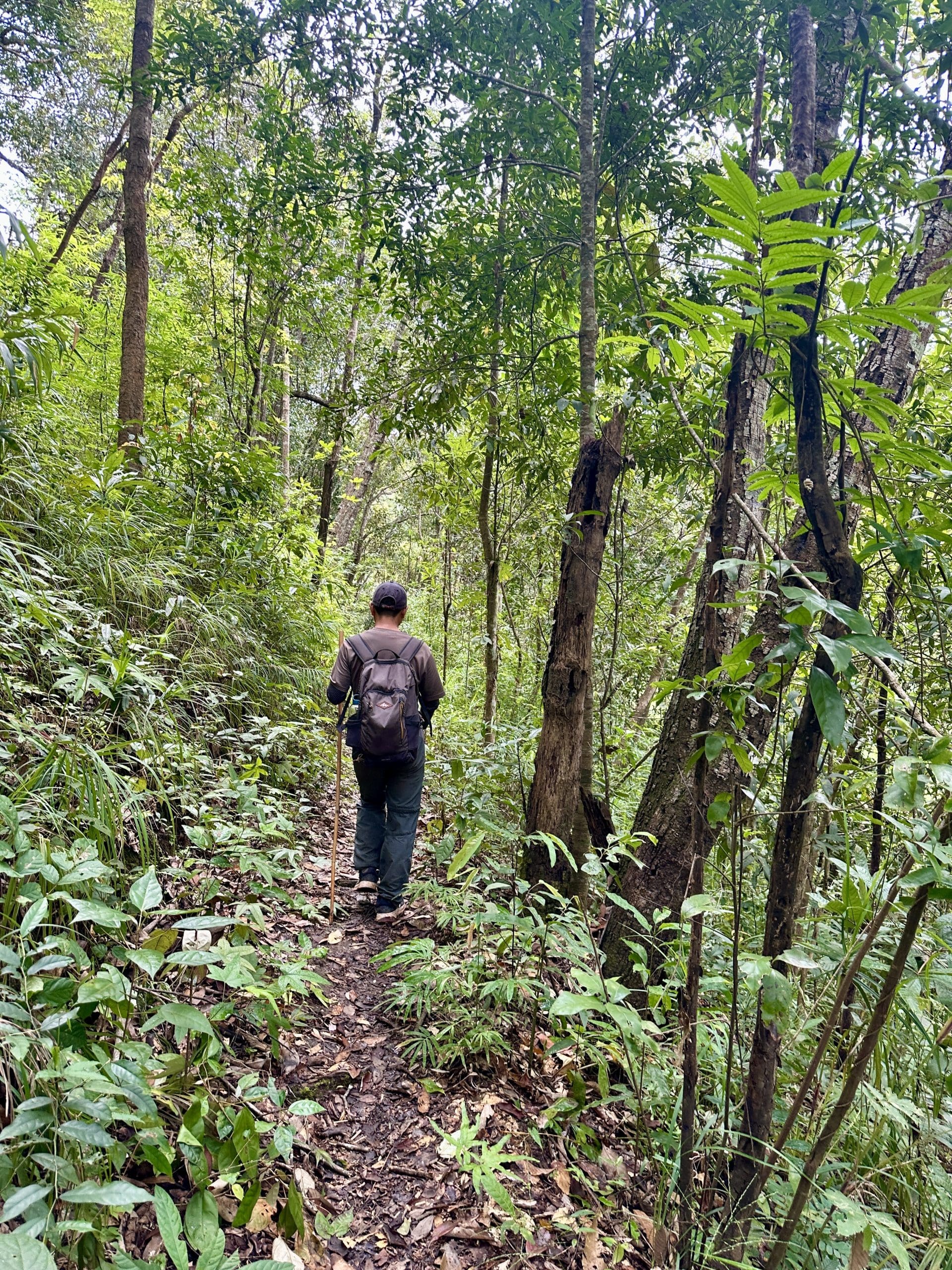


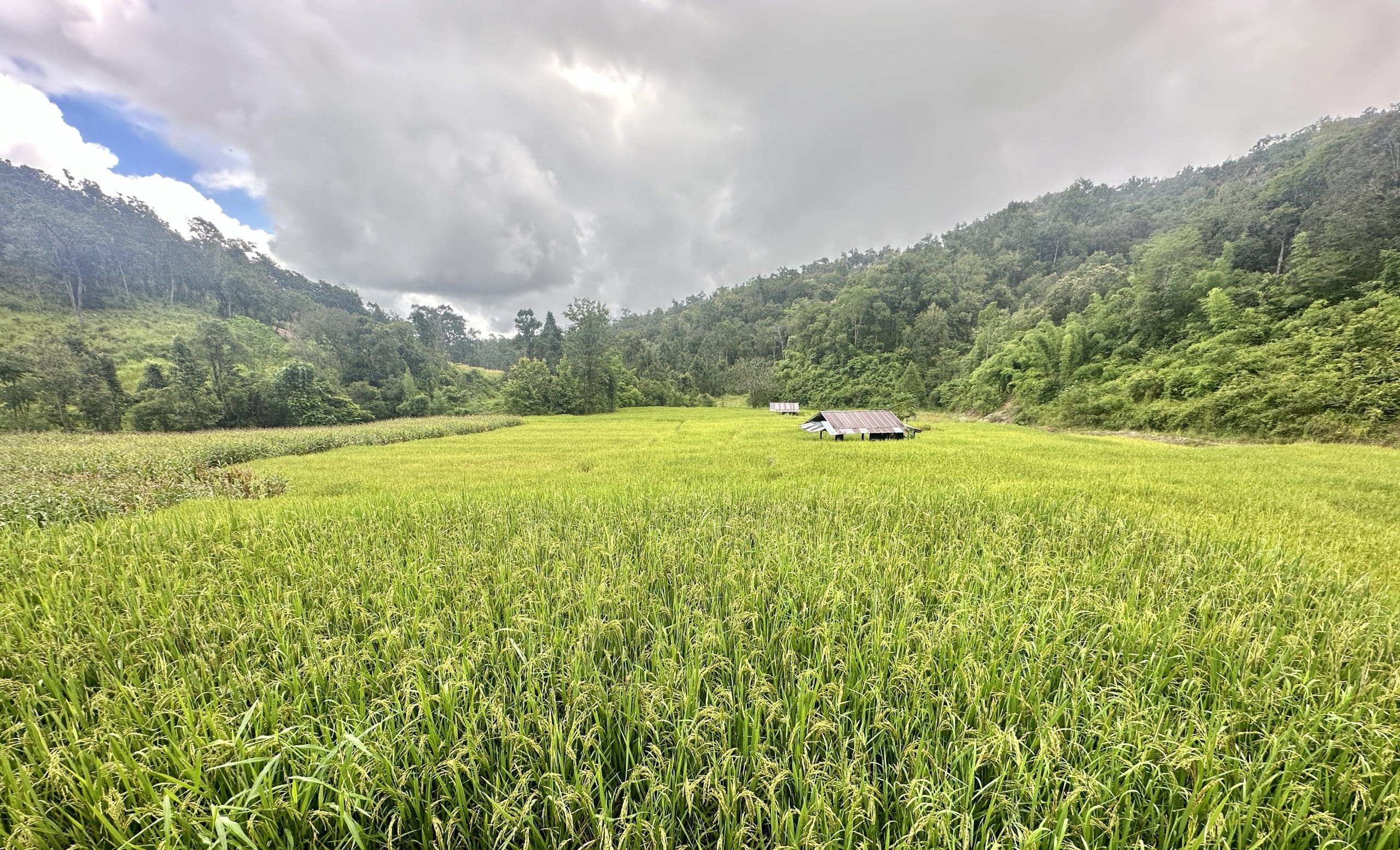
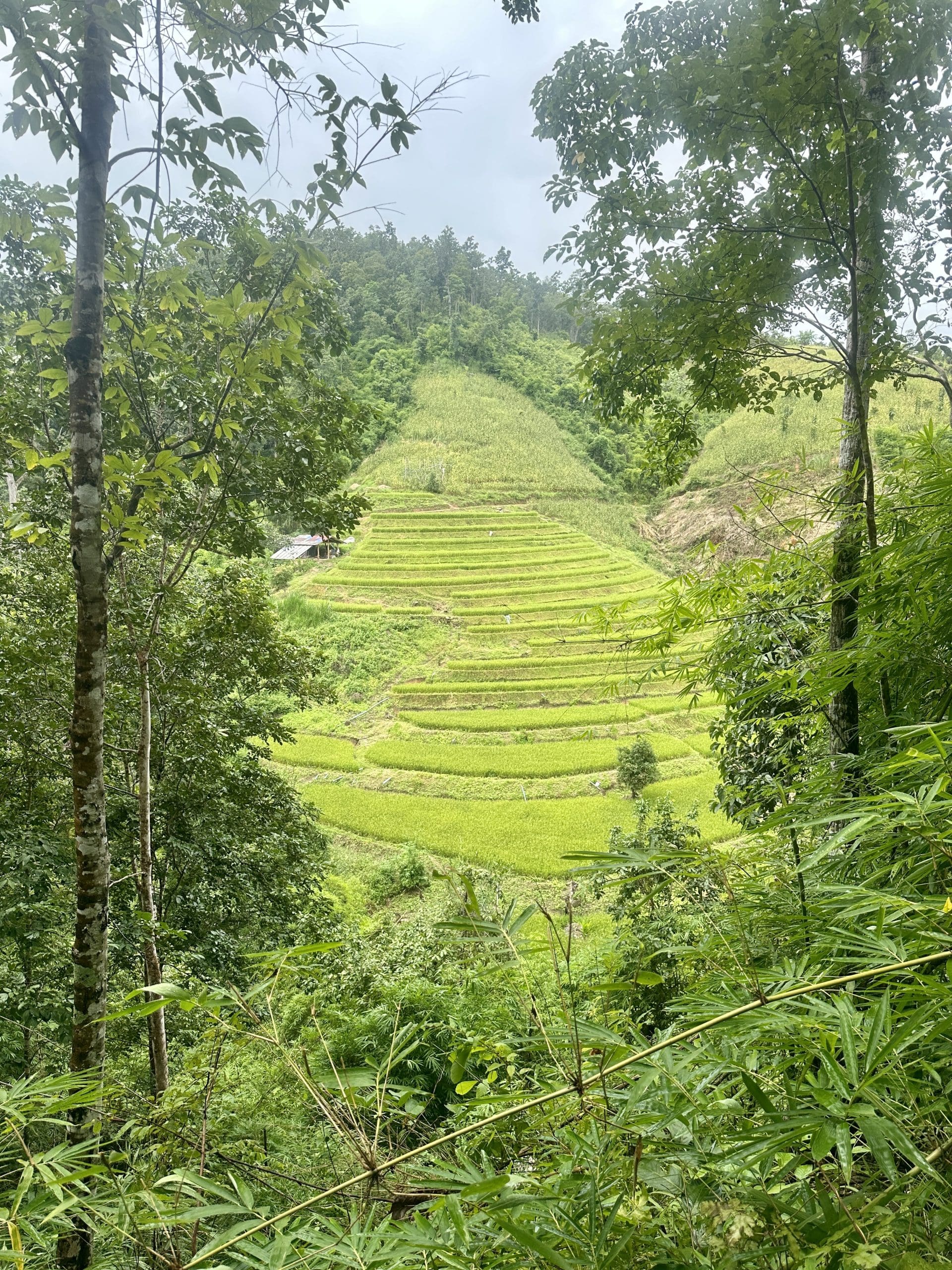
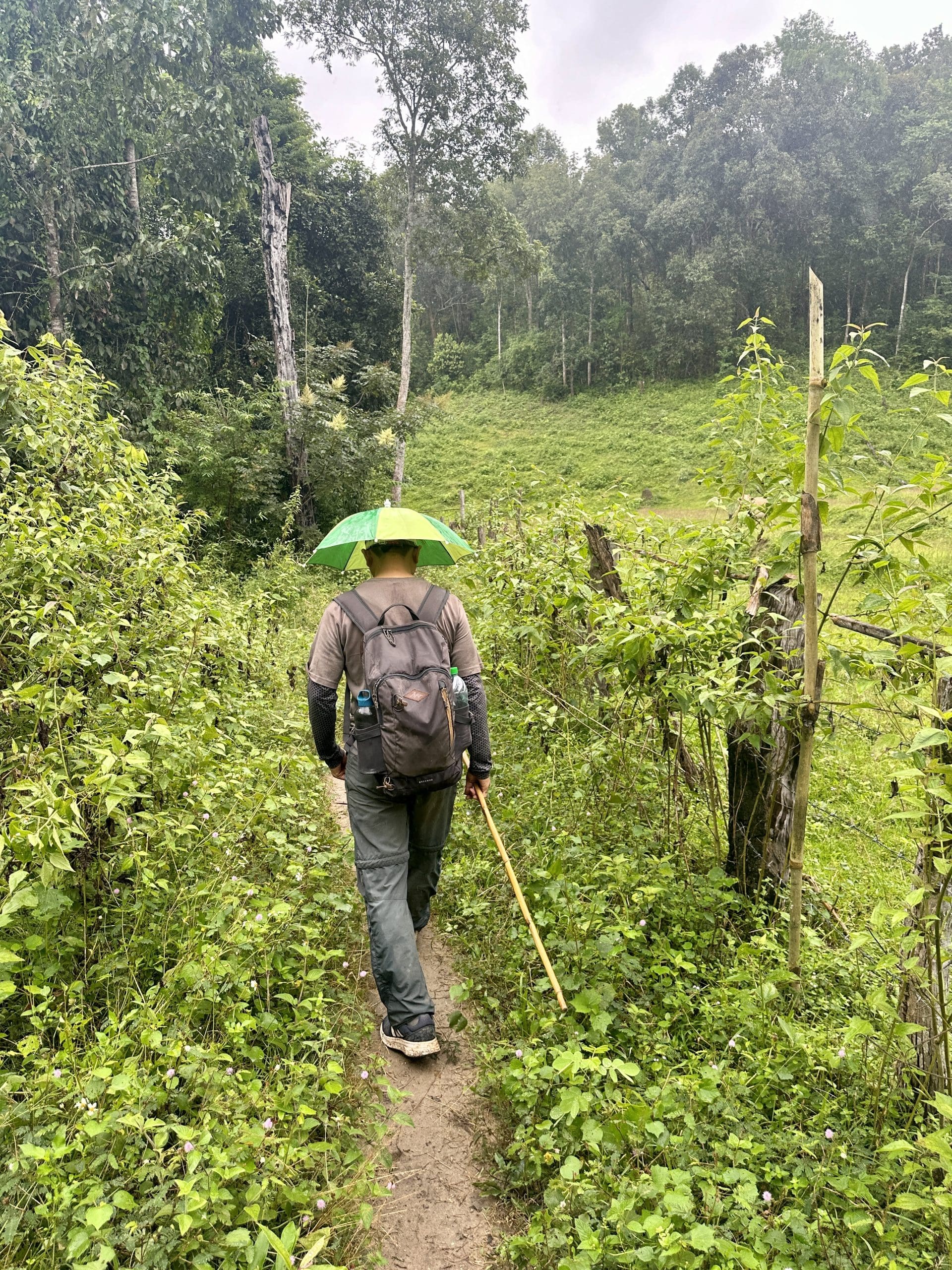
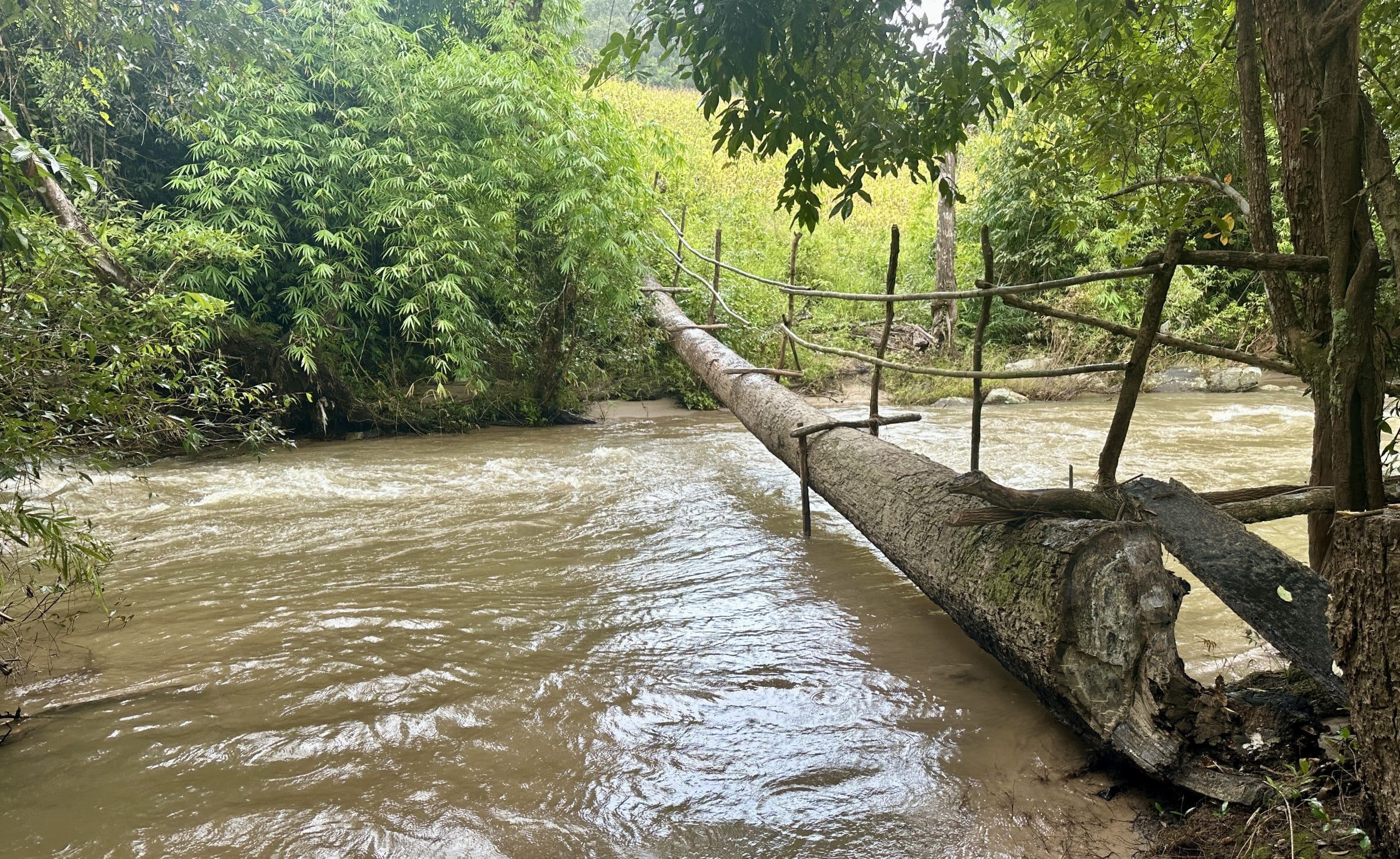
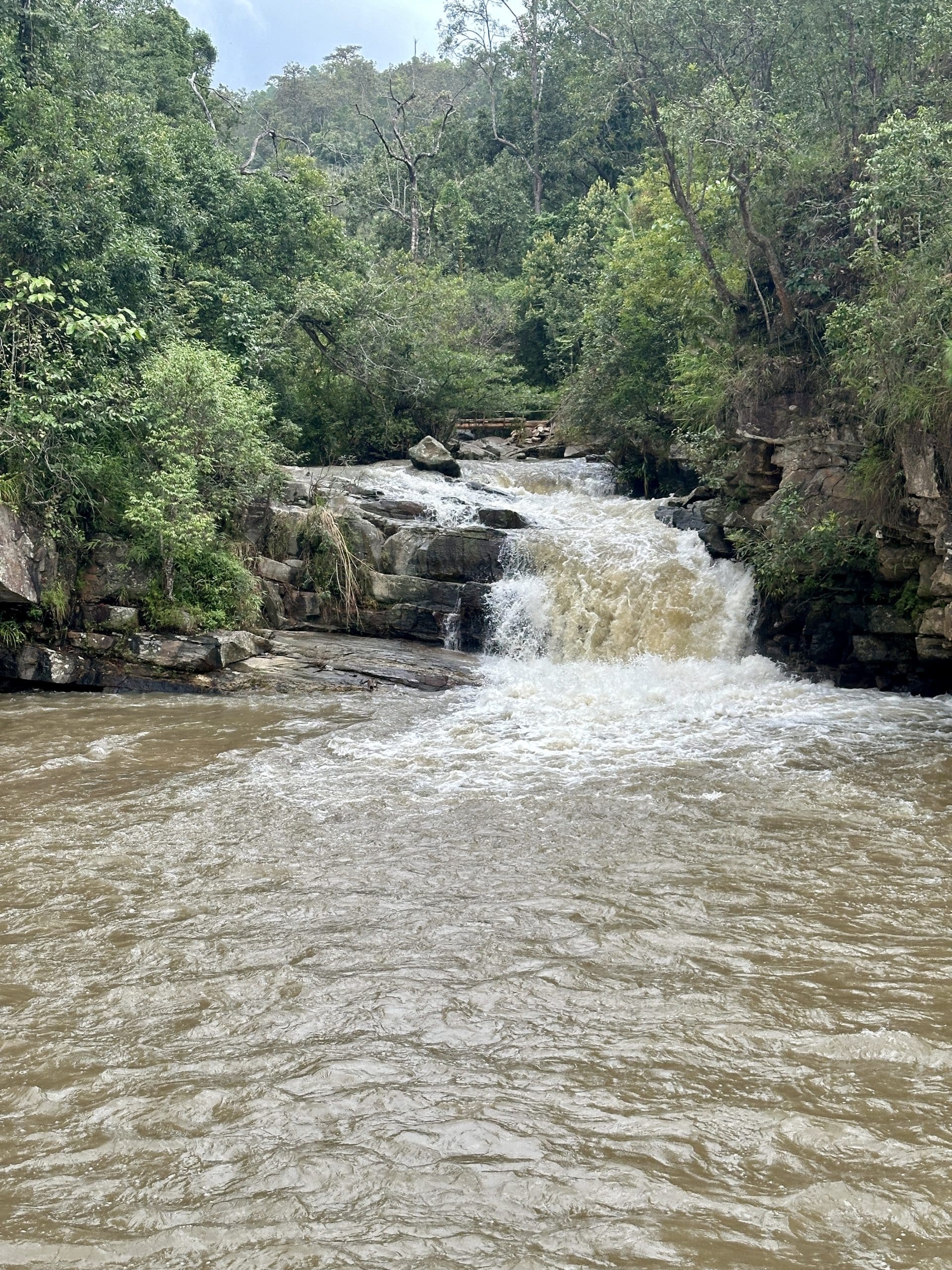

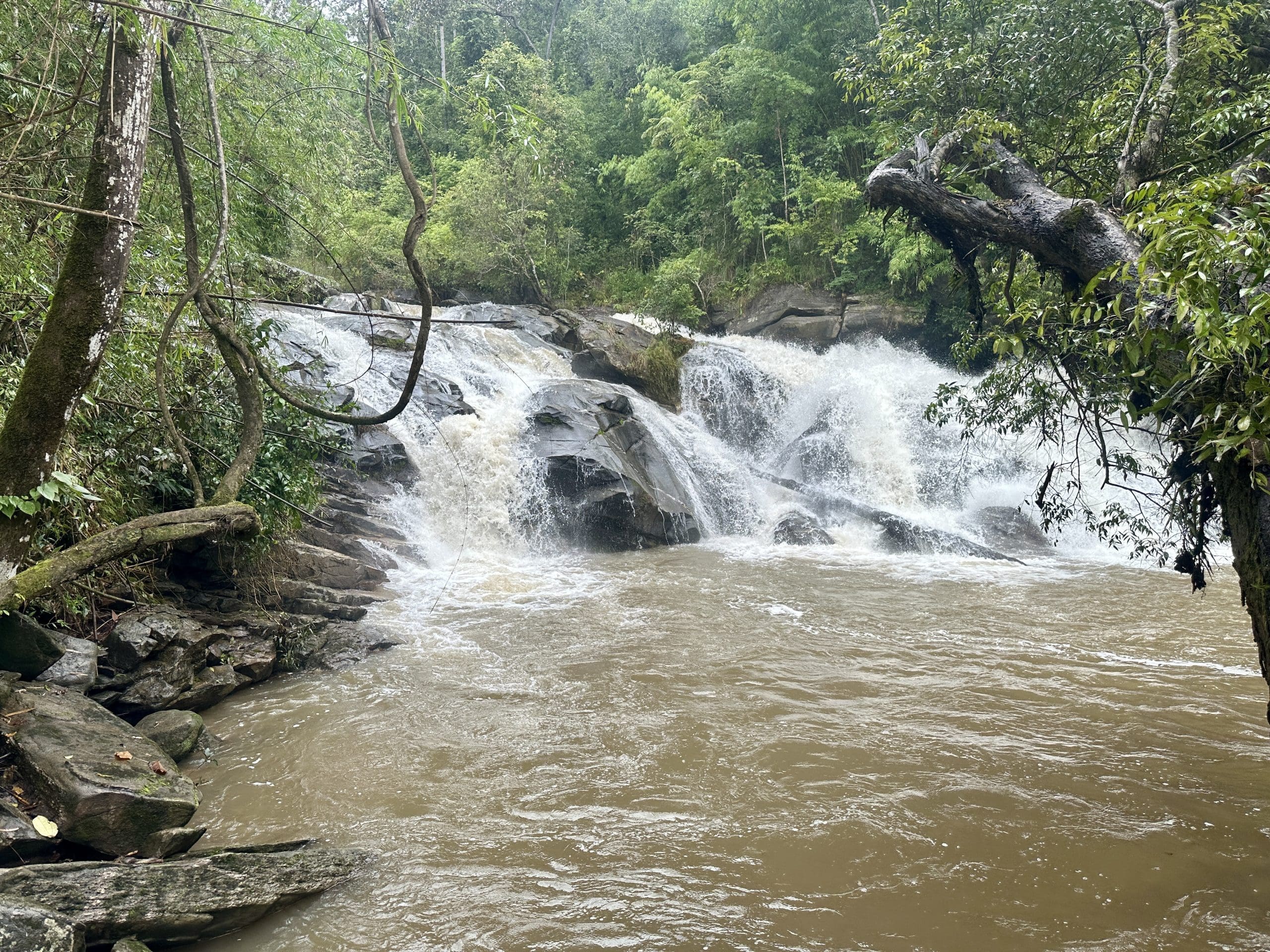


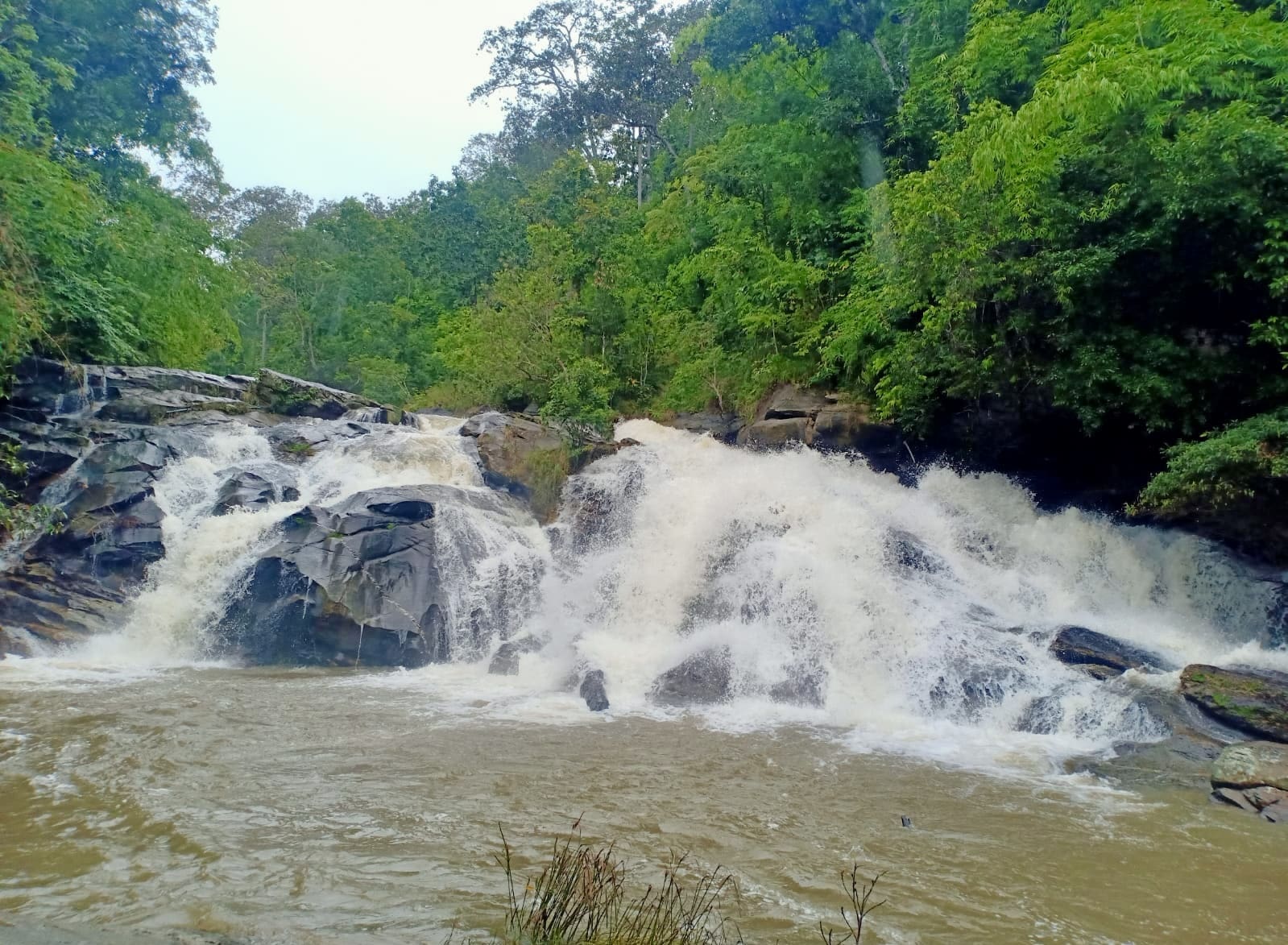
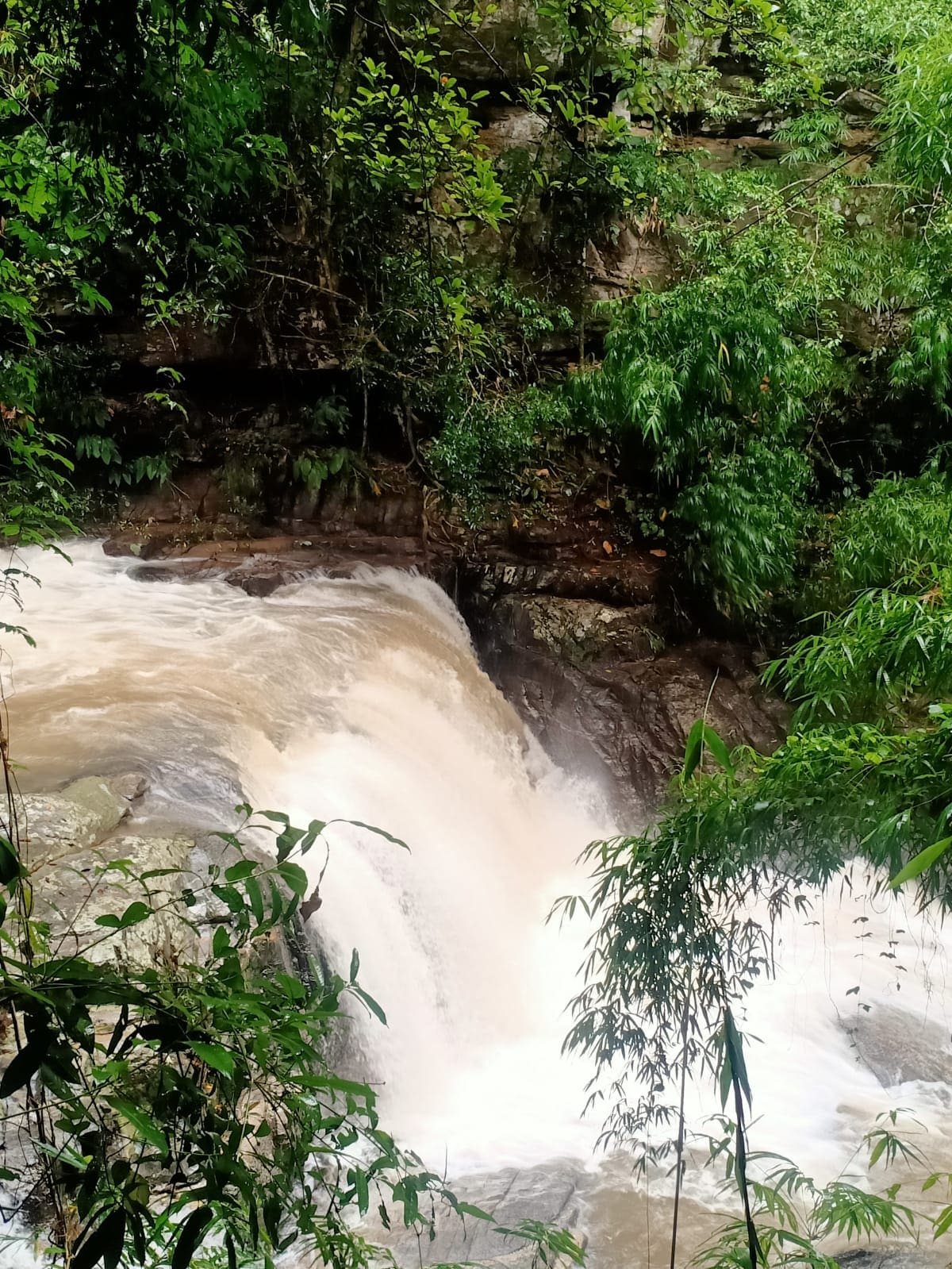
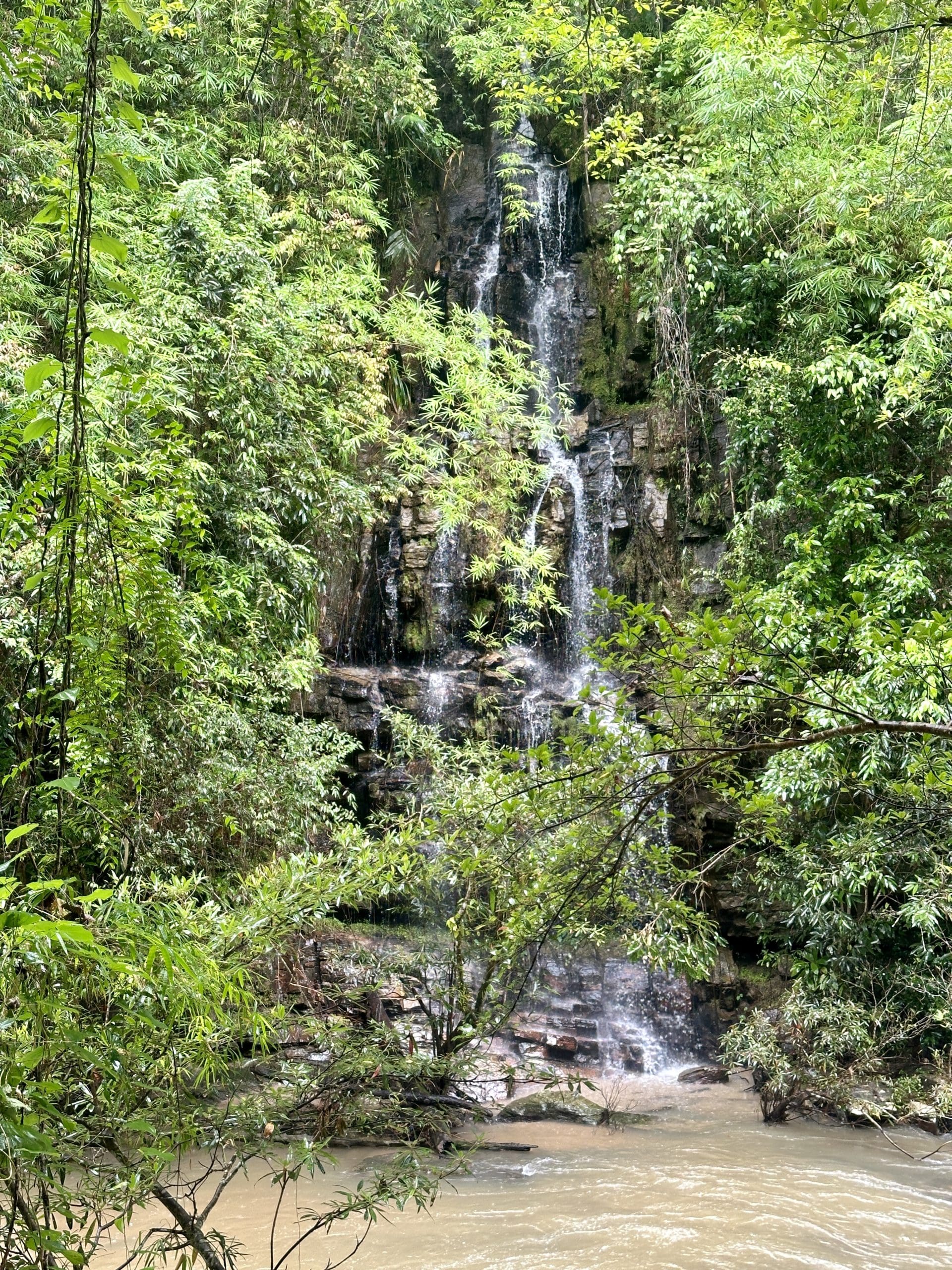
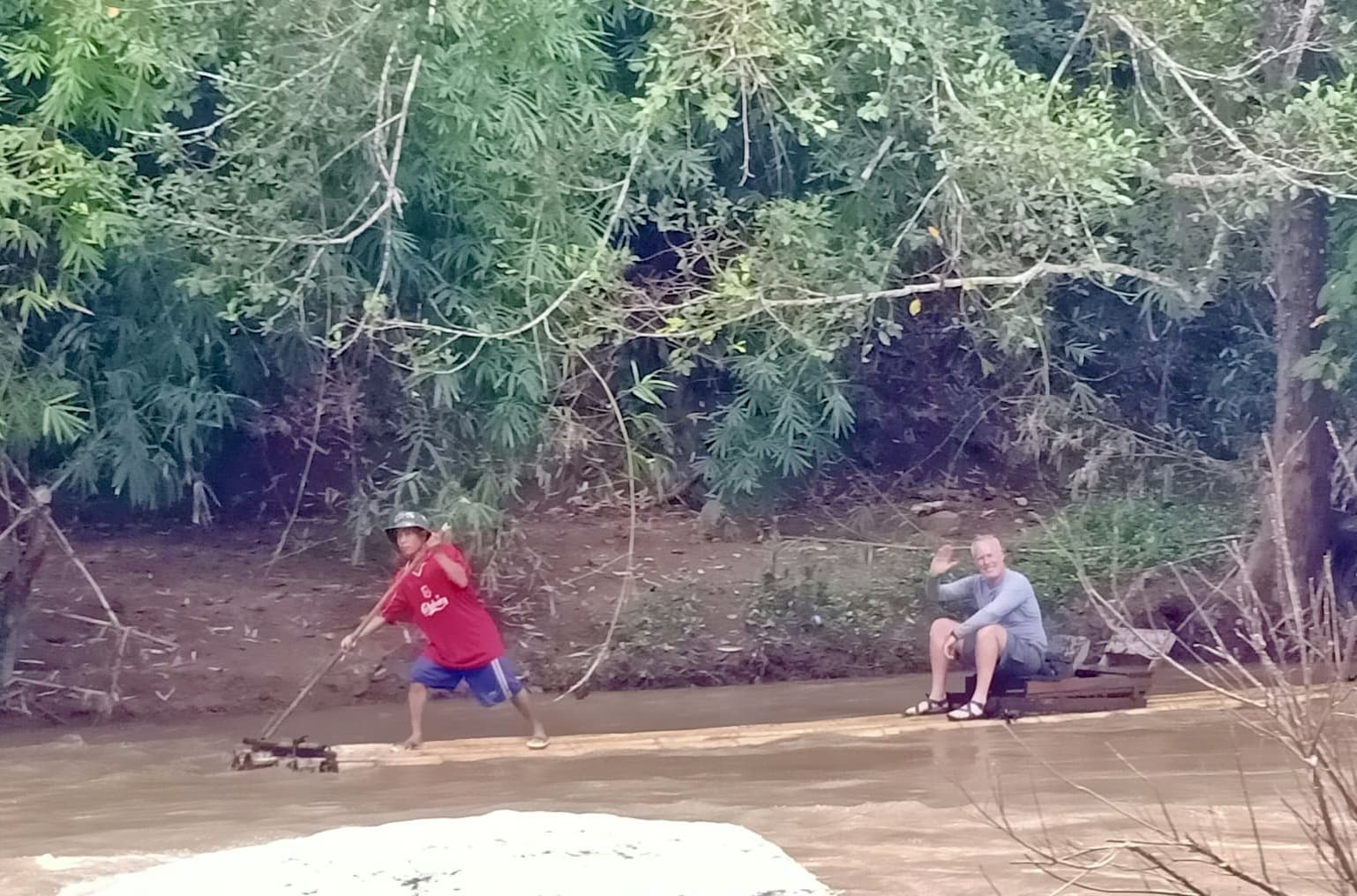
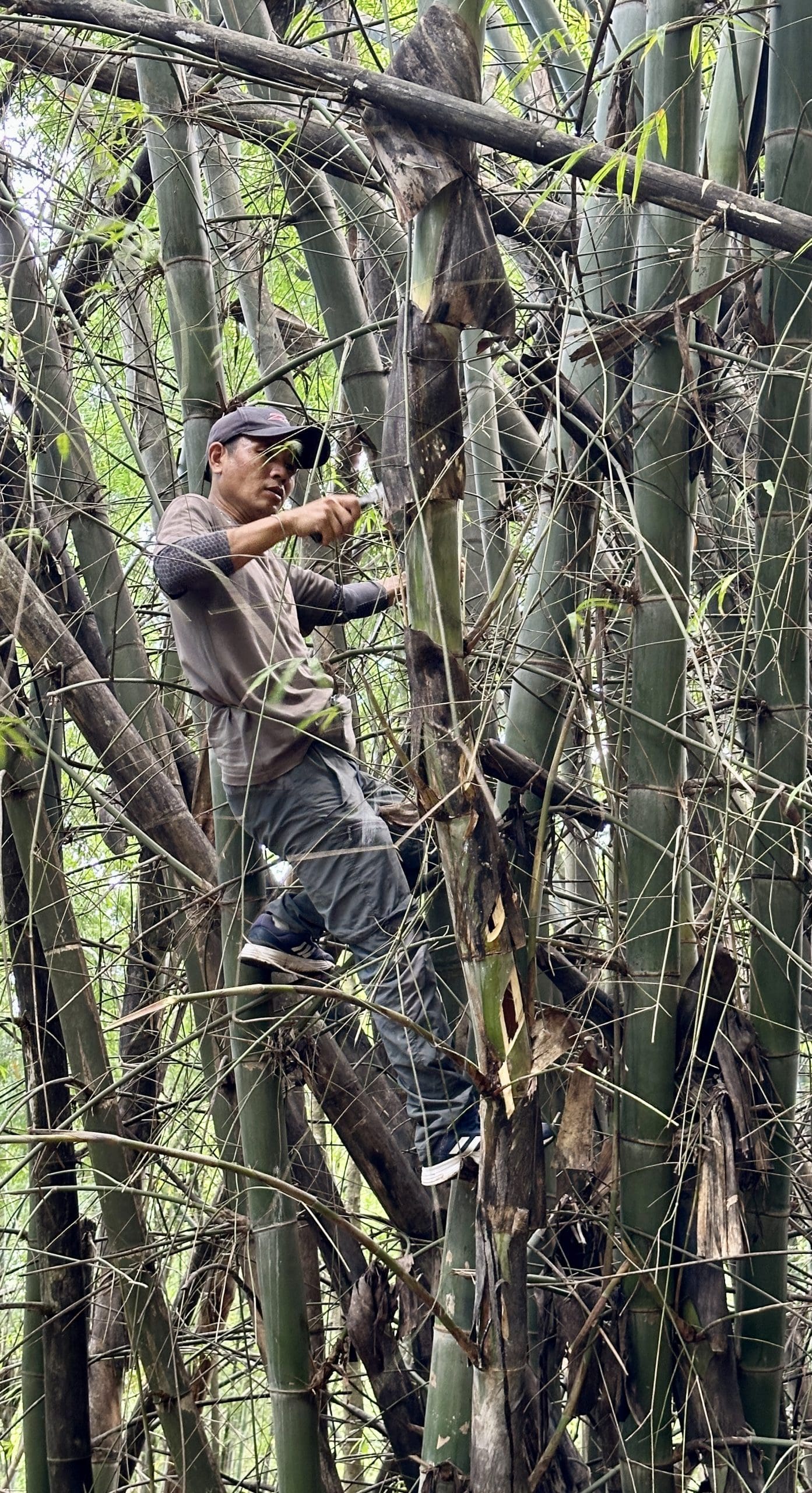

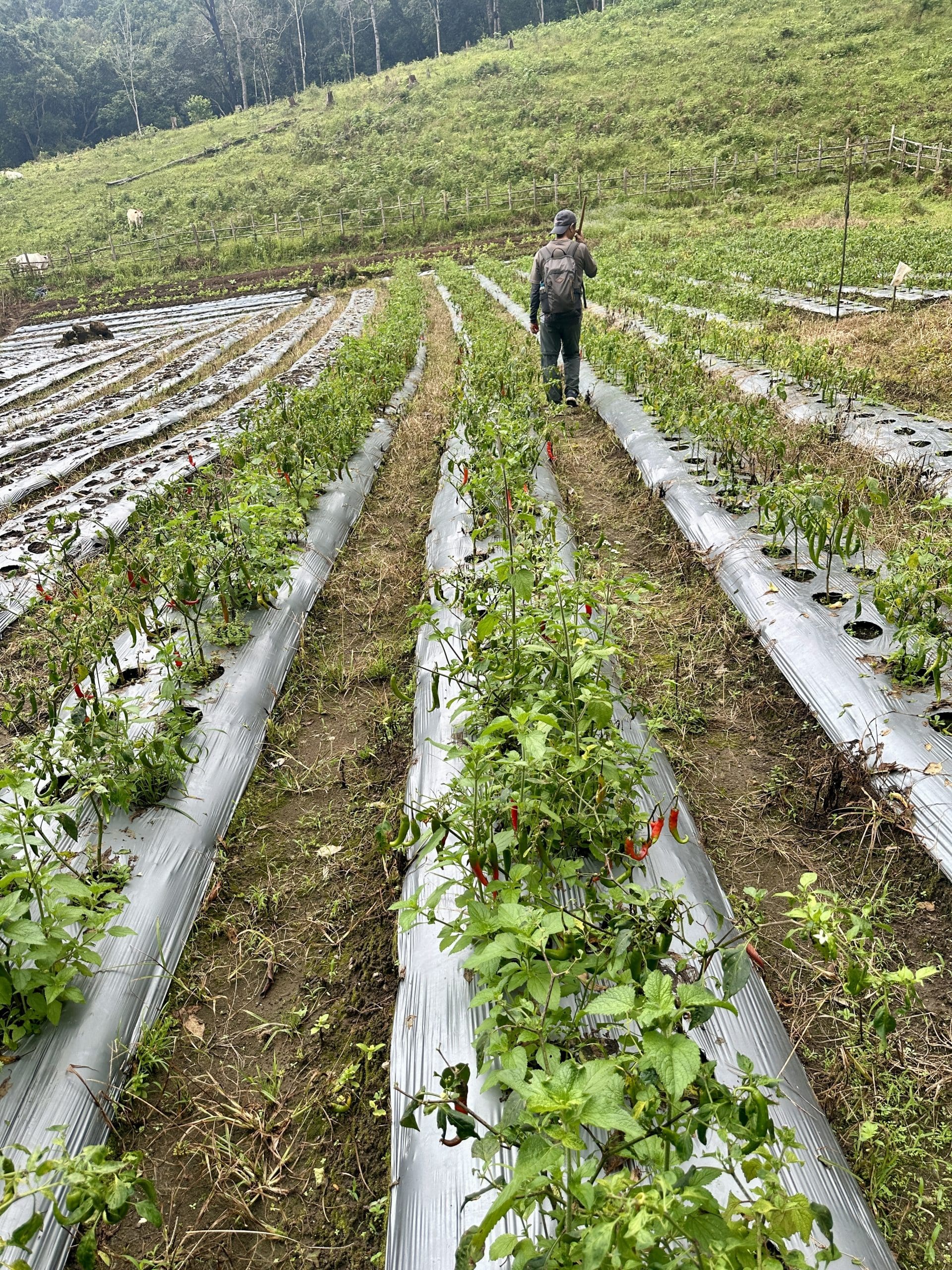
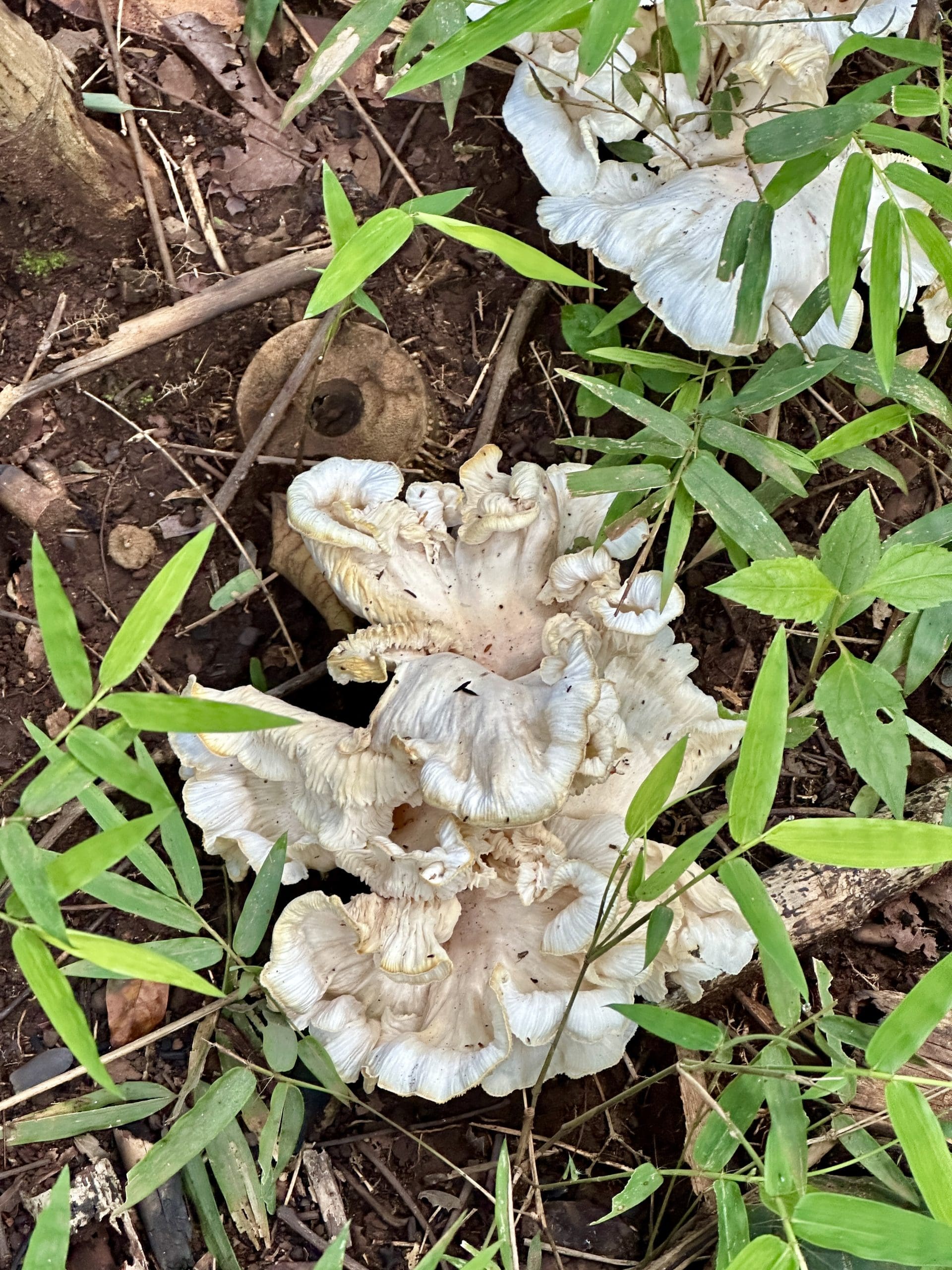
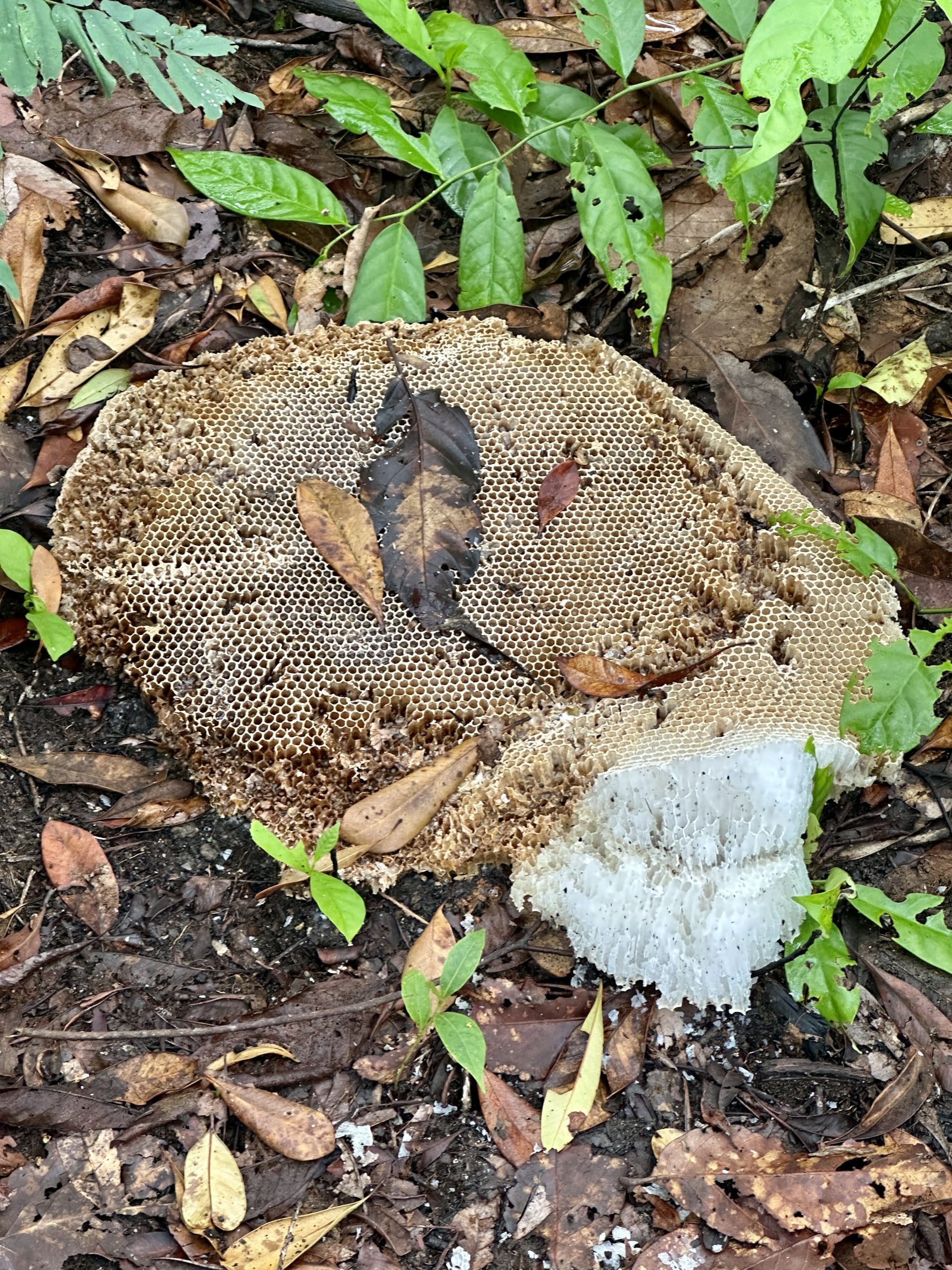
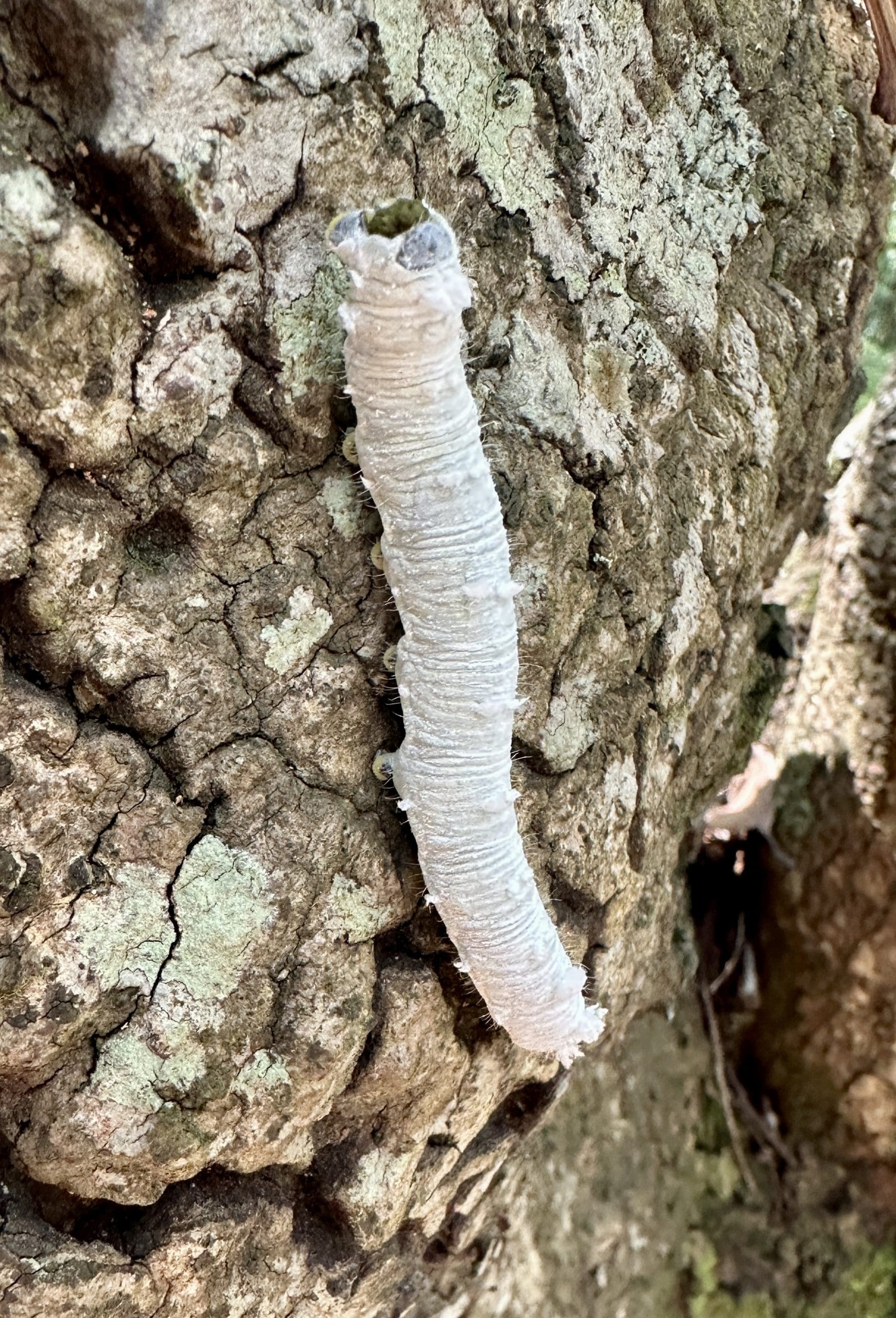


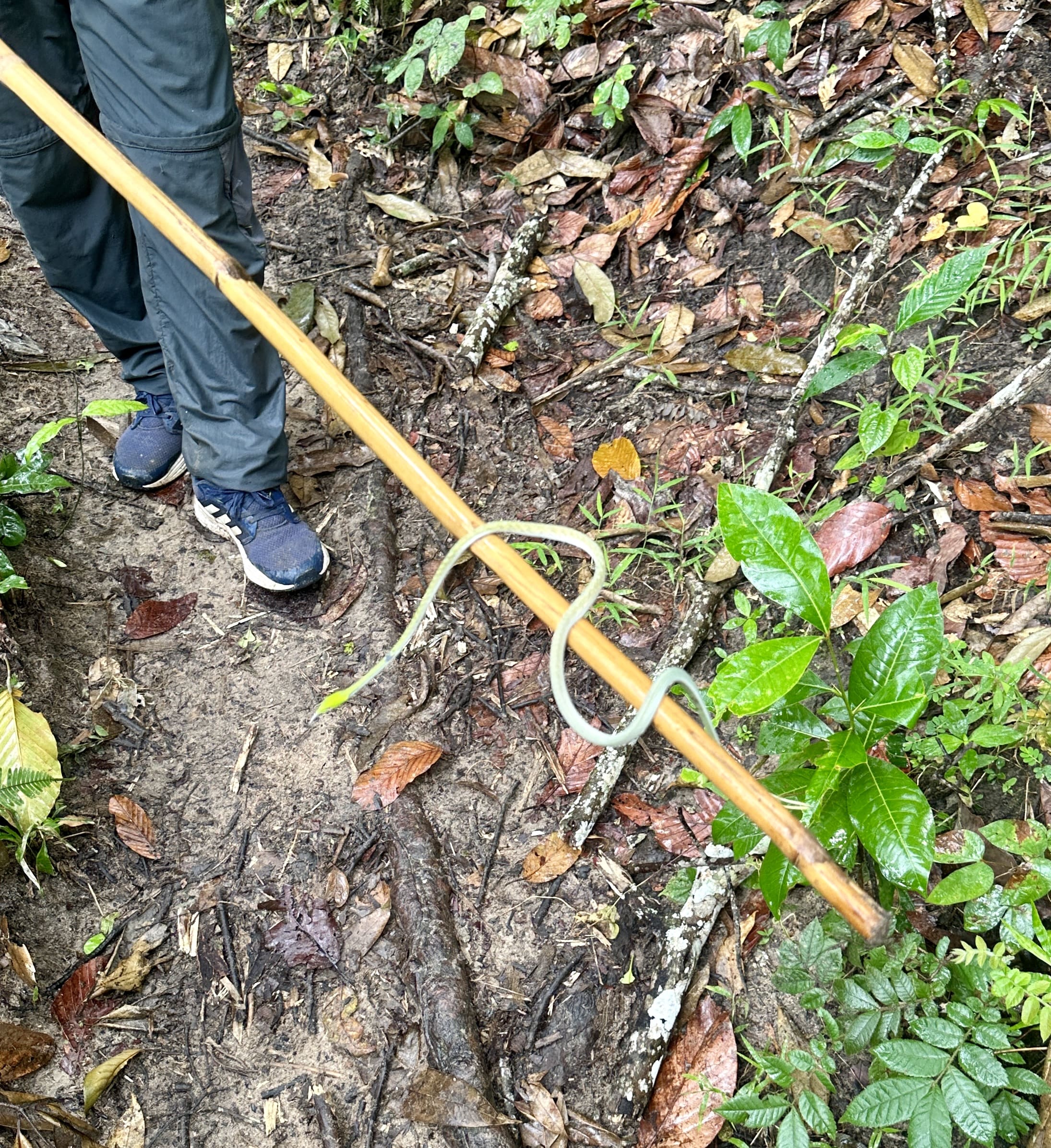

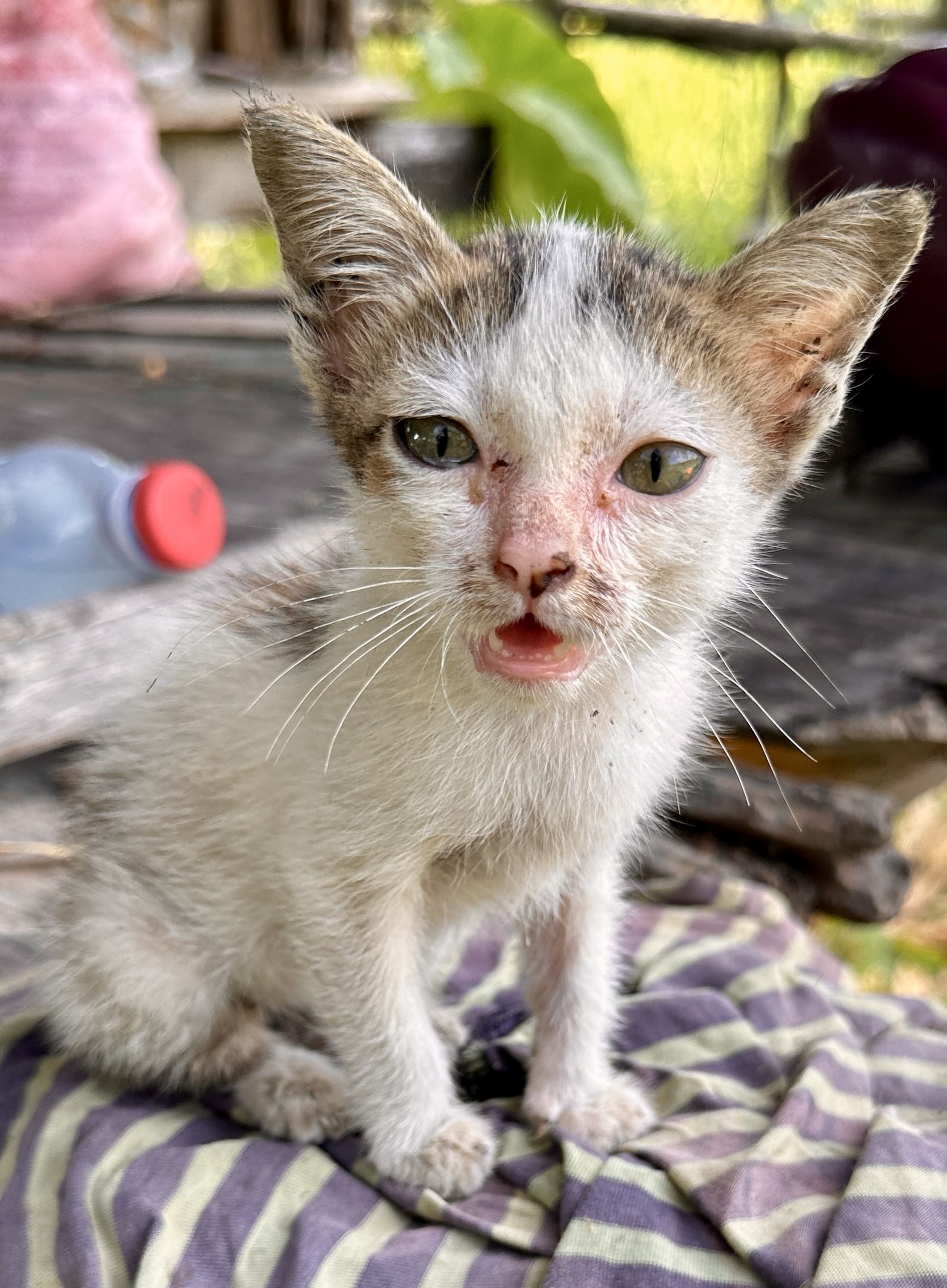
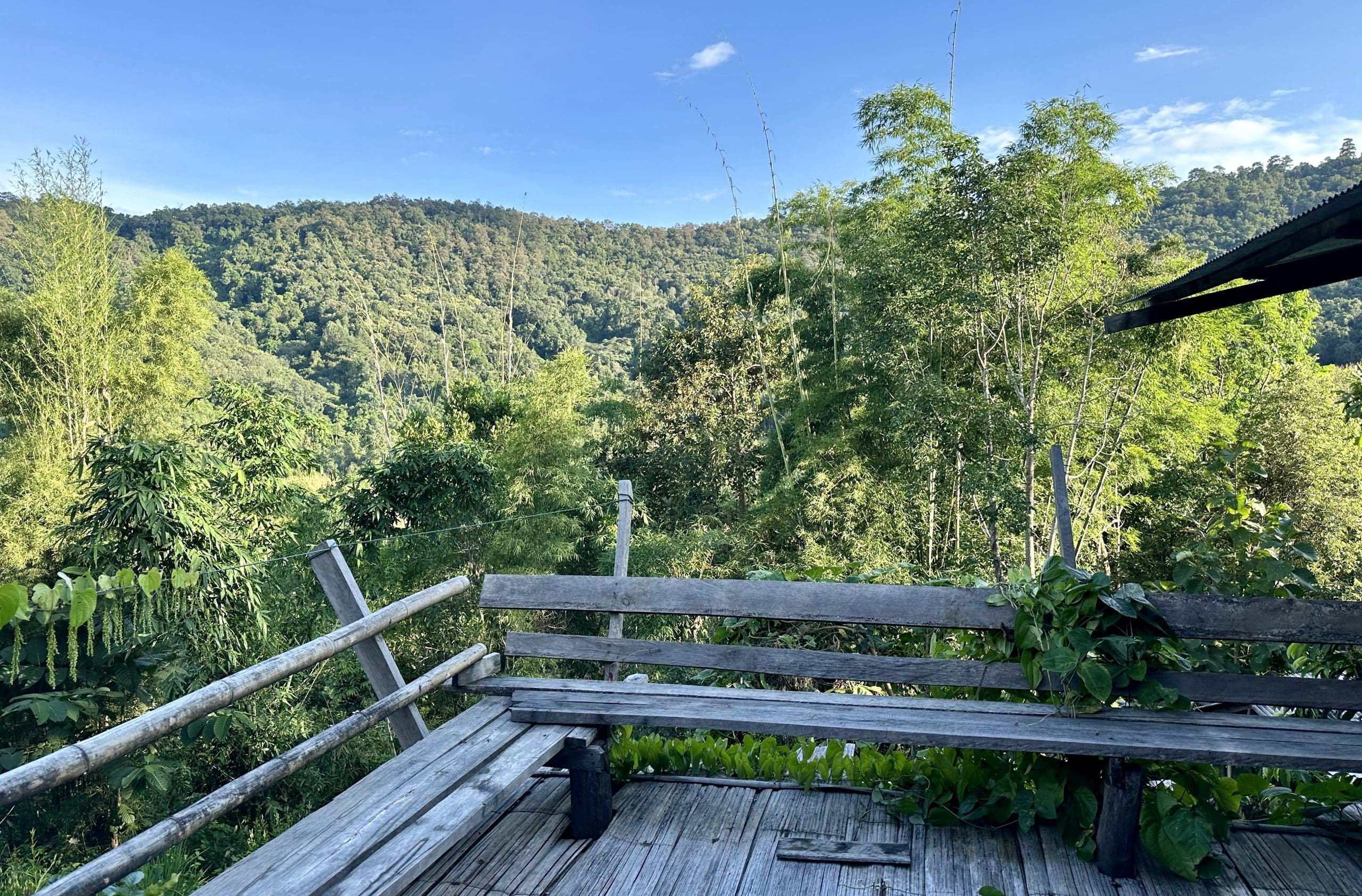
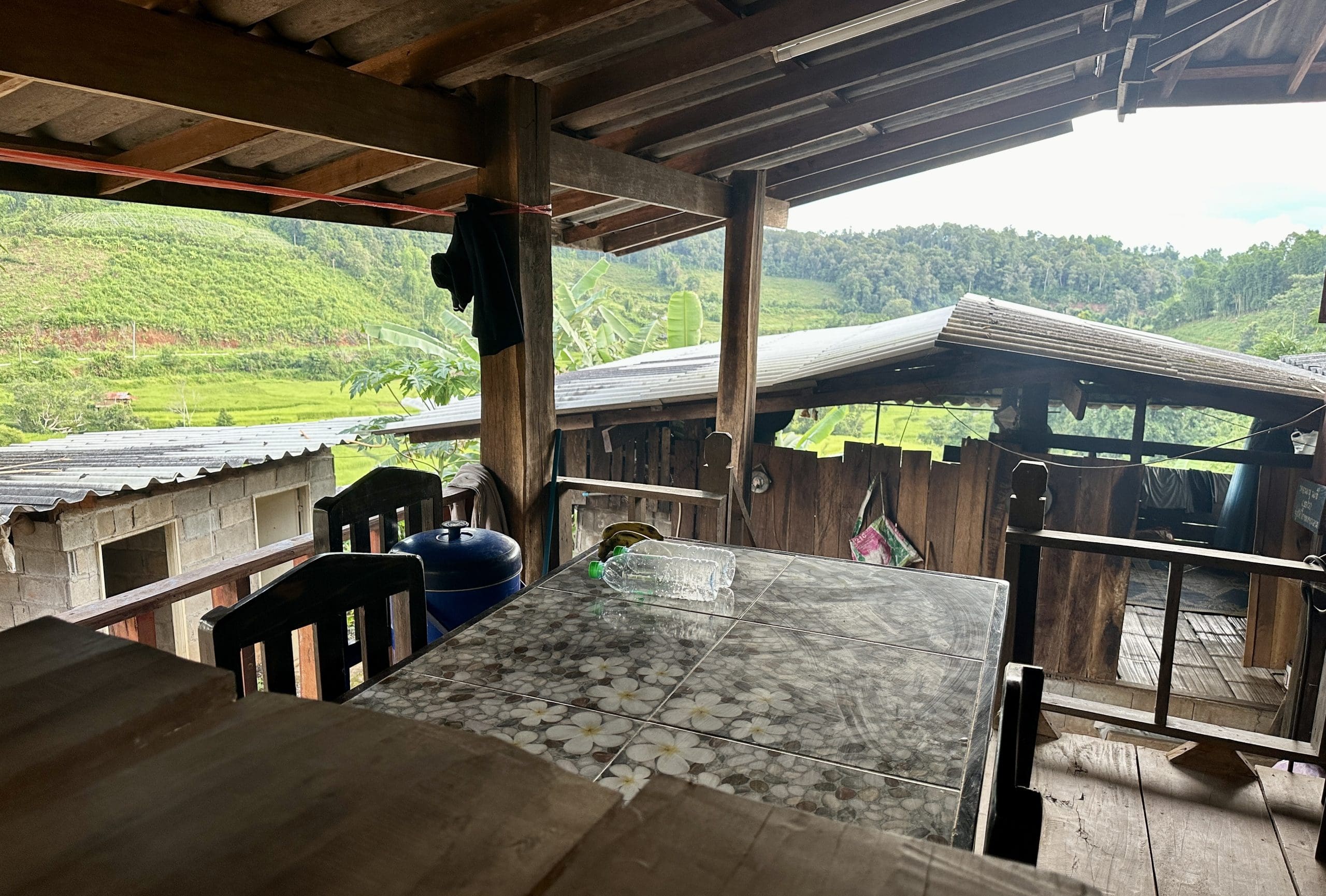
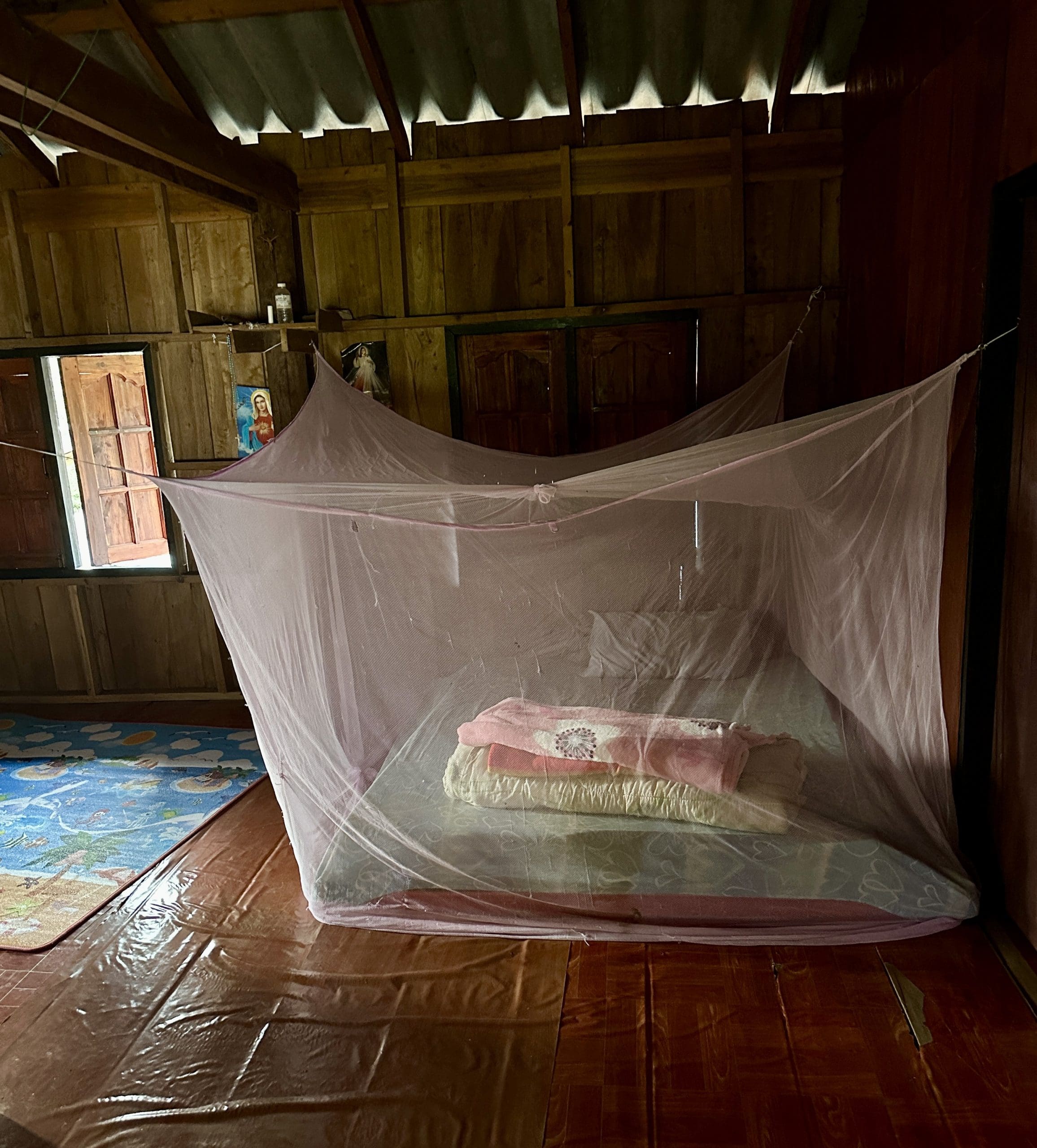
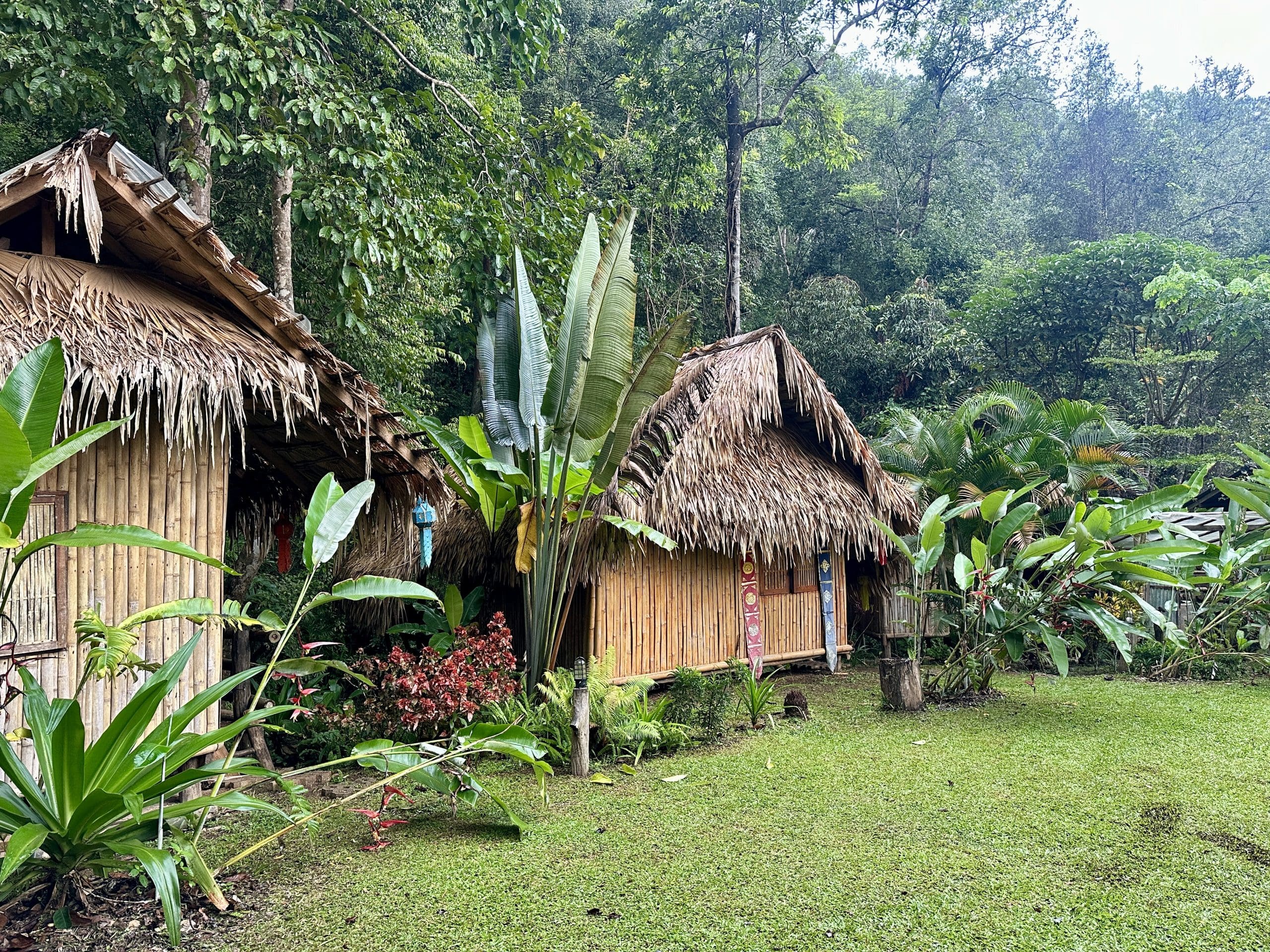
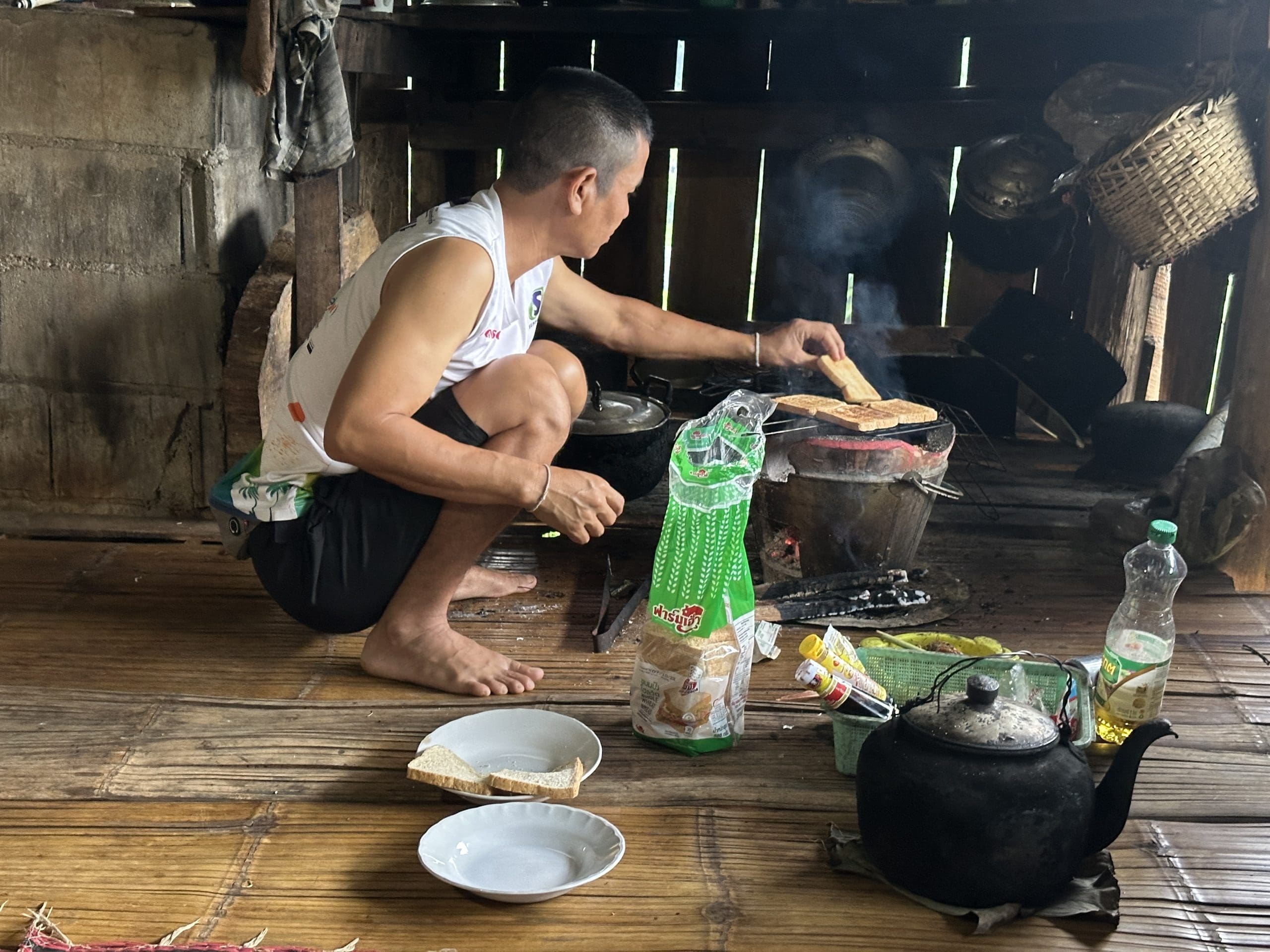

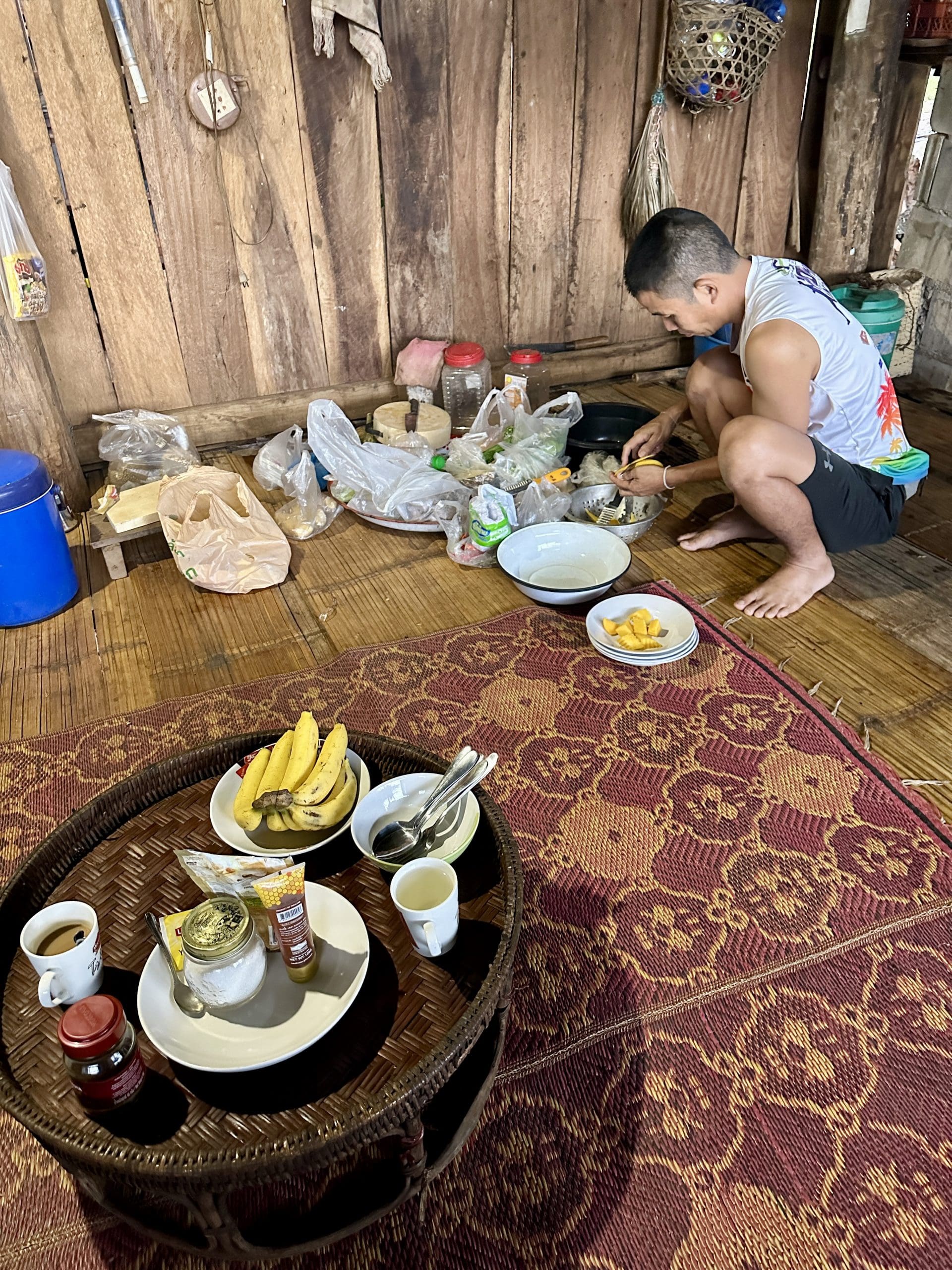

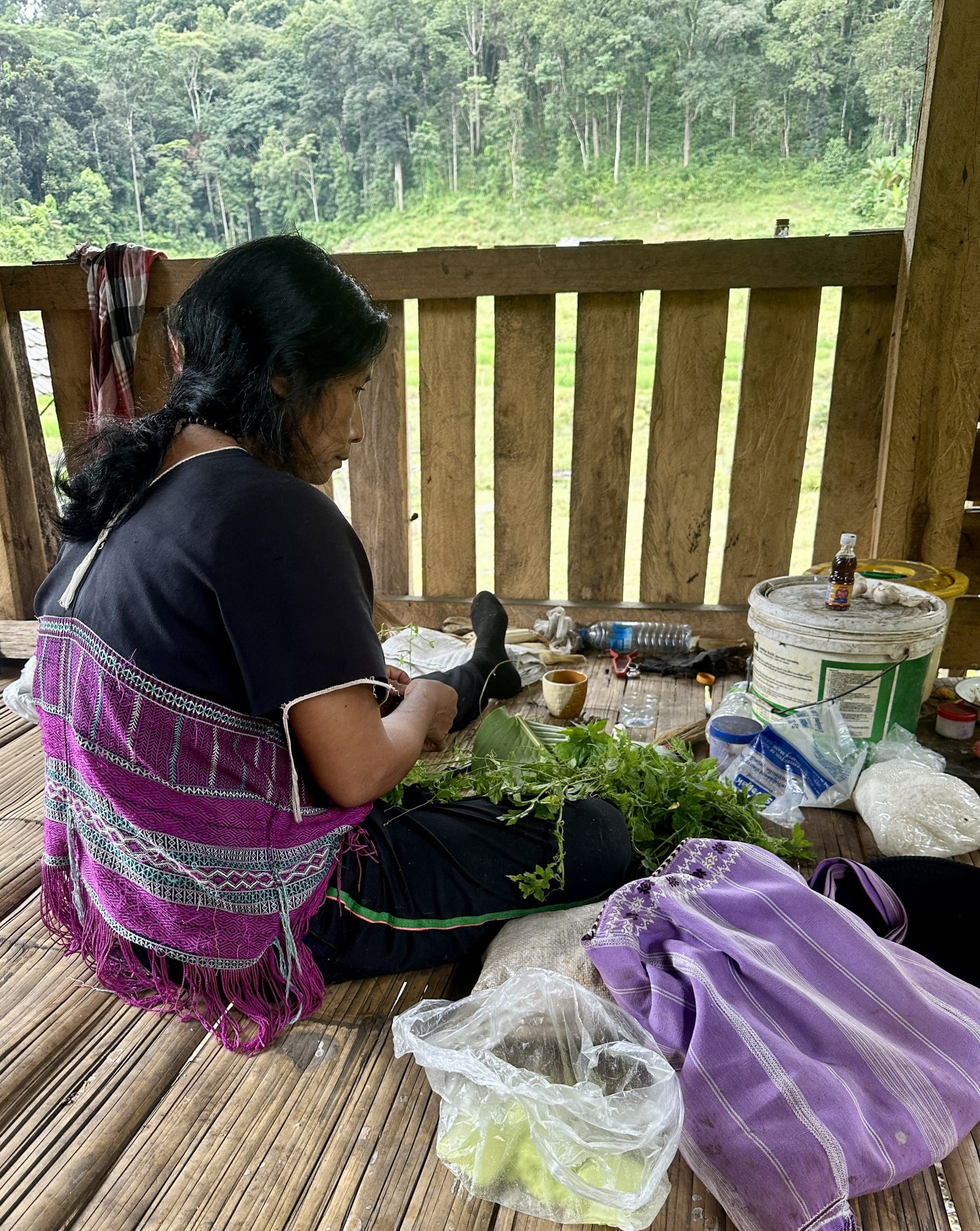
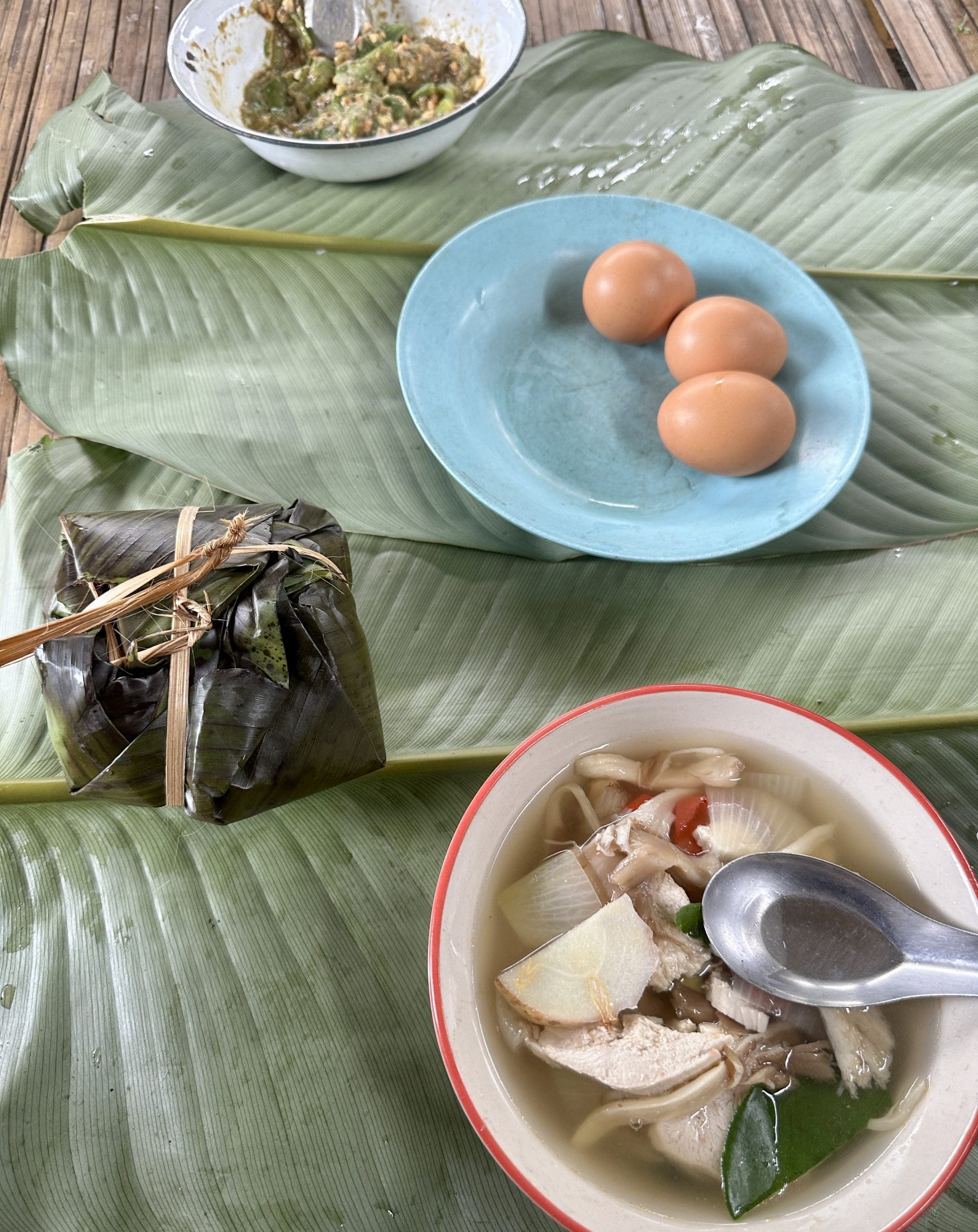

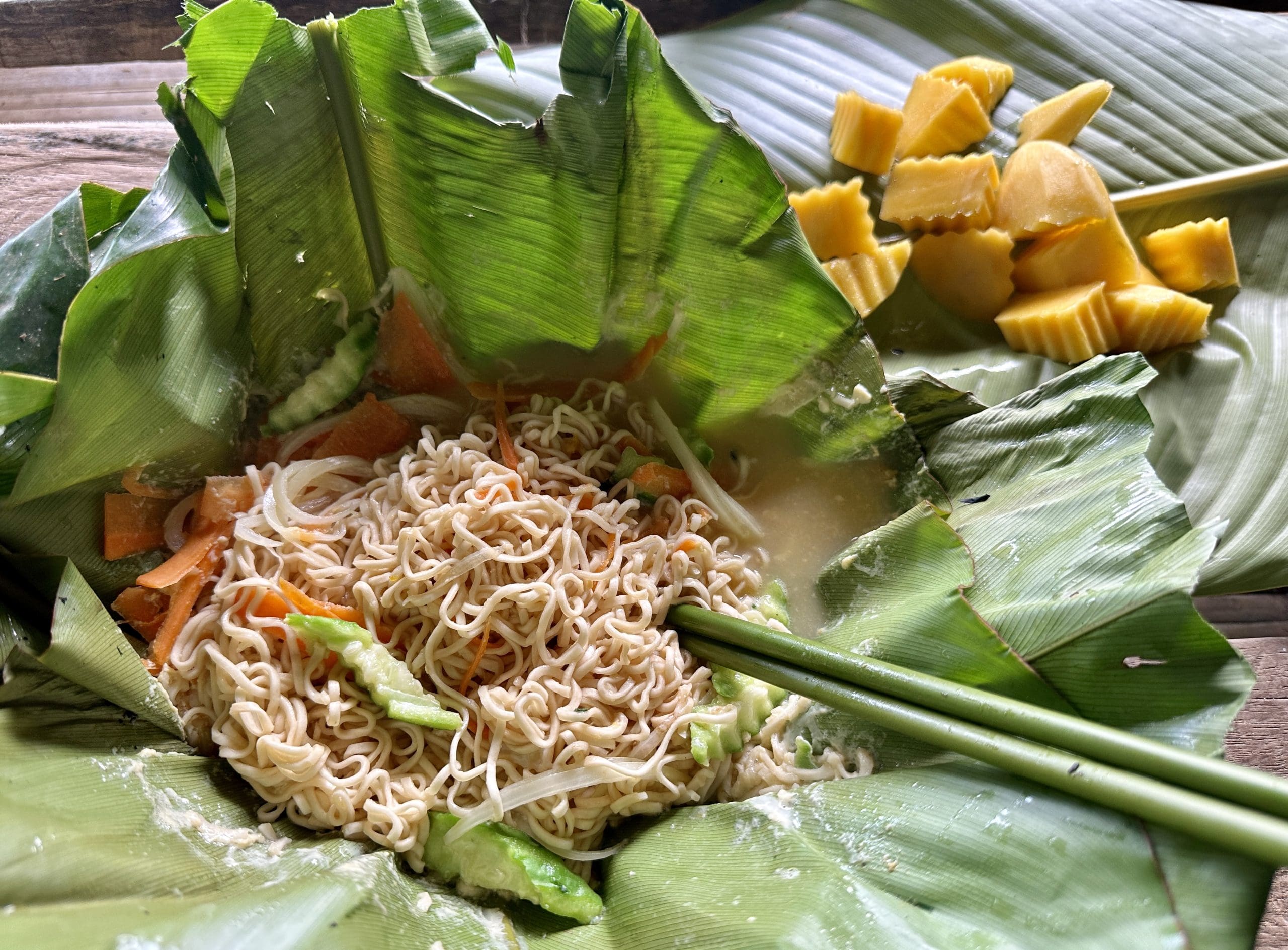
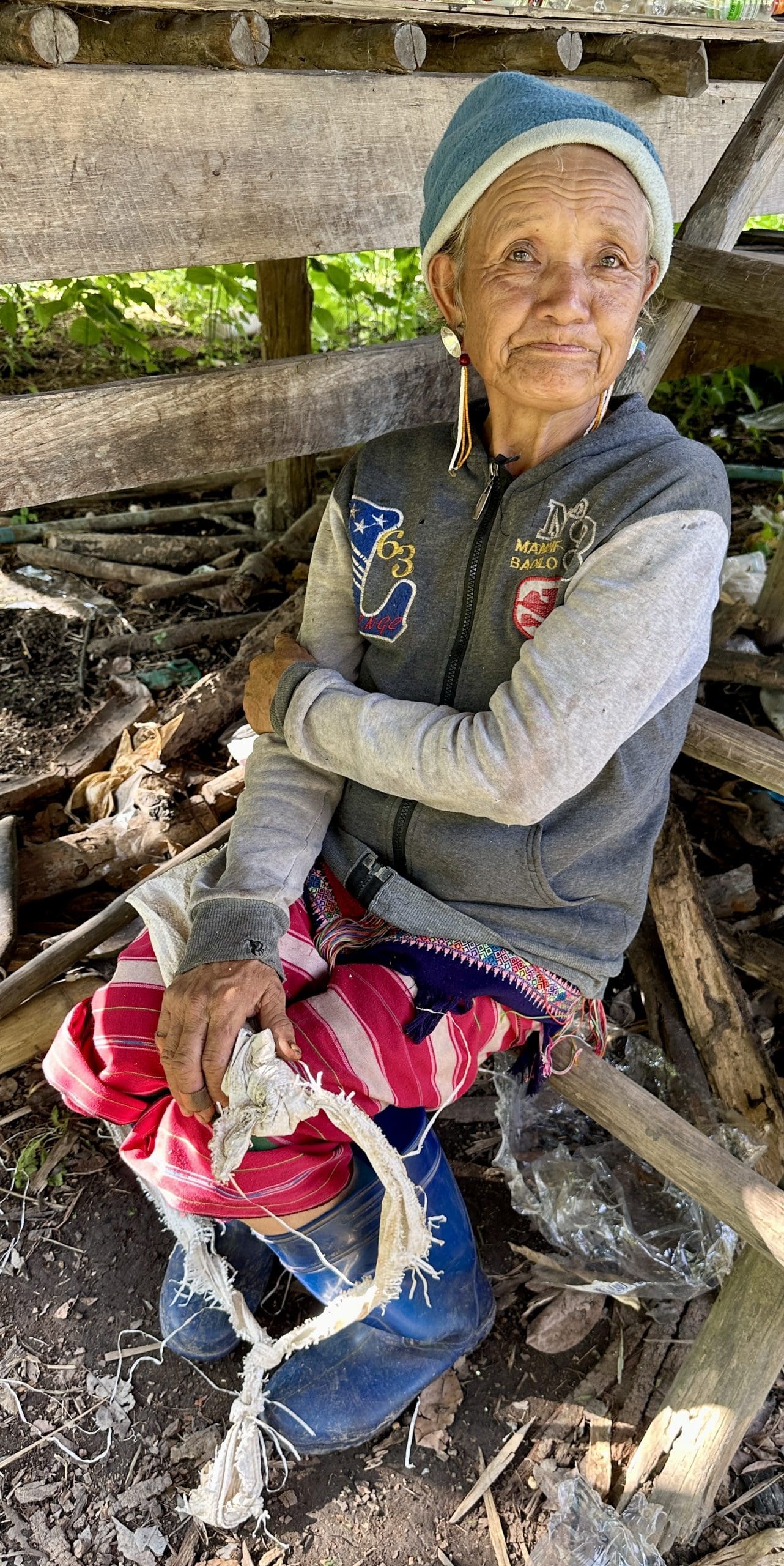
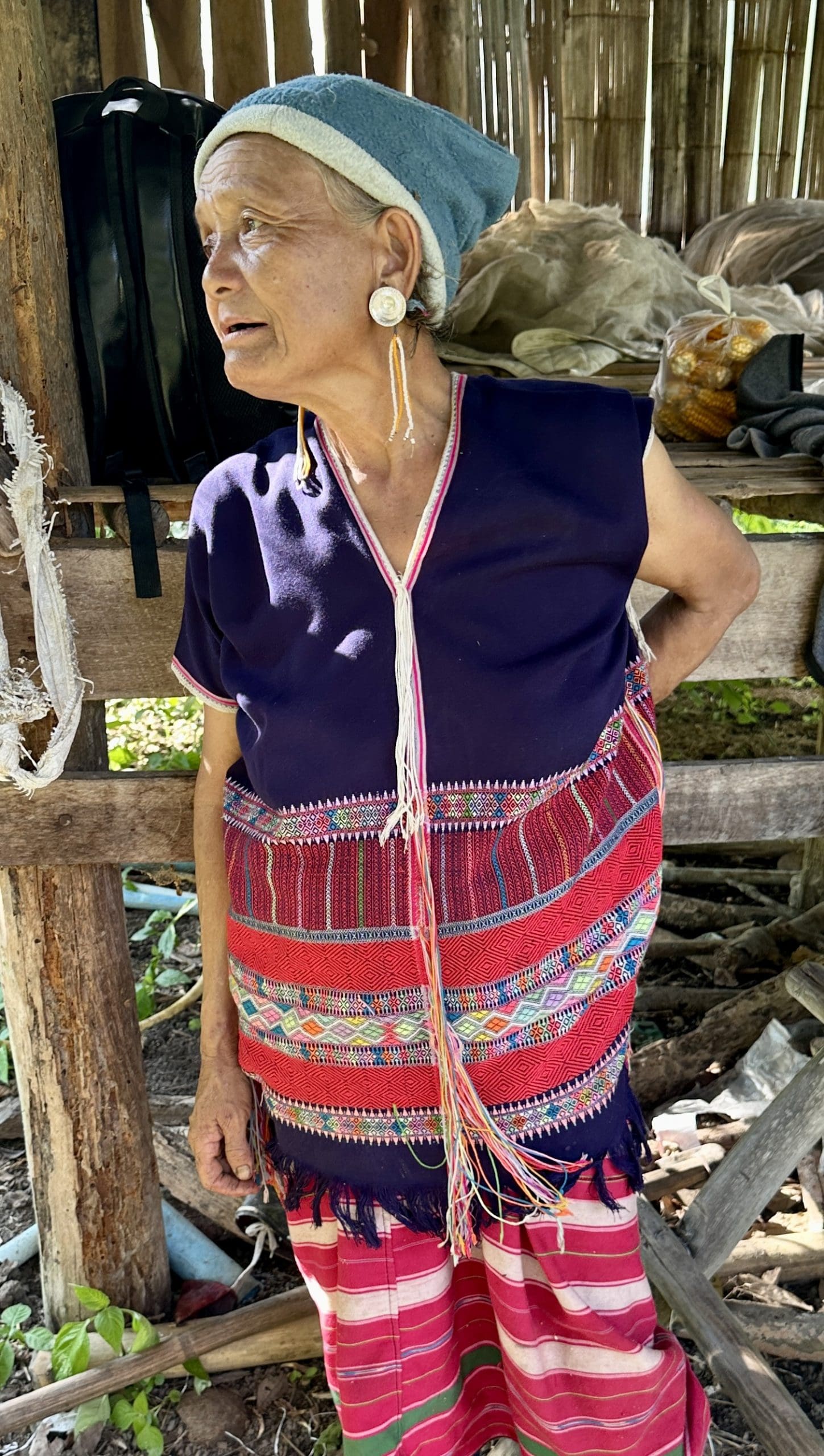
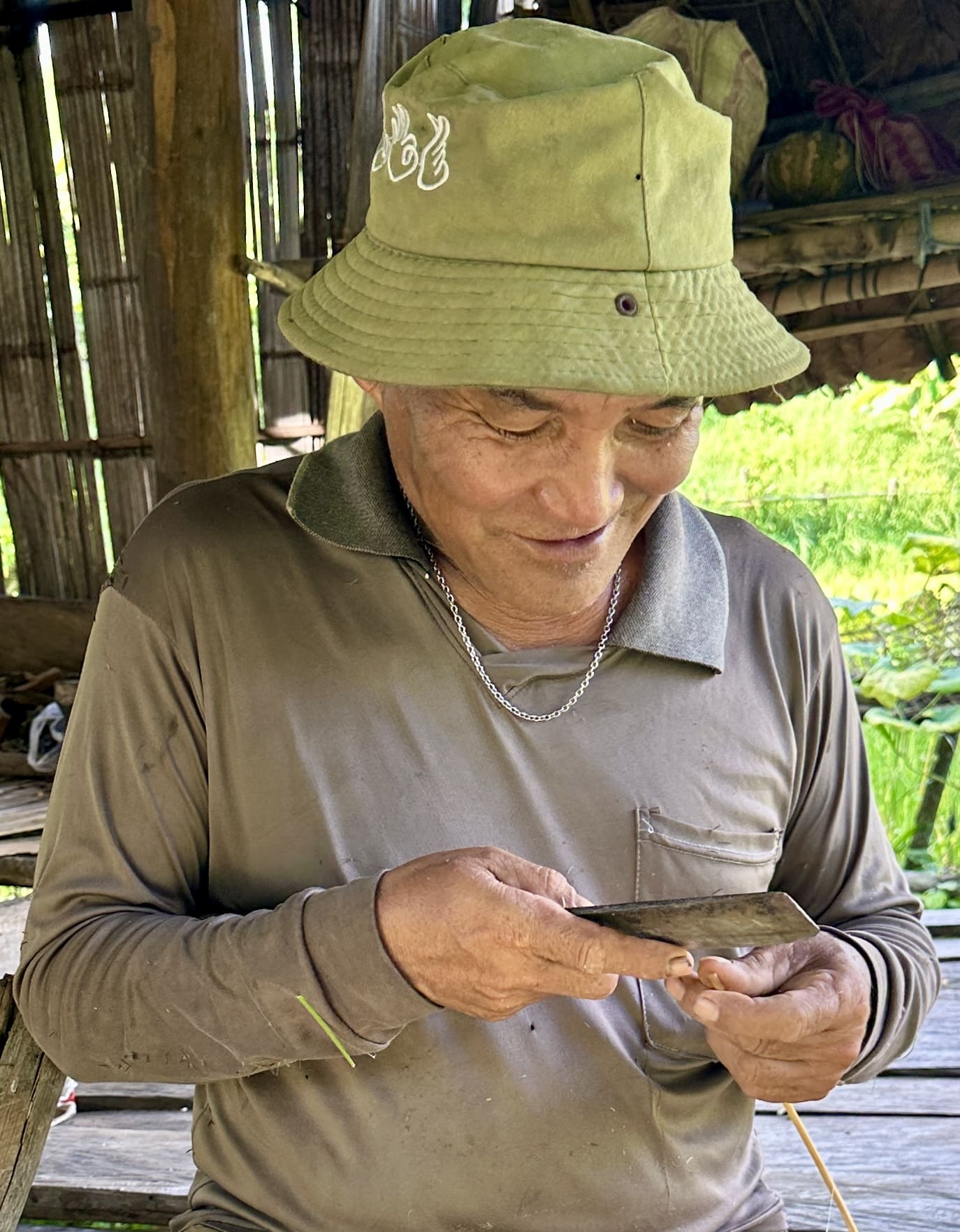
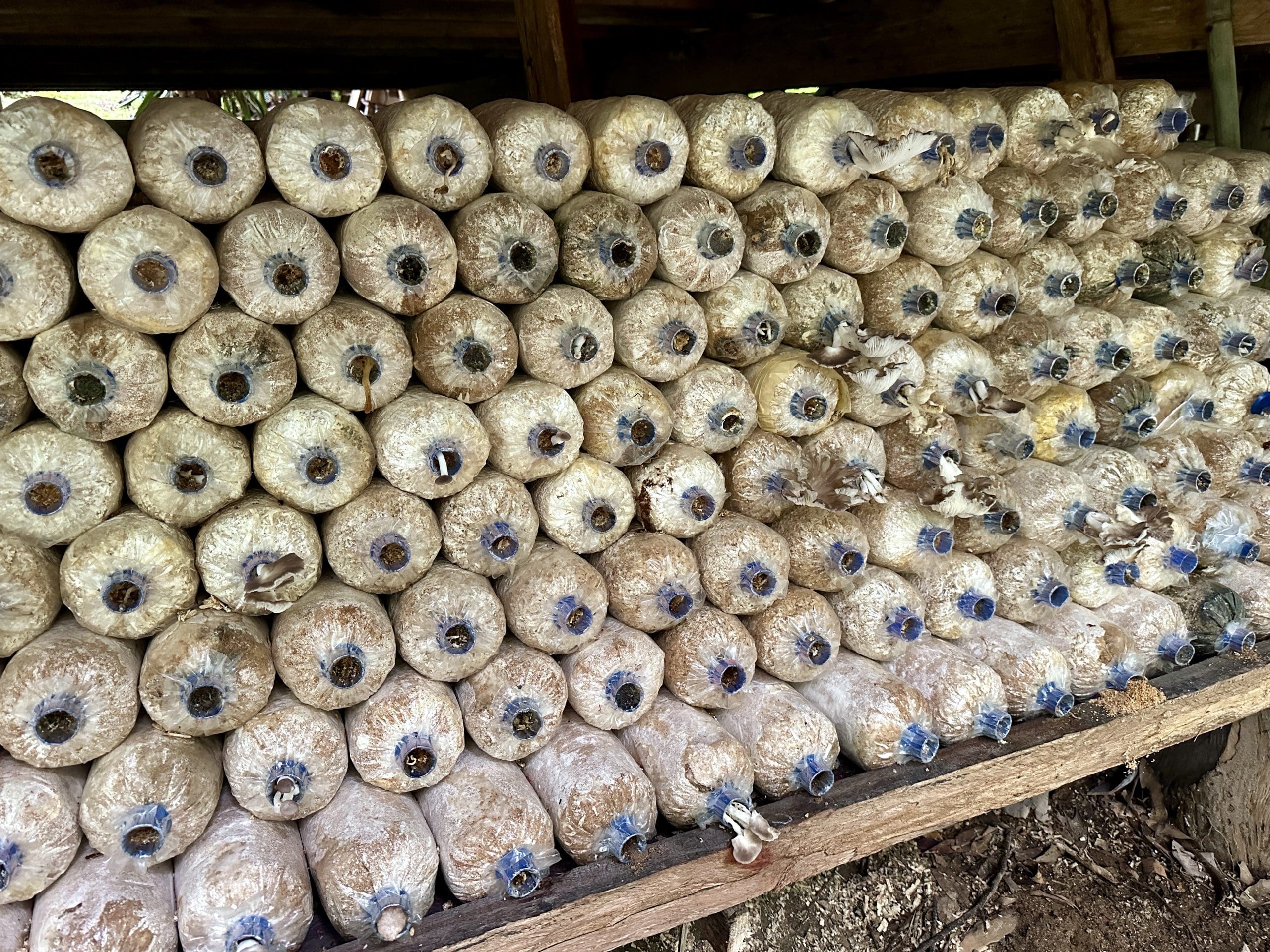
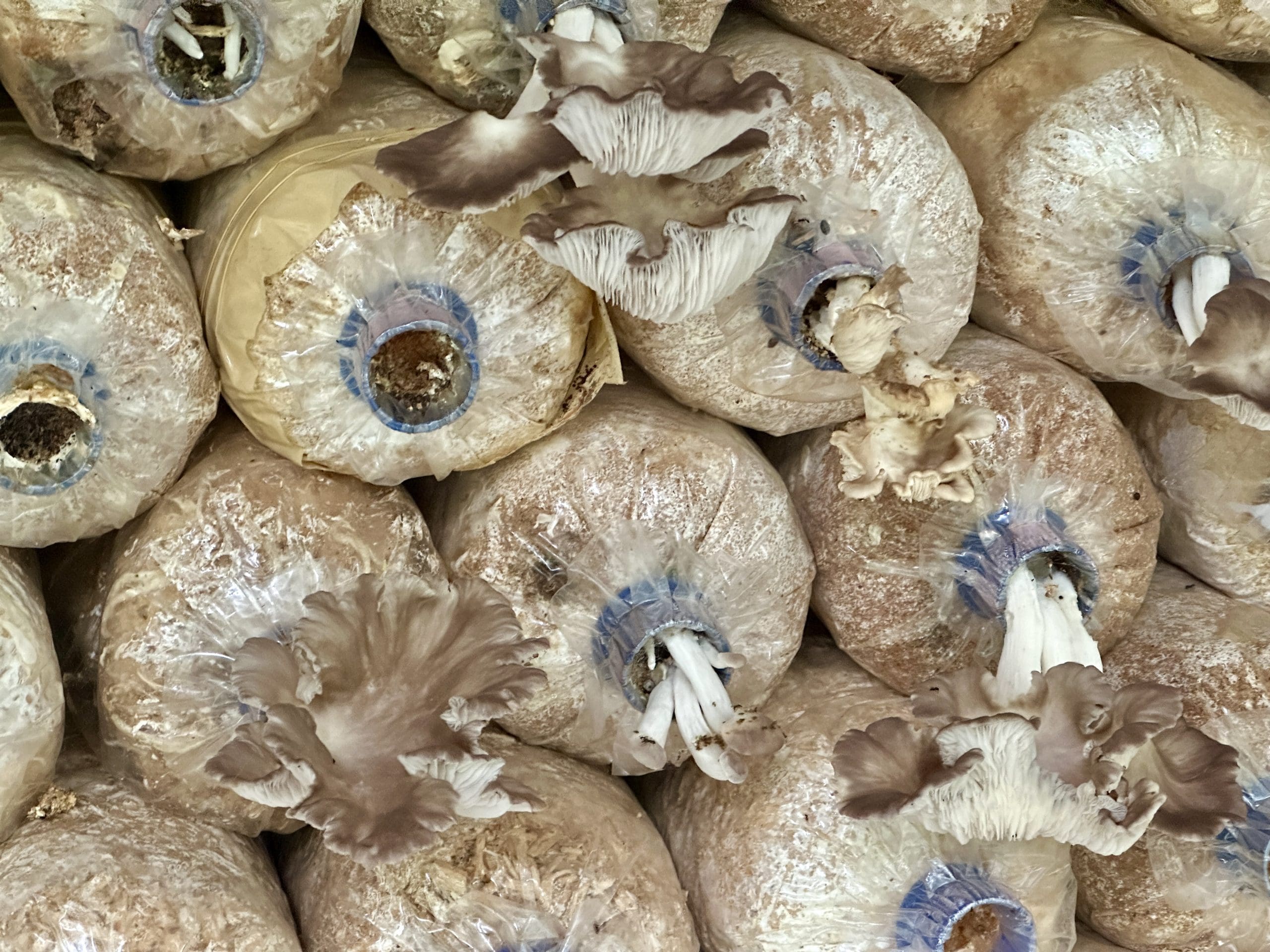
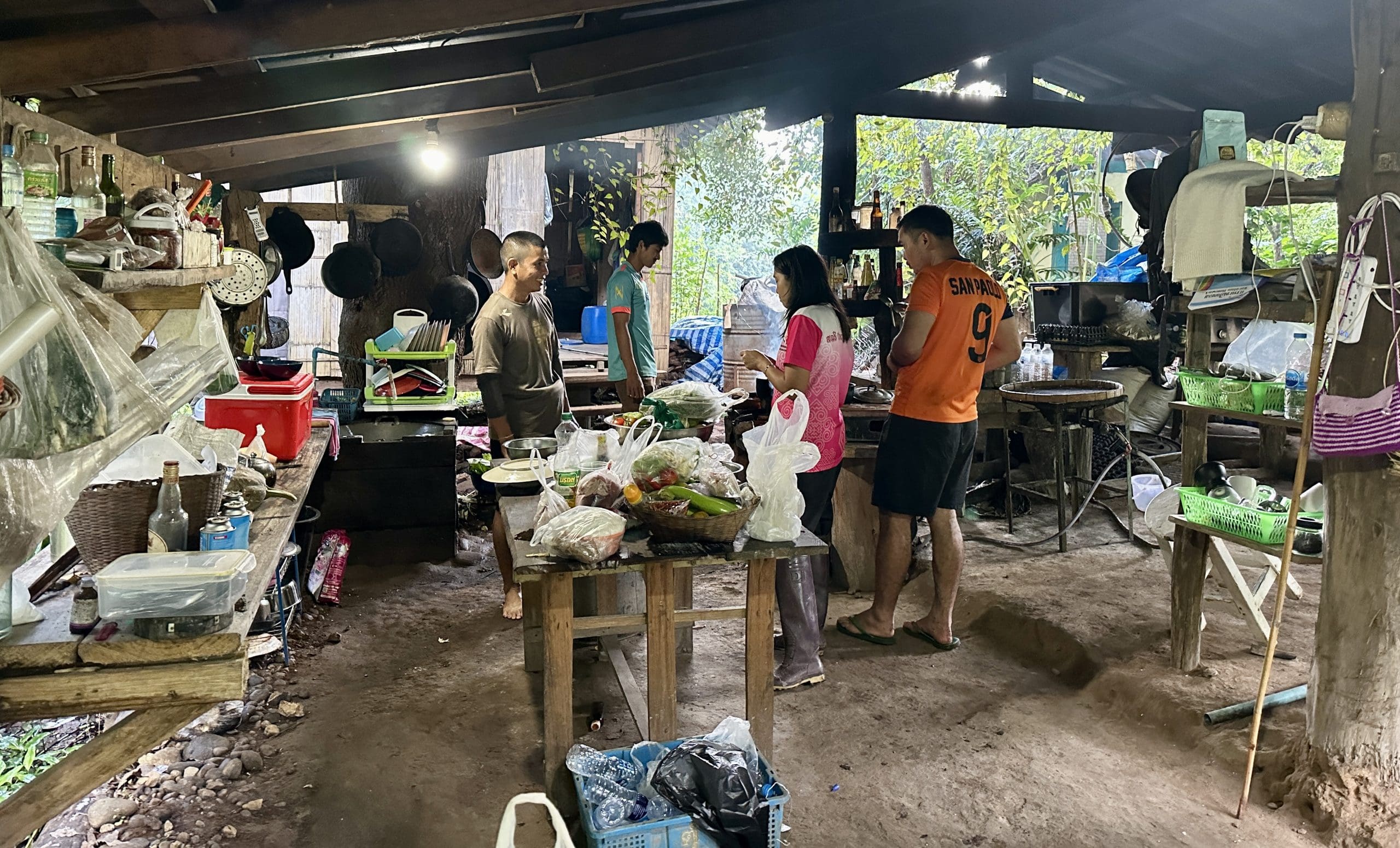
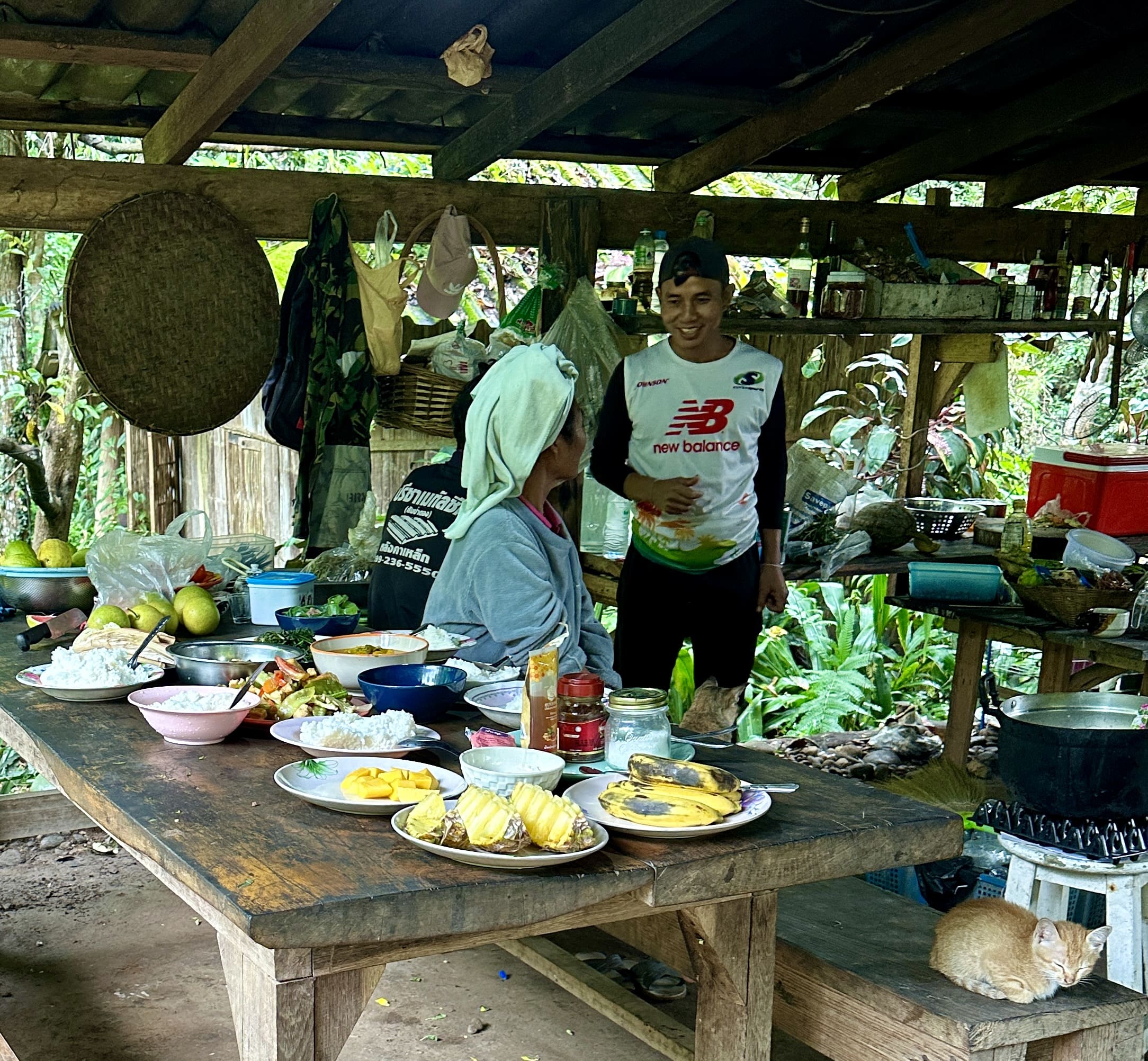
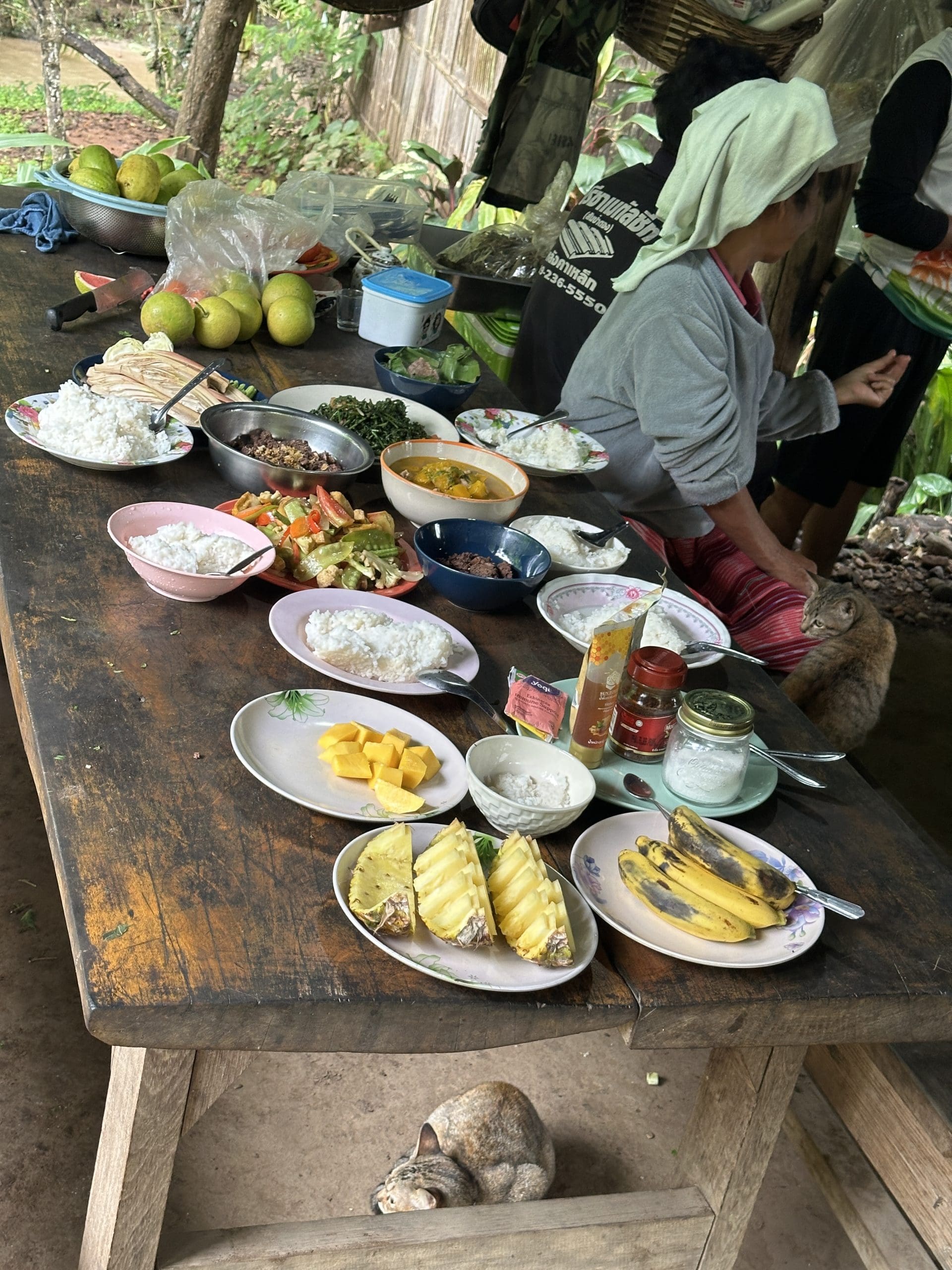

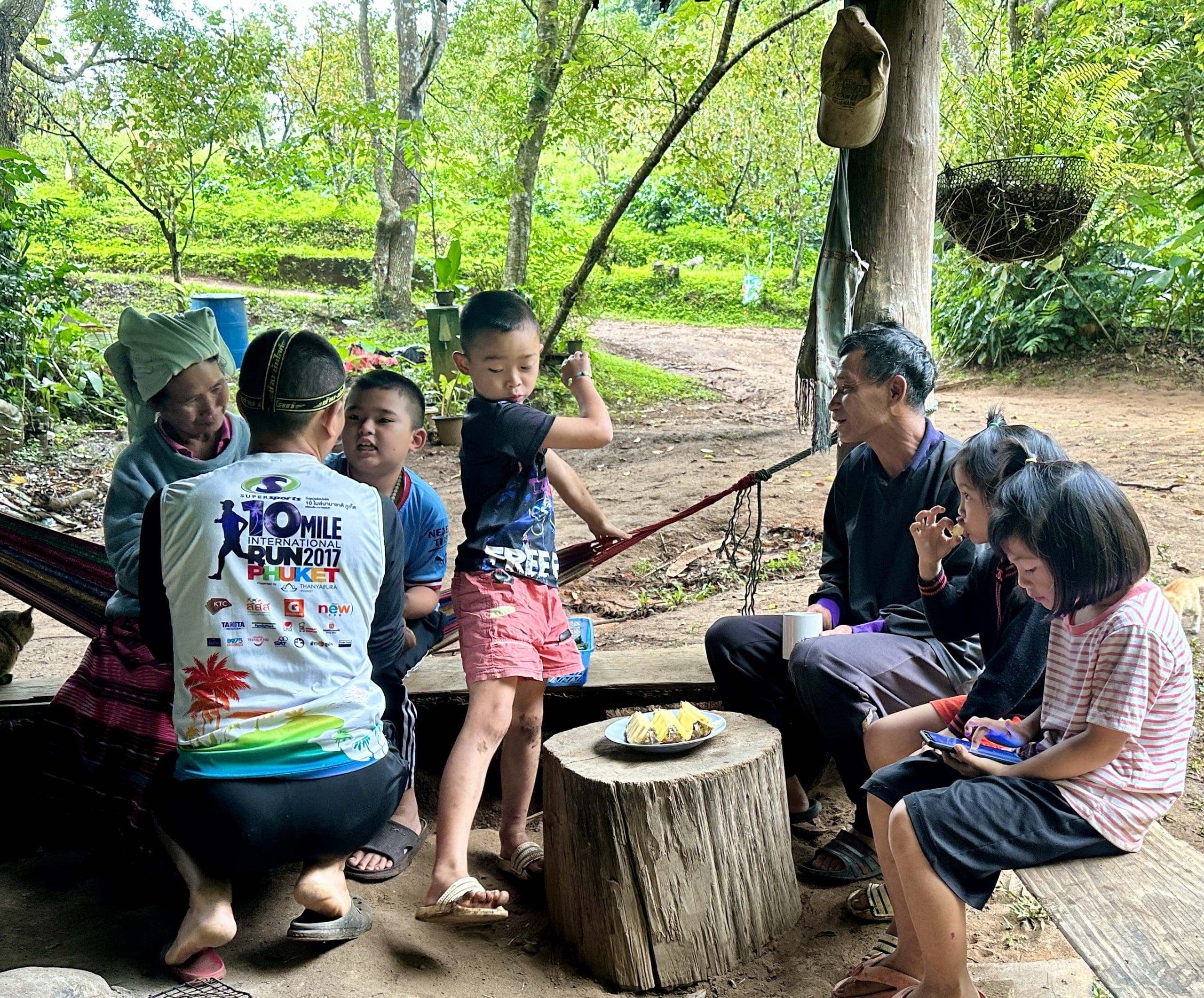

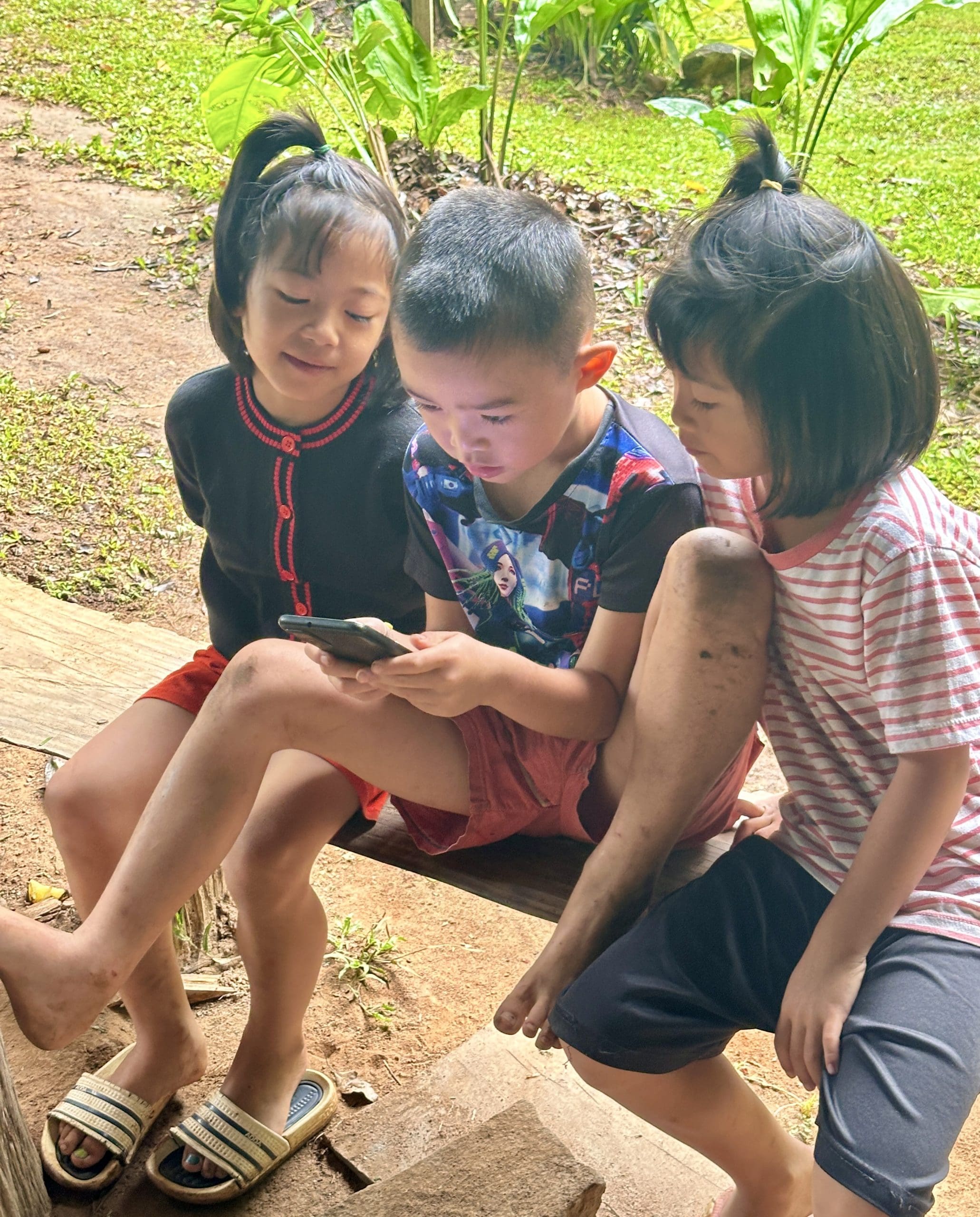
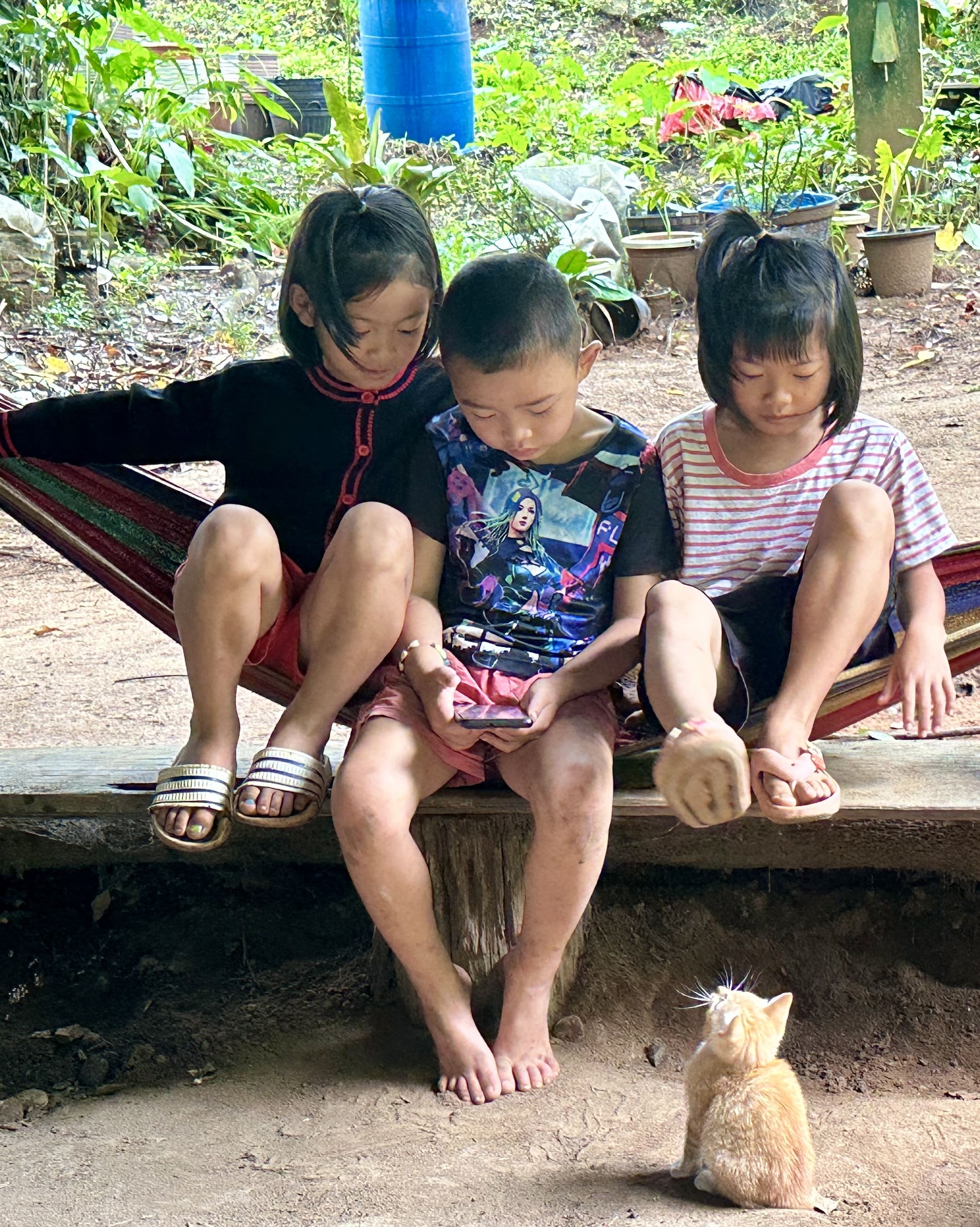

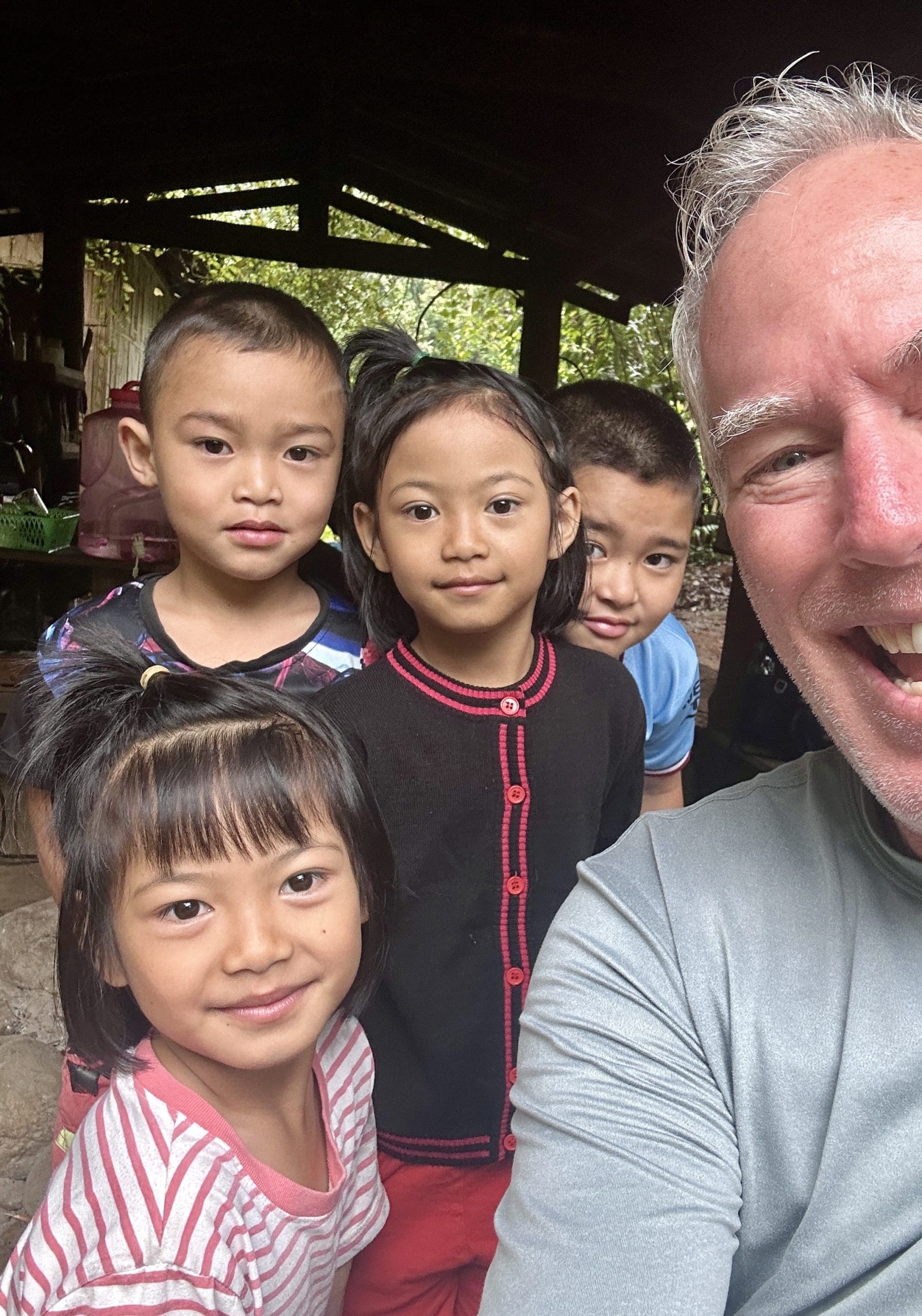
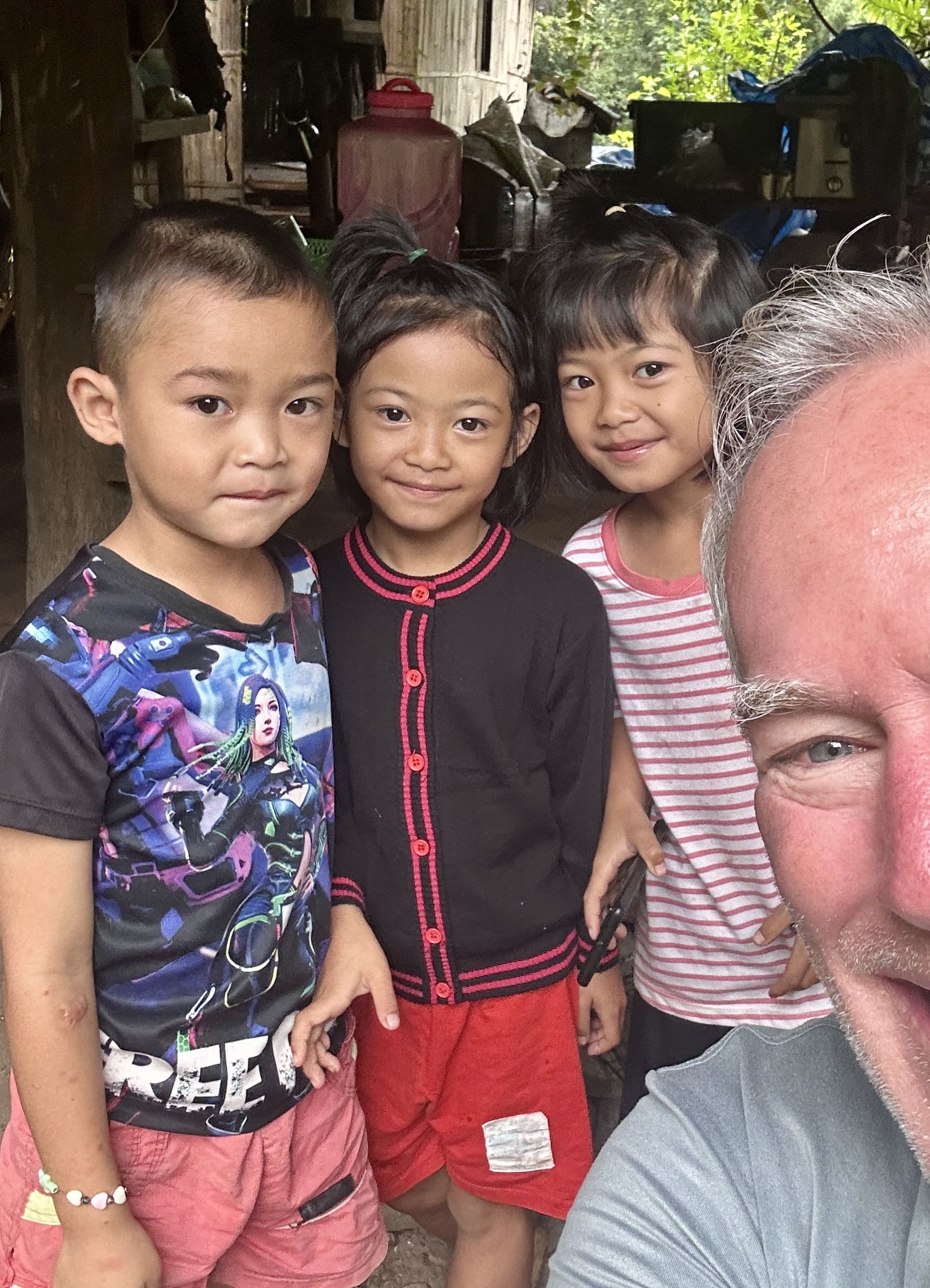
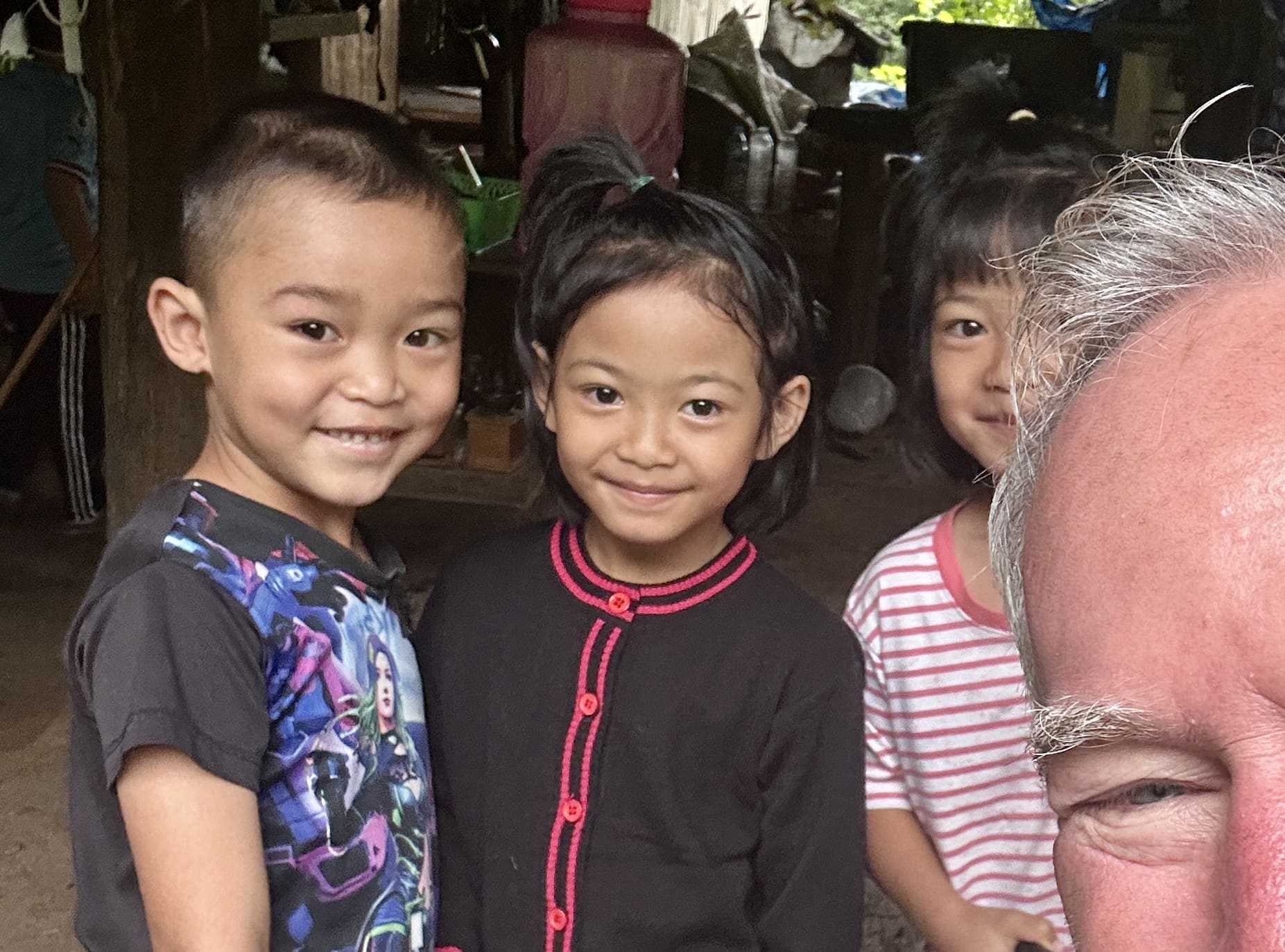
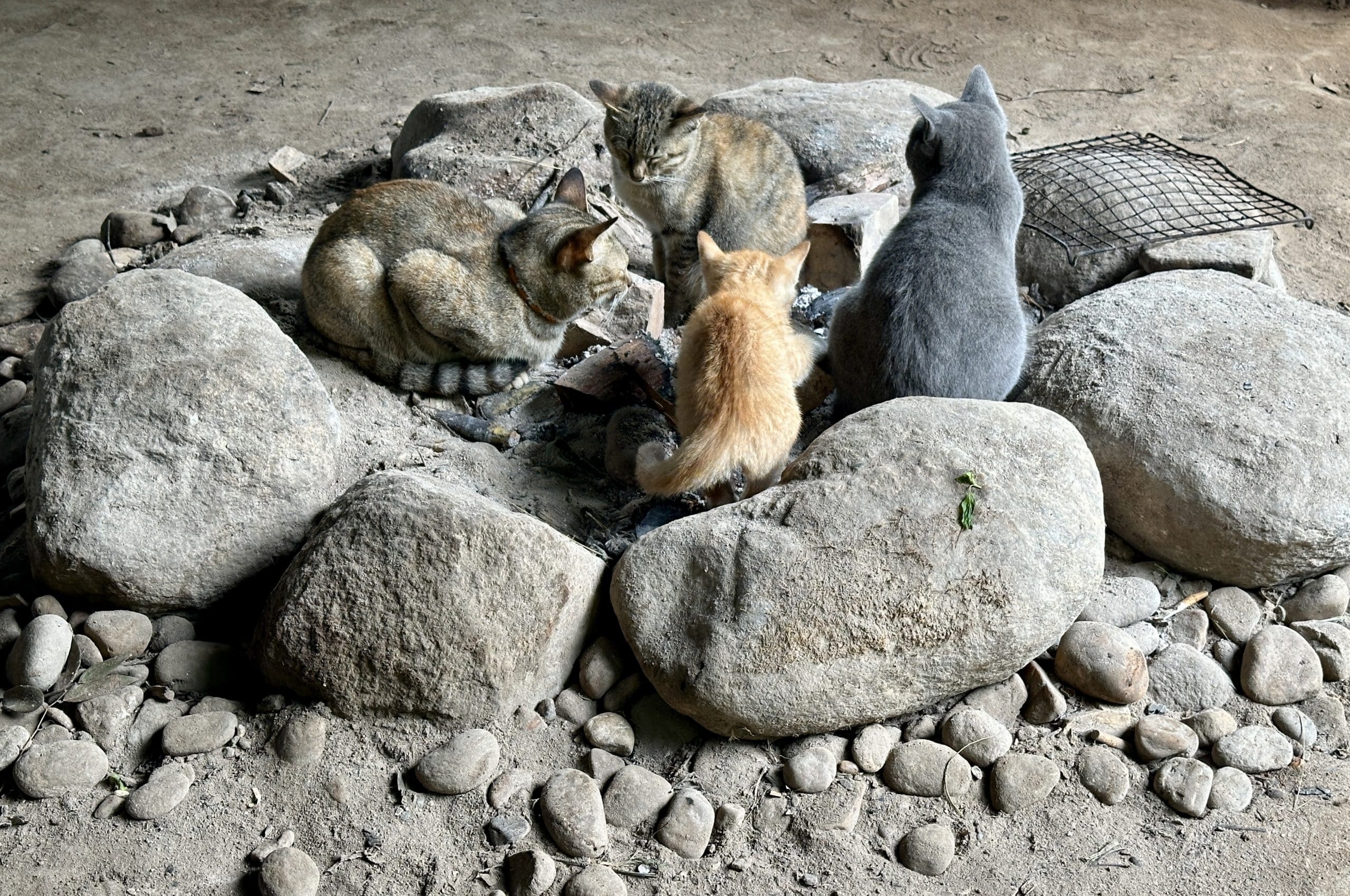
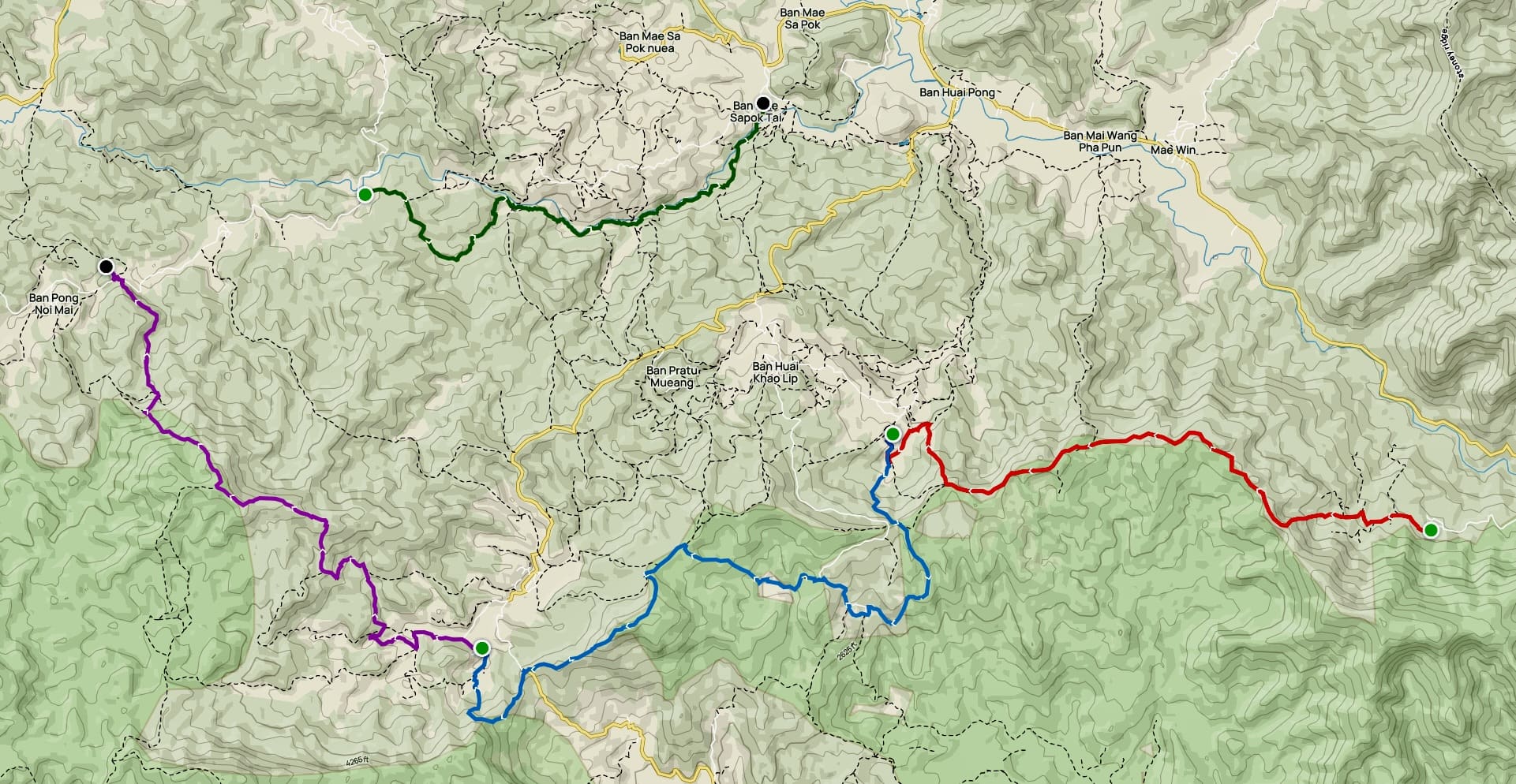
Chris- you are SO brave!
What a wonderful post. The children look so happy and beautiful.
And I was struck by the attractive, fairly simple, yet obviously adequate building construction -when to add a room to my house in the States I have to file a permit, build a double-wall with drywall, etc, etc!
Thanks for expanding our horizons once again!
Thanks, Mark. I agree with you! Much in their lives, not only the housing construction, is simpler than simple. And I was struck by how large the village homes are, and often devoid of much in the way of furnishings or decoration. Of course, a big factor is the weather conditions they encounter: usually nothing more extreme than monsoon deluges which bring wind and rain but no severe temperature drops.
The kids are wonderful! I usually break the ice with the locals by playing games with the kids (tag is universal!). That seems to help the adults feel more comfortable. While it might not help us communicate through the language gaps any better, it helps put everyone at ease and. Rings out the smiles, laughter, and knowing nods of understanding.
You are a great ambassador- a refreshing opposite of the “ugly American tourist.”
And regarding simplicity- when I look at people’s old Christmas photos from the 60s you see sparse furniture in the living rooms- and that’s it. None of the wall-to-wall “stuff” you see all too often these days in the West.
WOW! Just fascinating! Thanks for sharing!
The scenery…. the people…. the homes….! ! ! What an experience! Can’t wait for the next installment!
Thank you for following, Sue!
Absolutely incredible read ! Can’t wait to here what you have next in store for us !
As you know from when we met in Vietnam, there is a LOT more to come. I’m excited to be sharing it. Thanks for following, Maithem!
Wow what an undertaking— I salute you. Great that you could be part of a family reunion. Humbling when you can’t follow the conversation.
Your guide is amazing.
Thanks, Cinnia! And thank you for following. This was the first of several activities over 3 months and I look forward to sharing much more!
So different from your trips before, Chris
and again a well written and documented description of the sites, the challenges, the animals, plants and food. The lushness of the vegetation and the overwhelming moisture – one can feel it.
But most of all, I enjoyed your report on your guide, his families and the joyful meetings.
Thanks for this!
Jürgen
Thank you again, Jürgen! It’s always nice to hear your response to my posts!
Chris…awesome experience and beautiful scenery. Please share this trip on an upcoming class Zoom call.
Congratulations.
Thank you, Heaton! There is more to come…